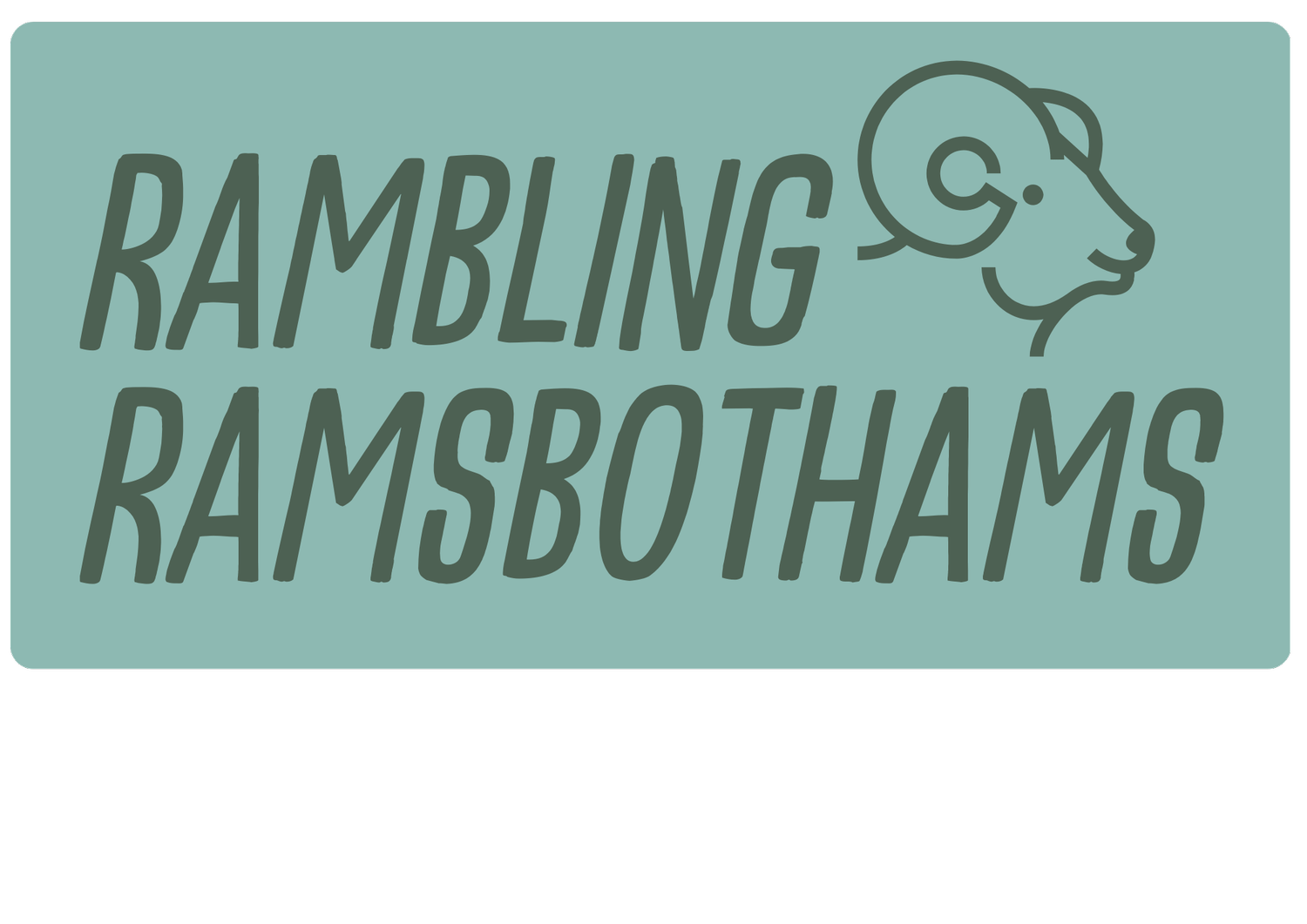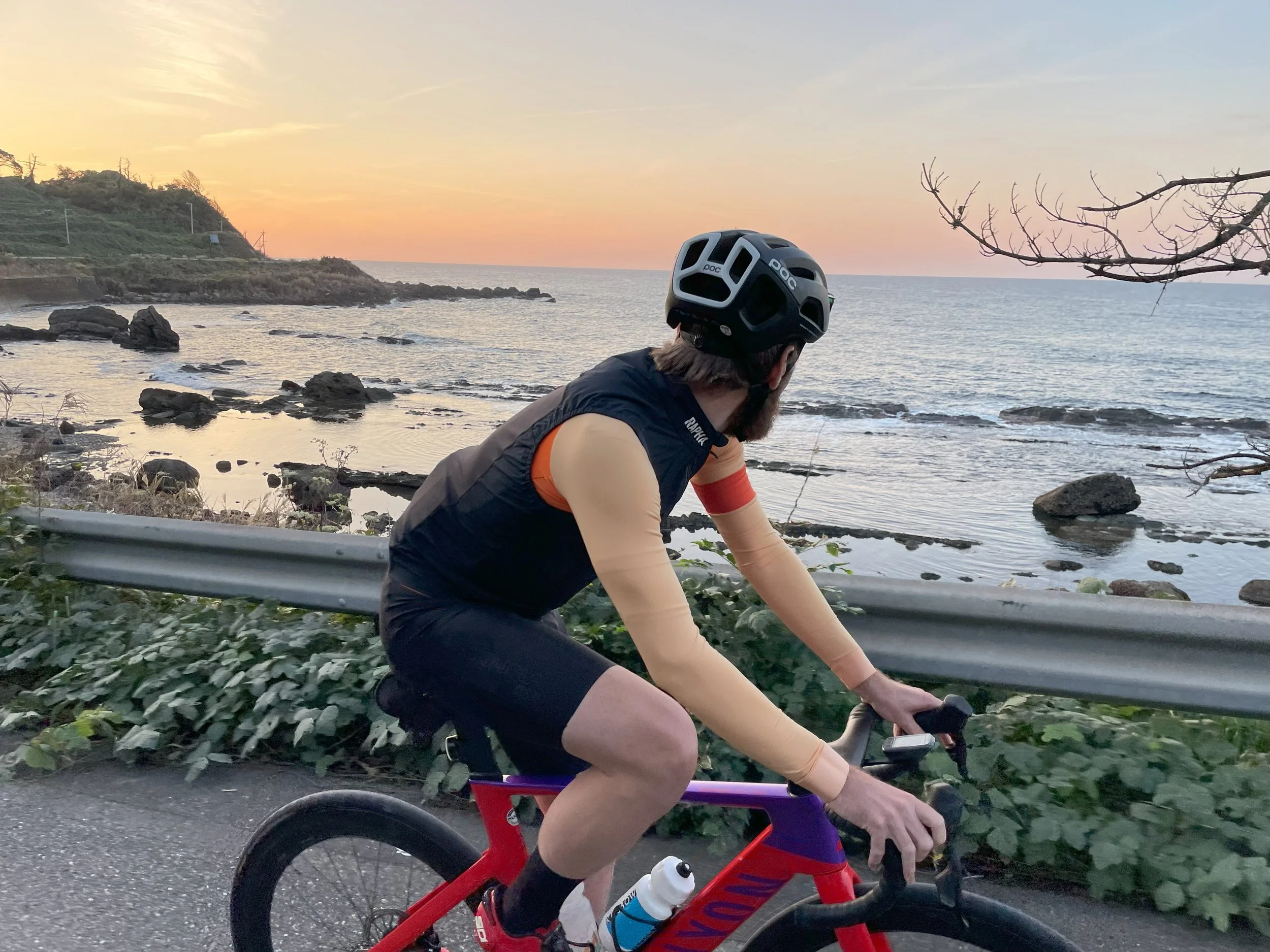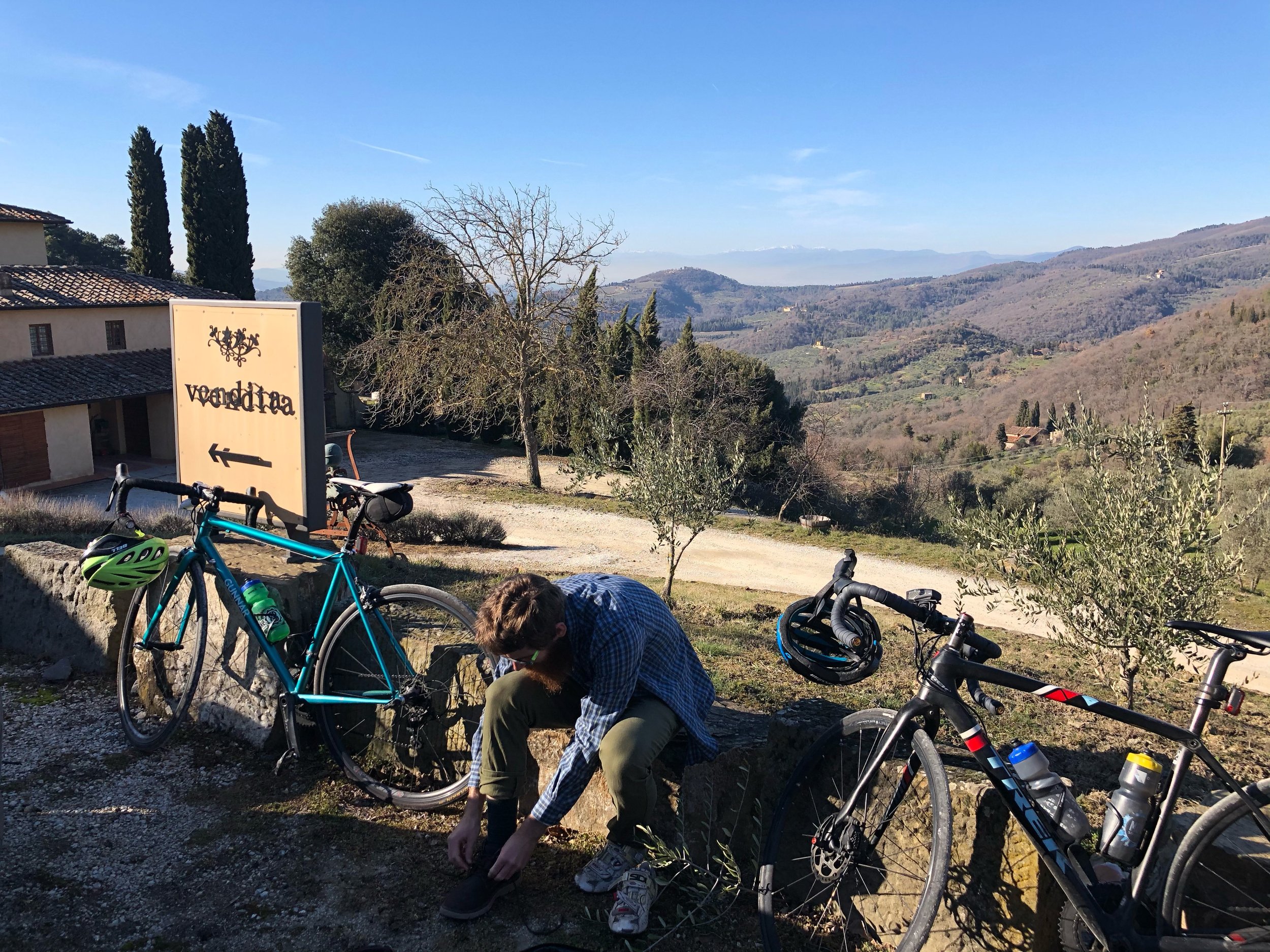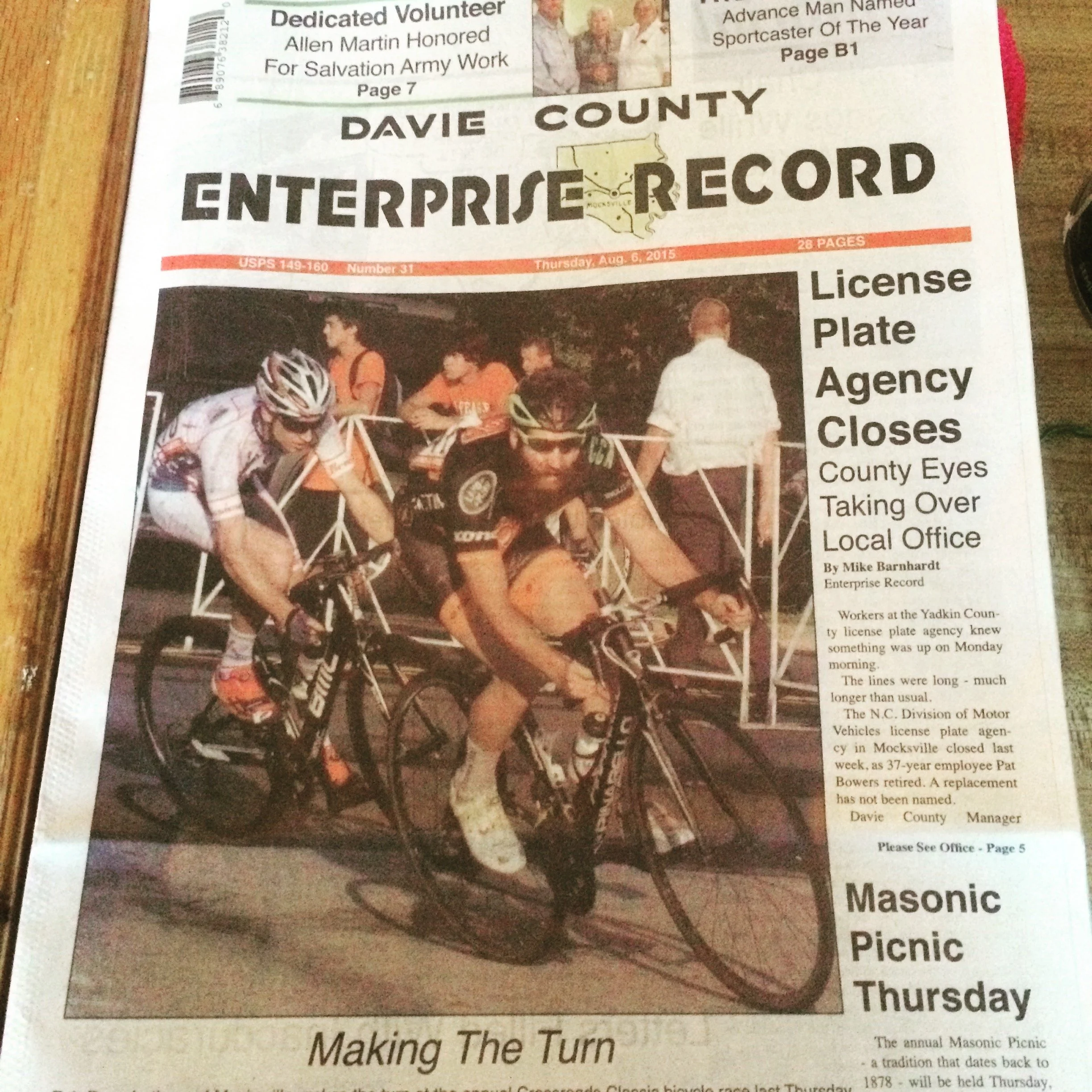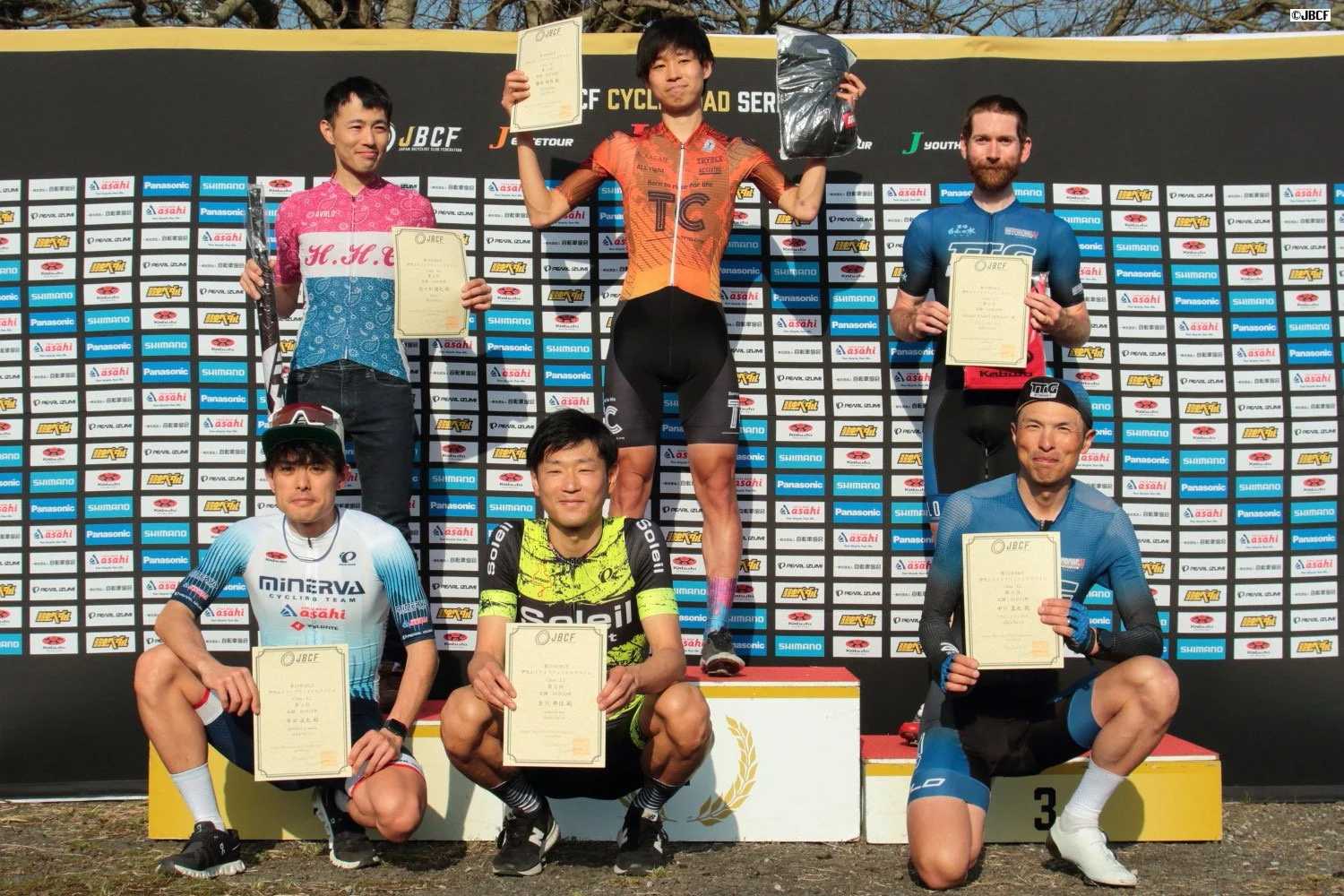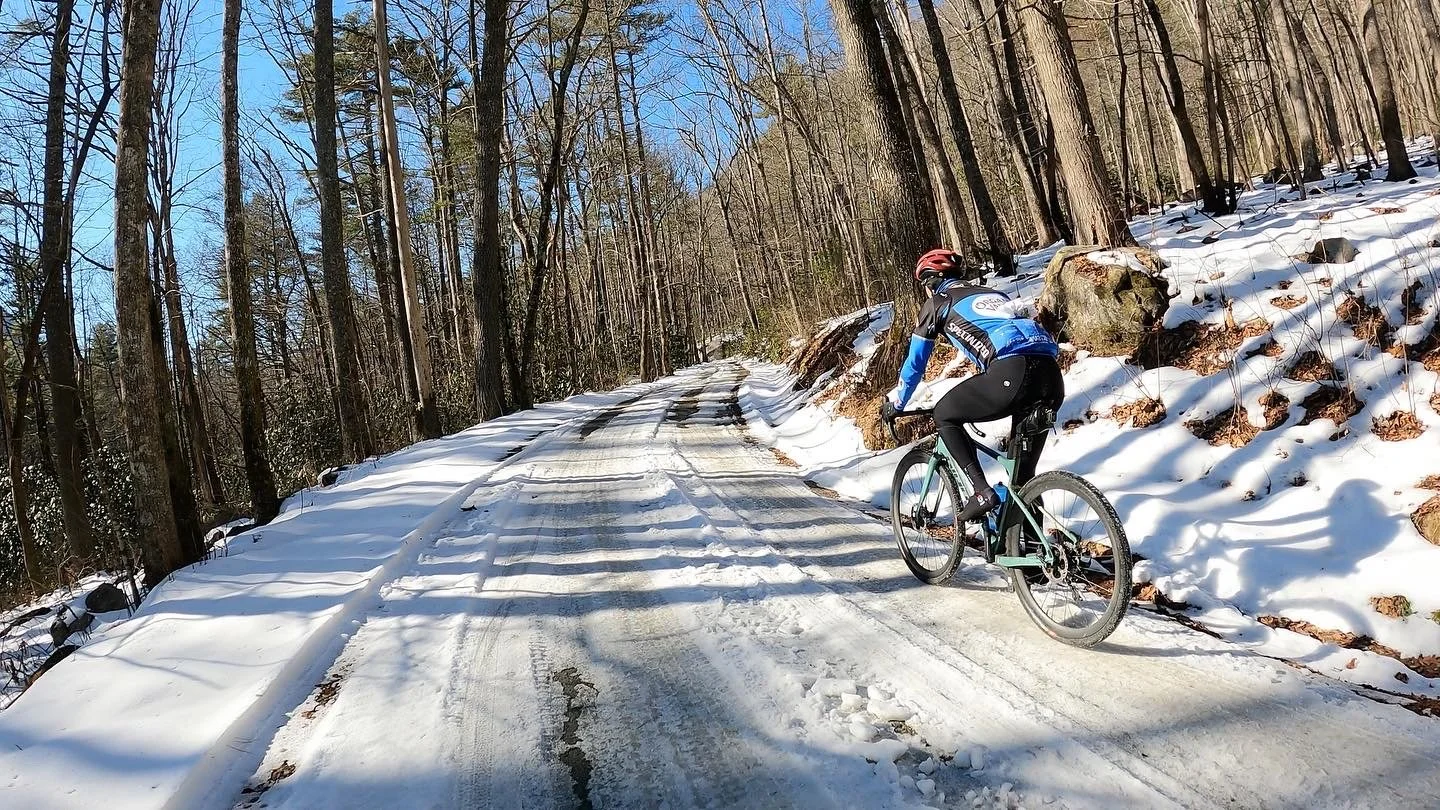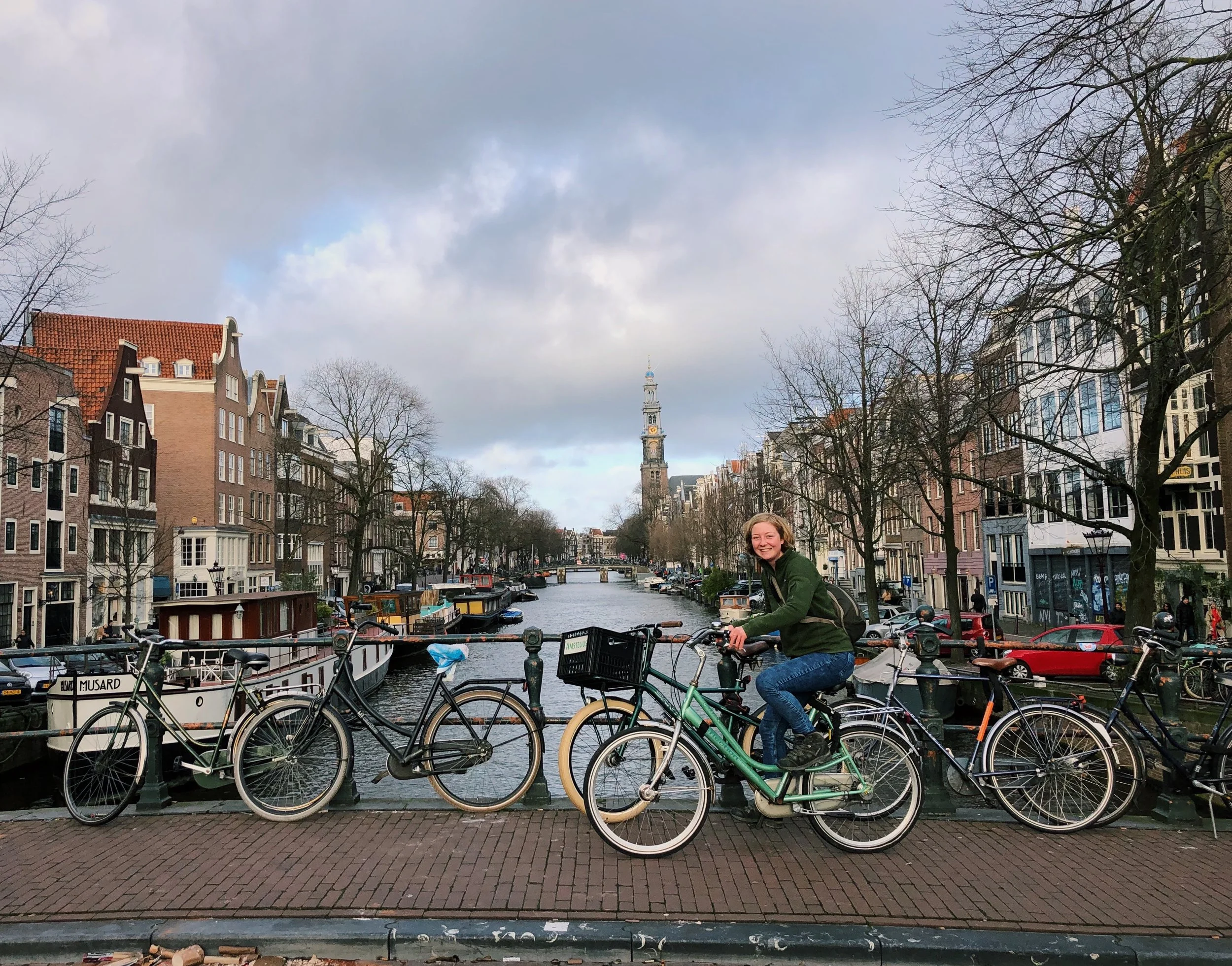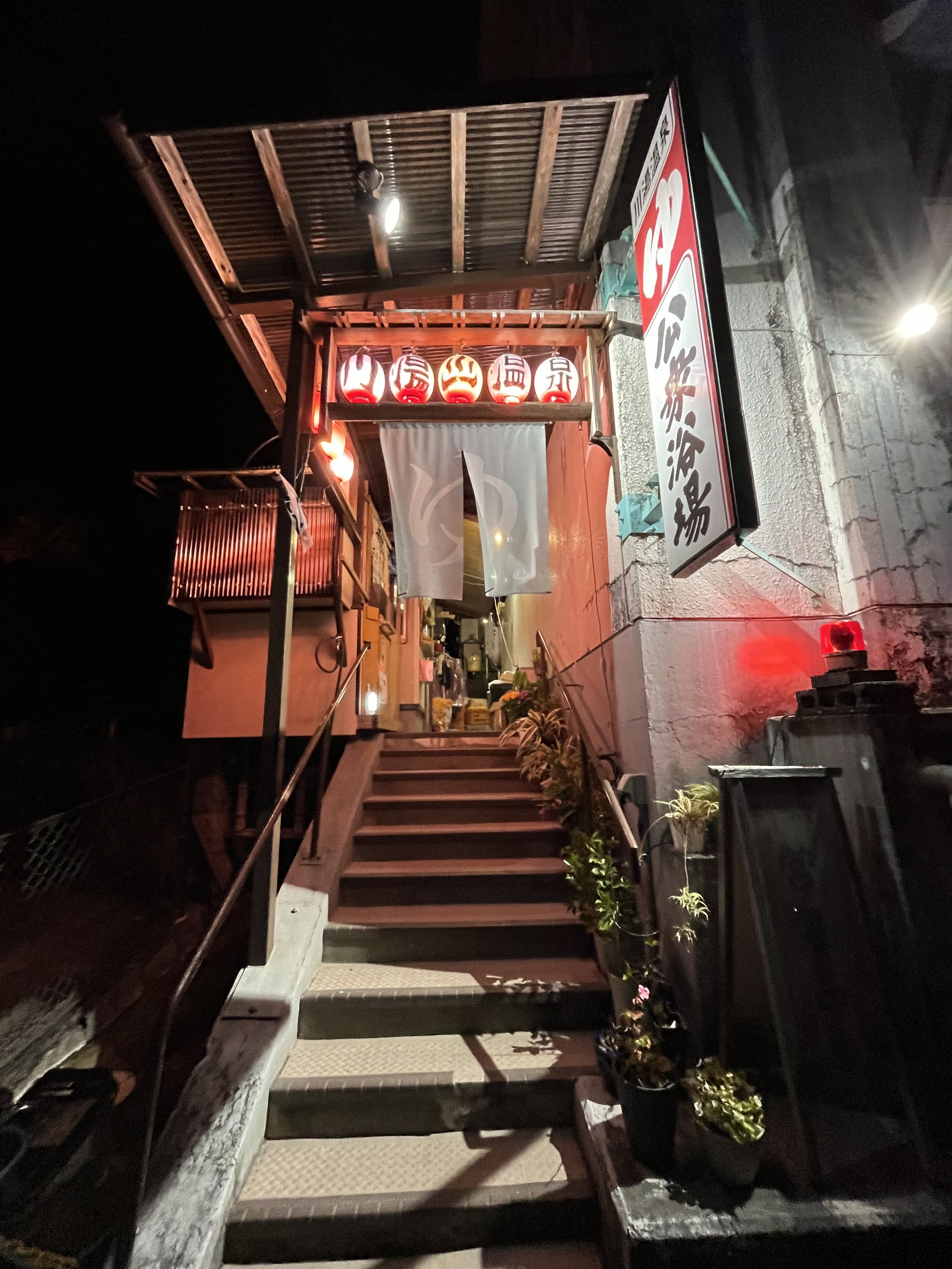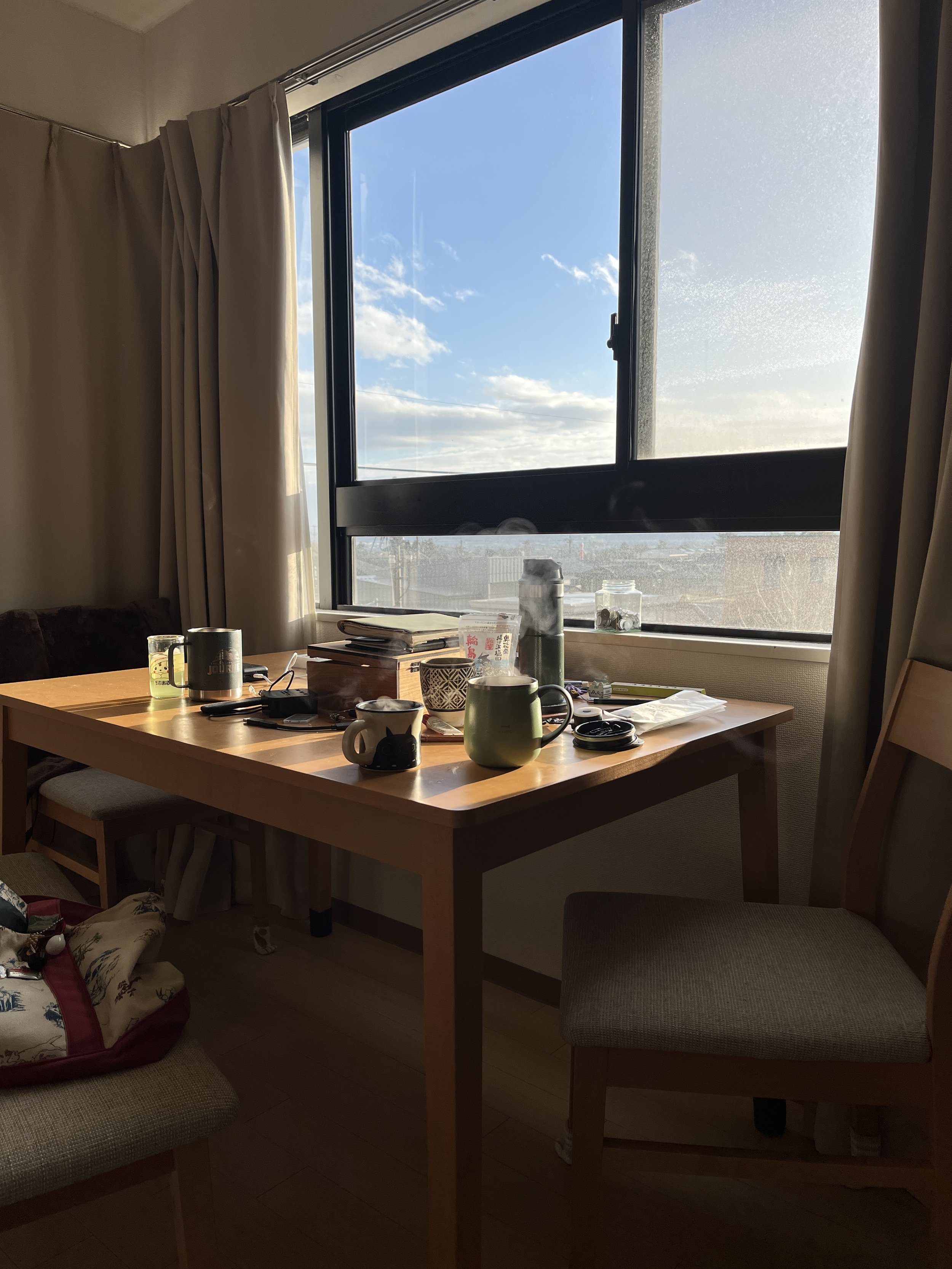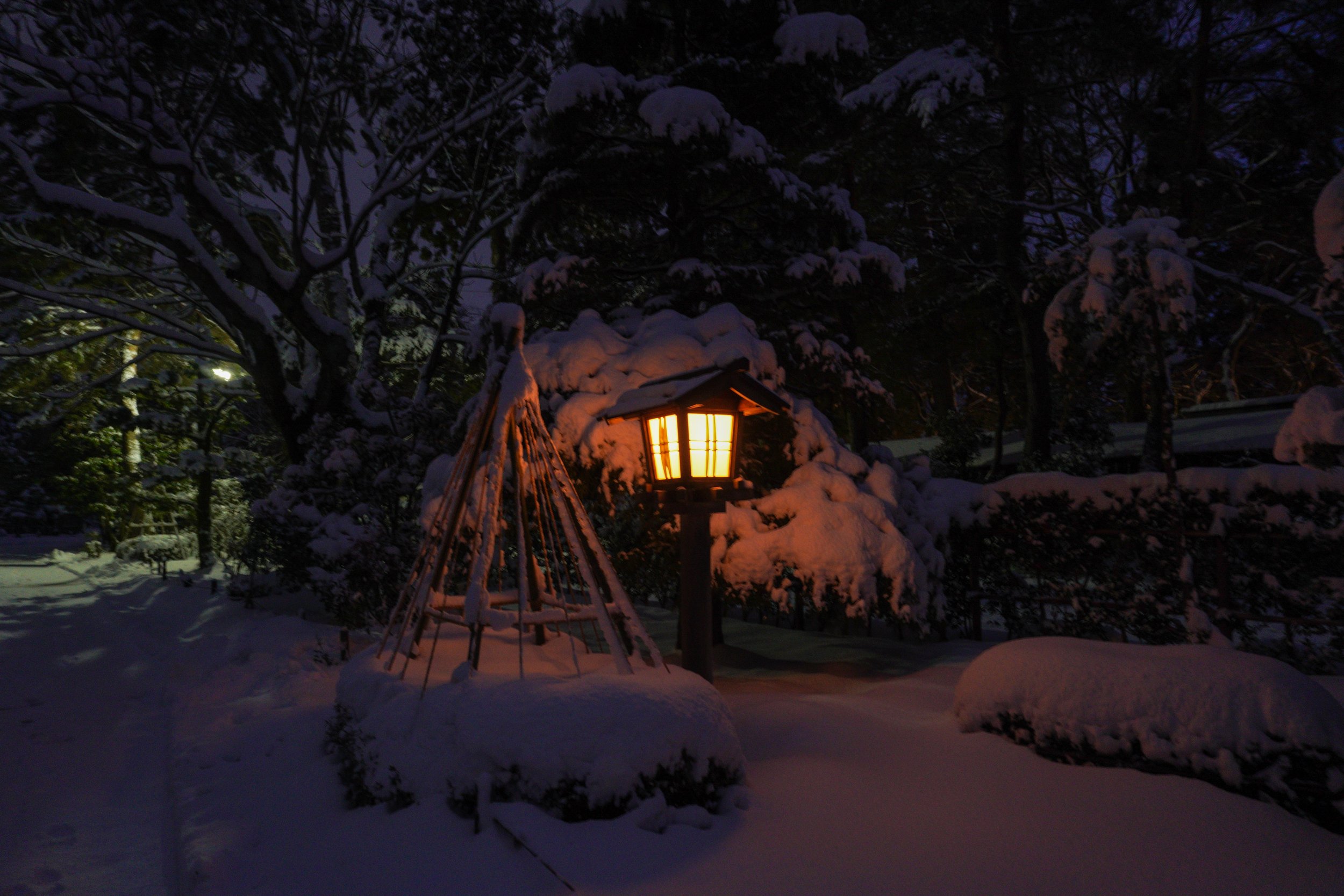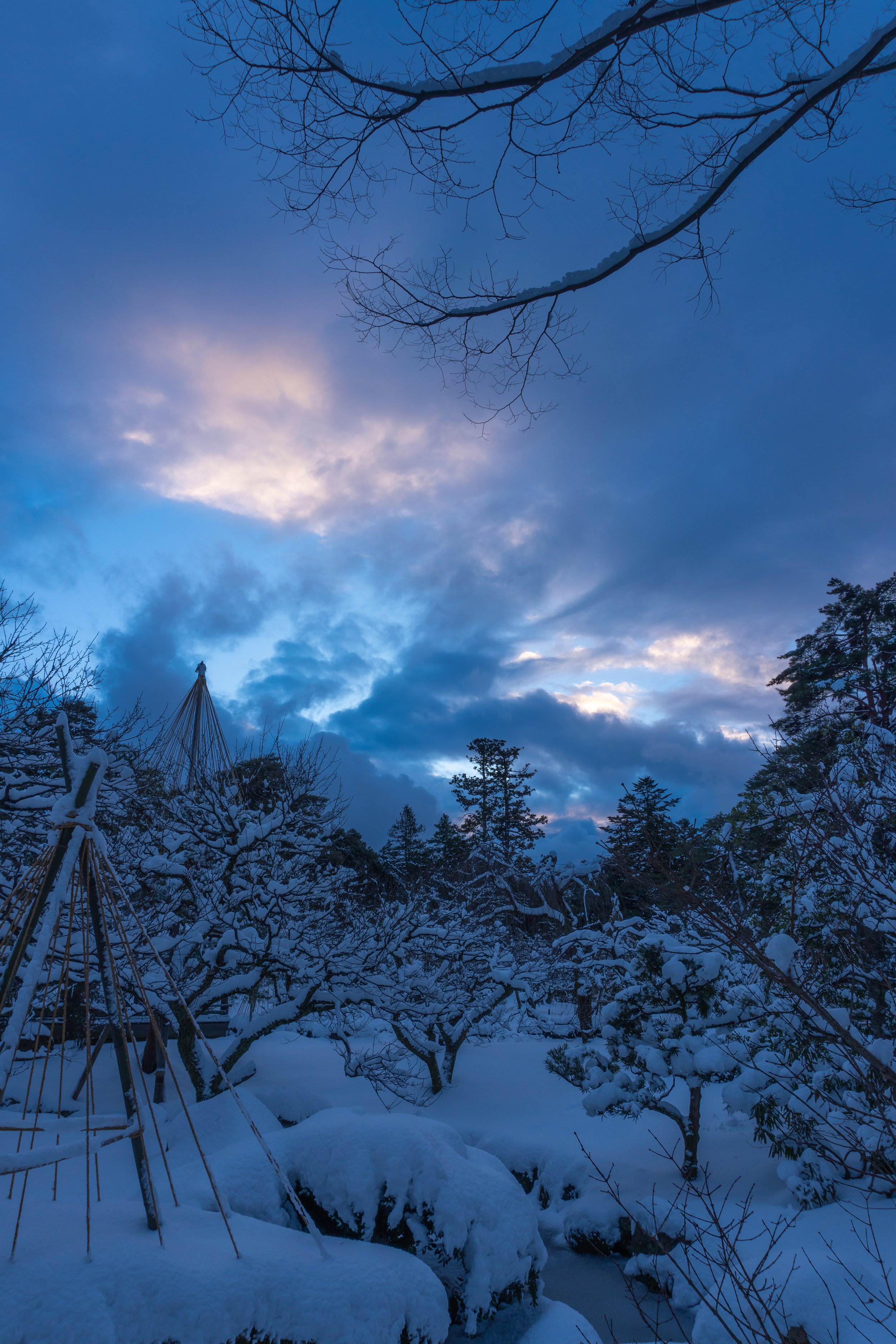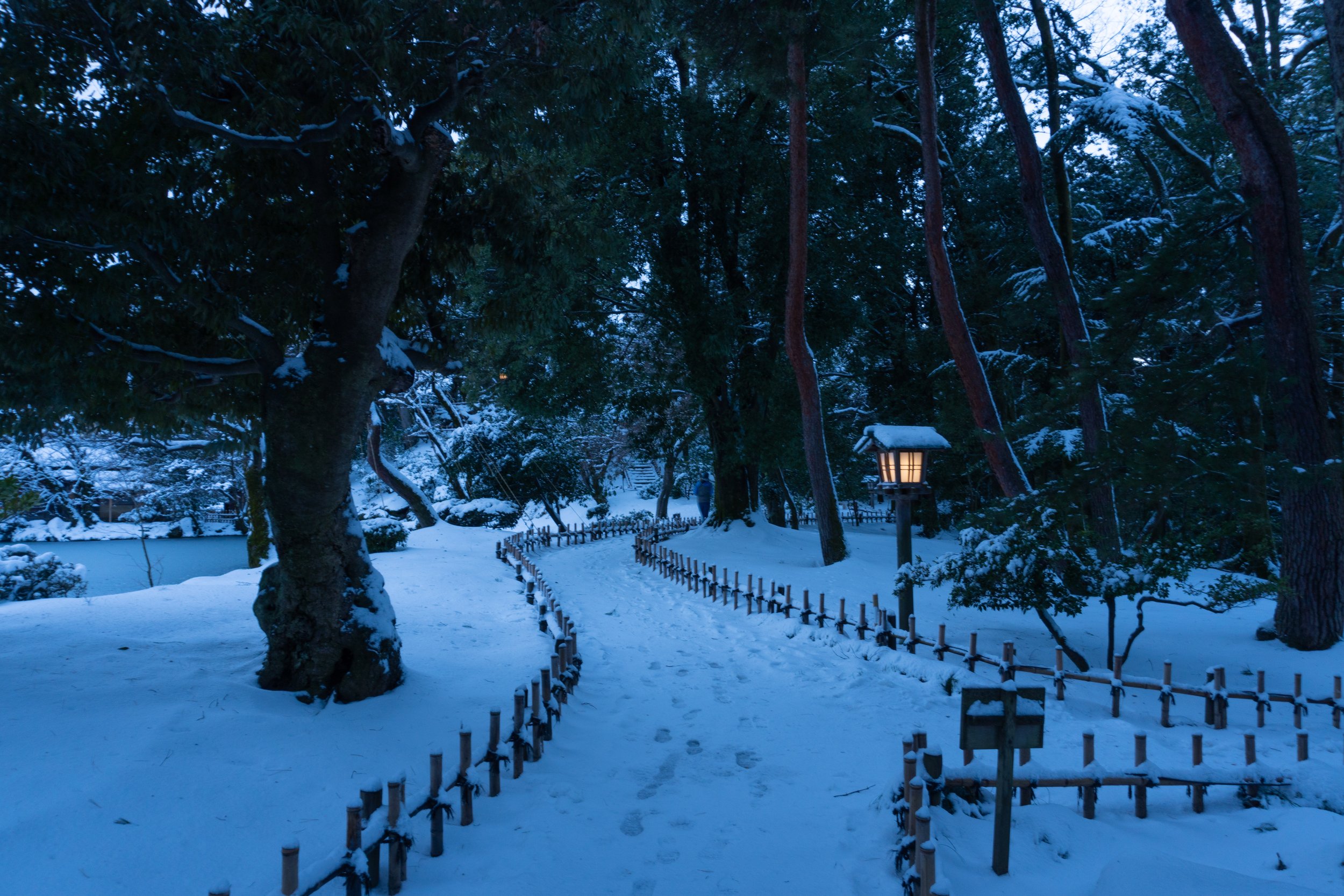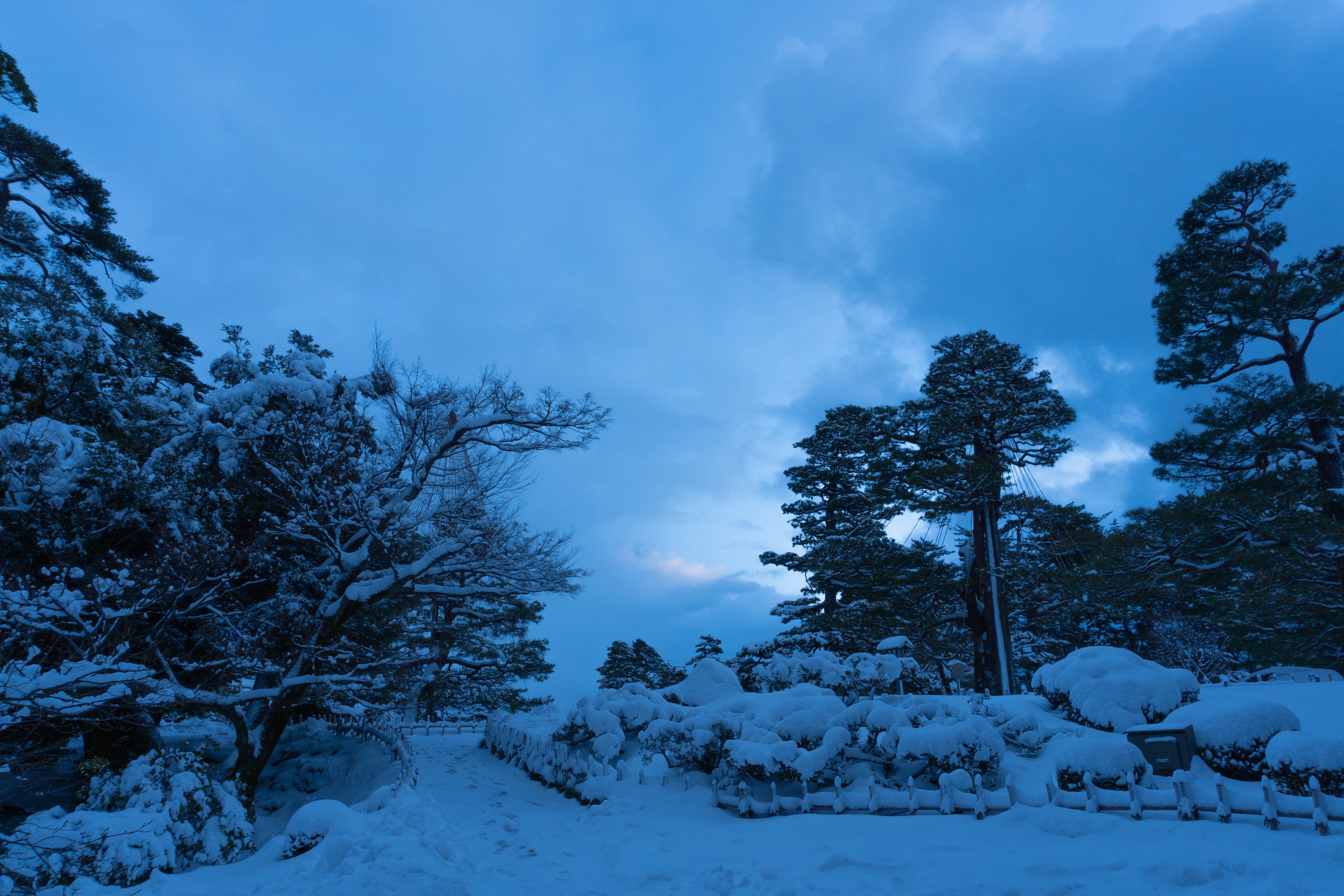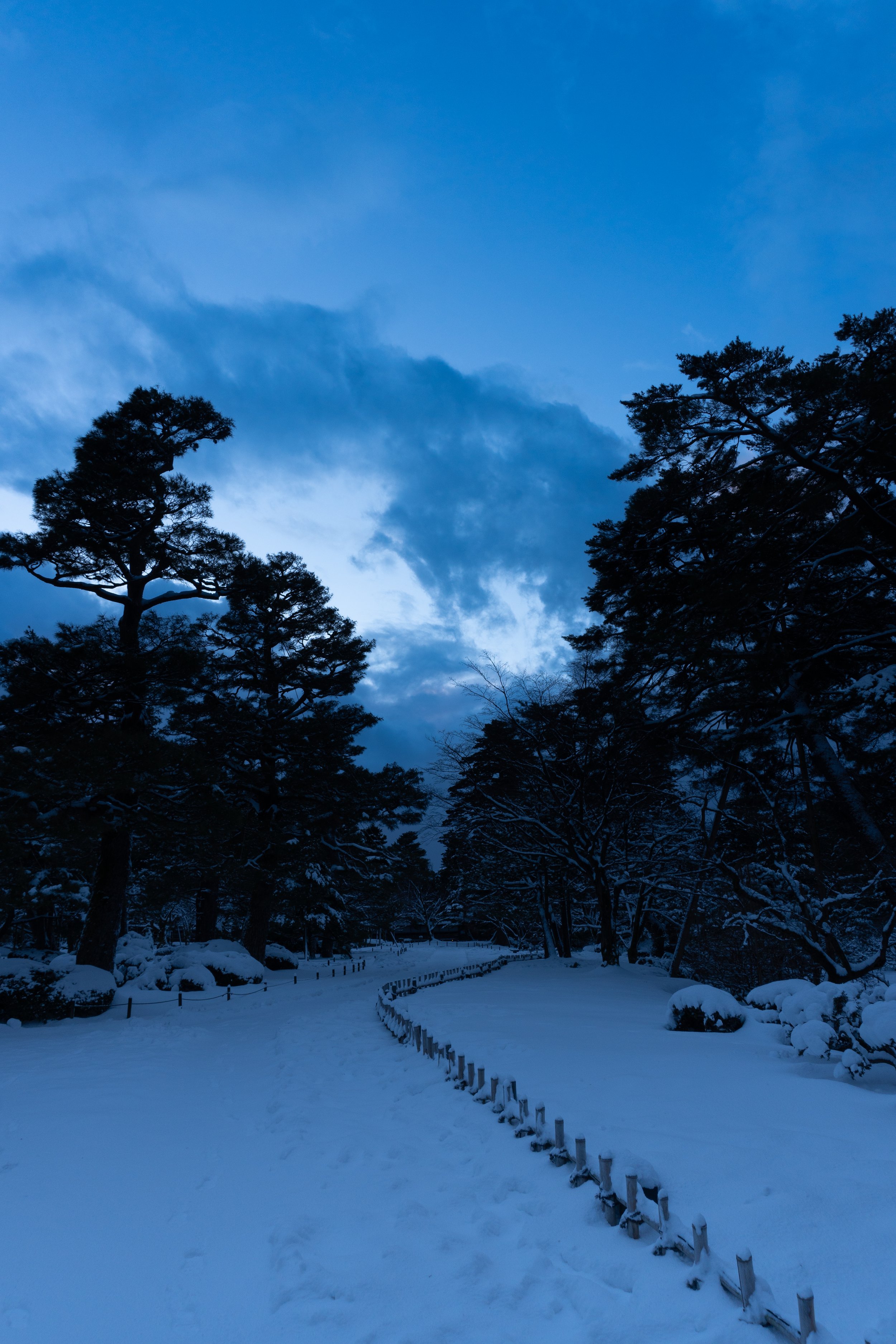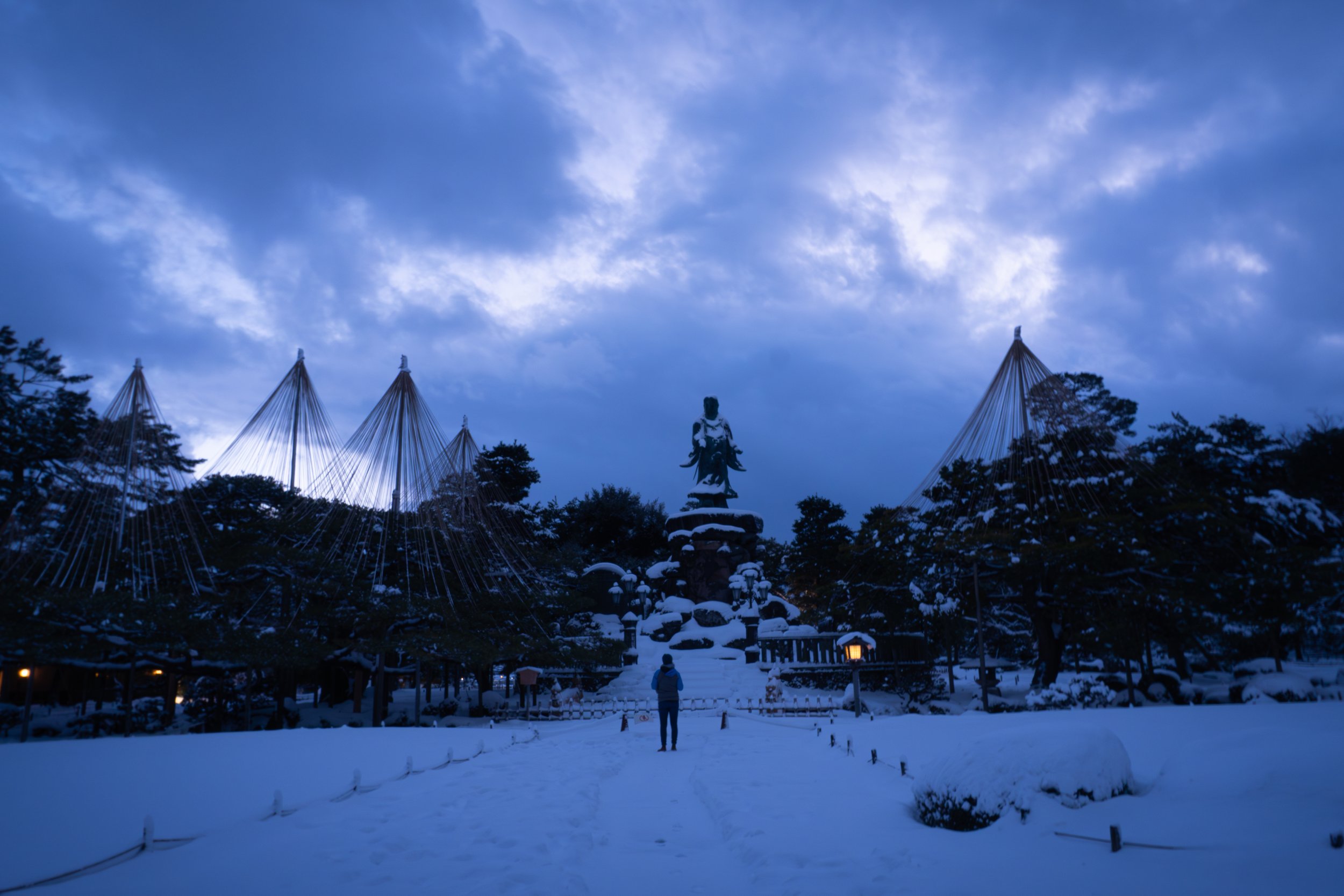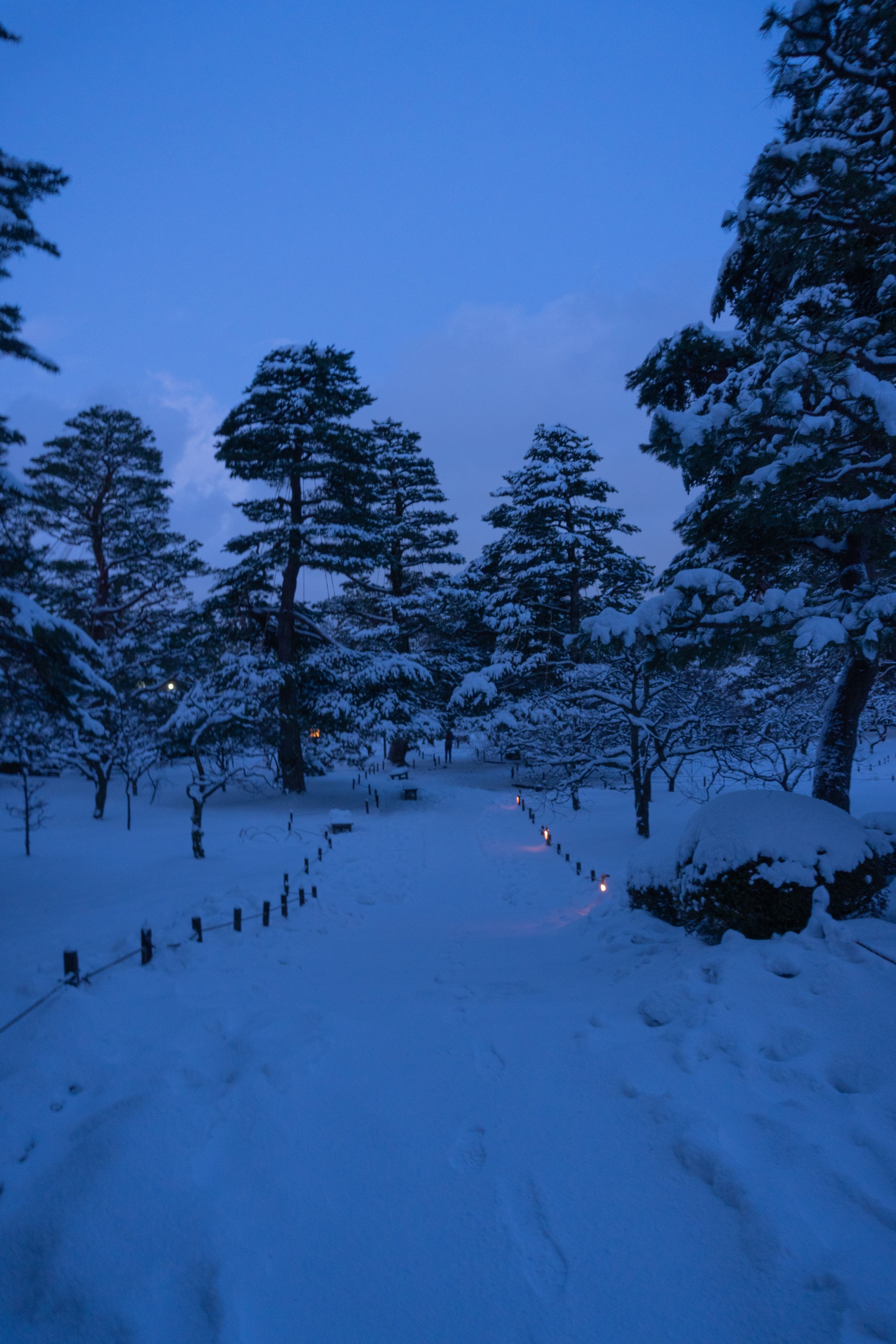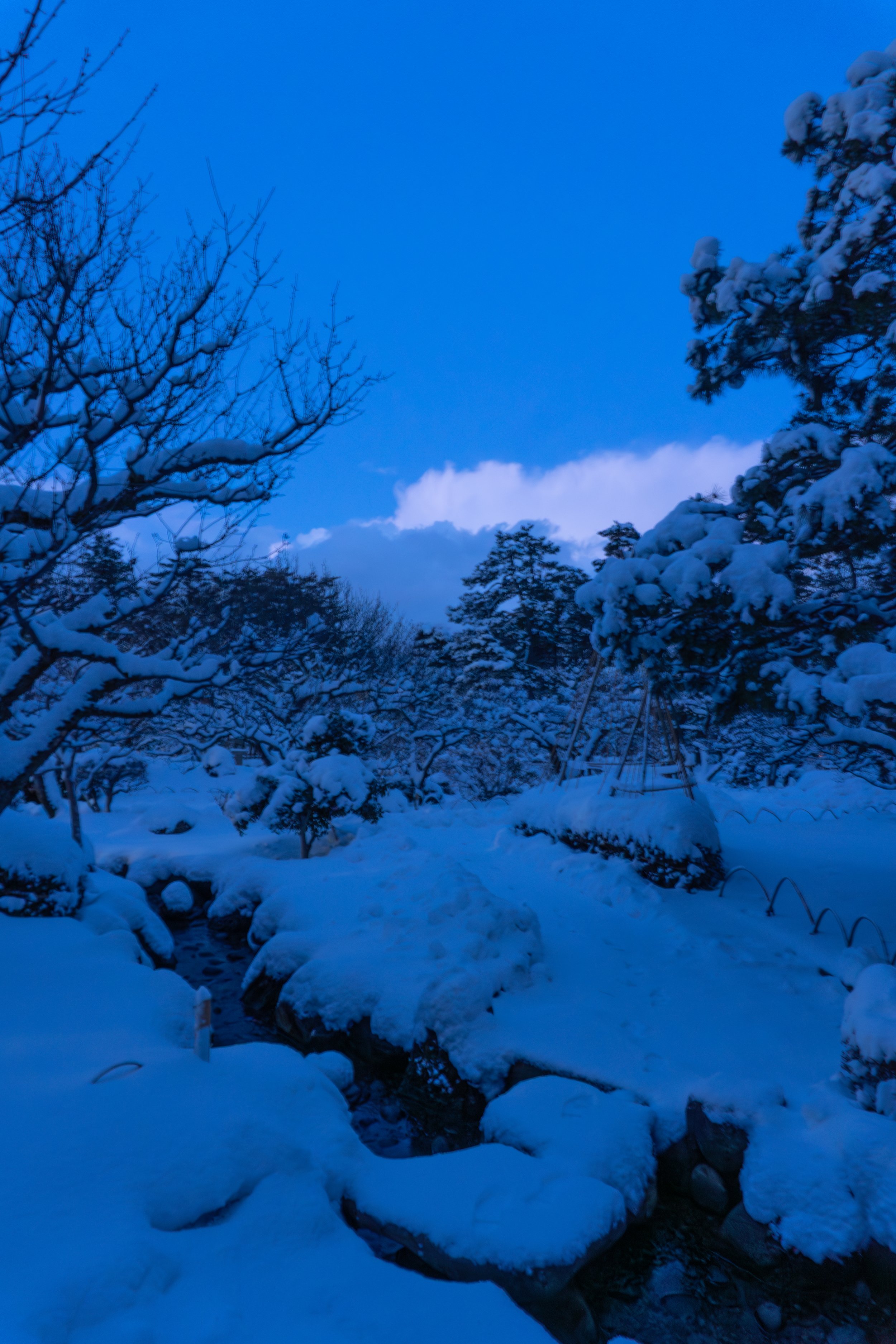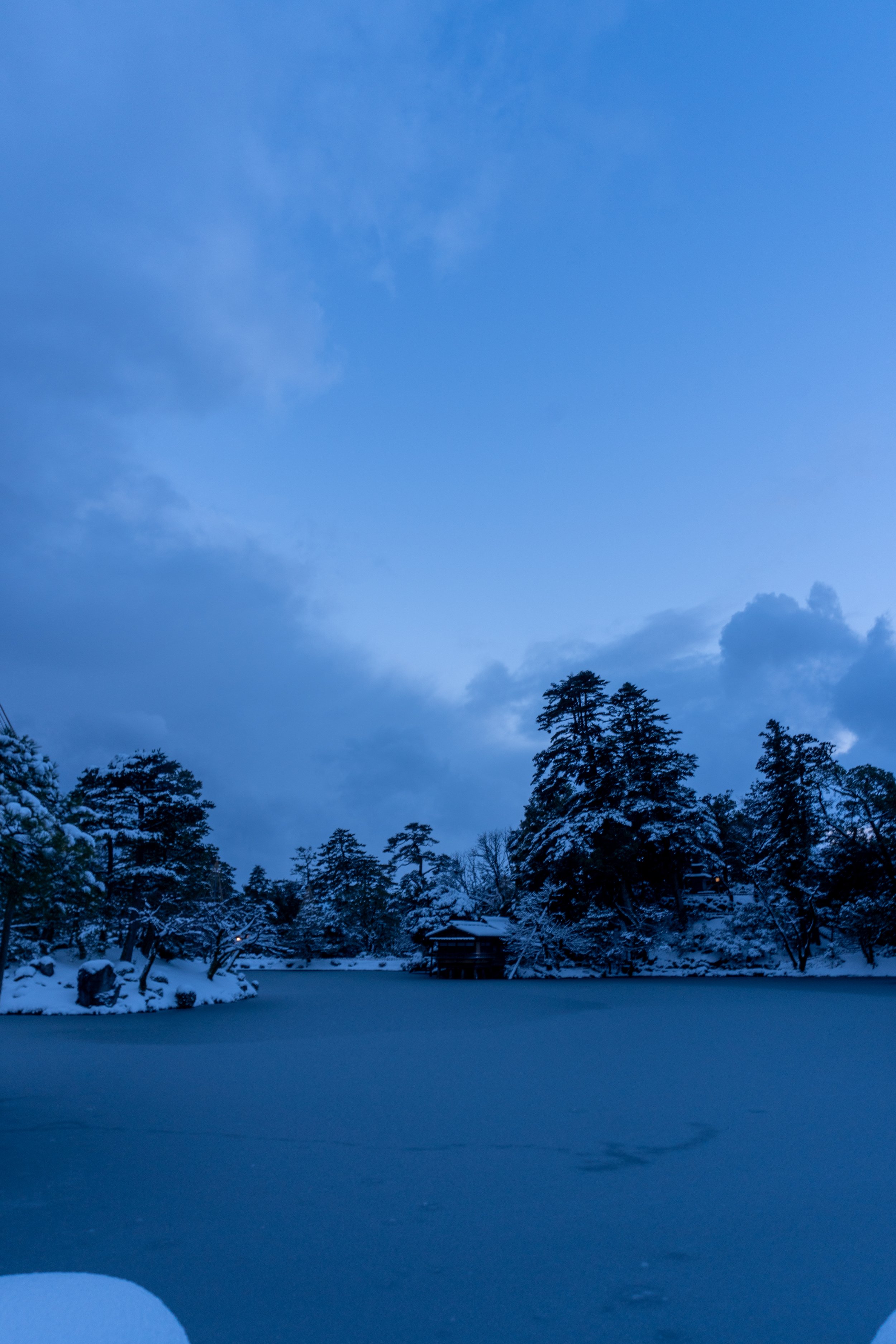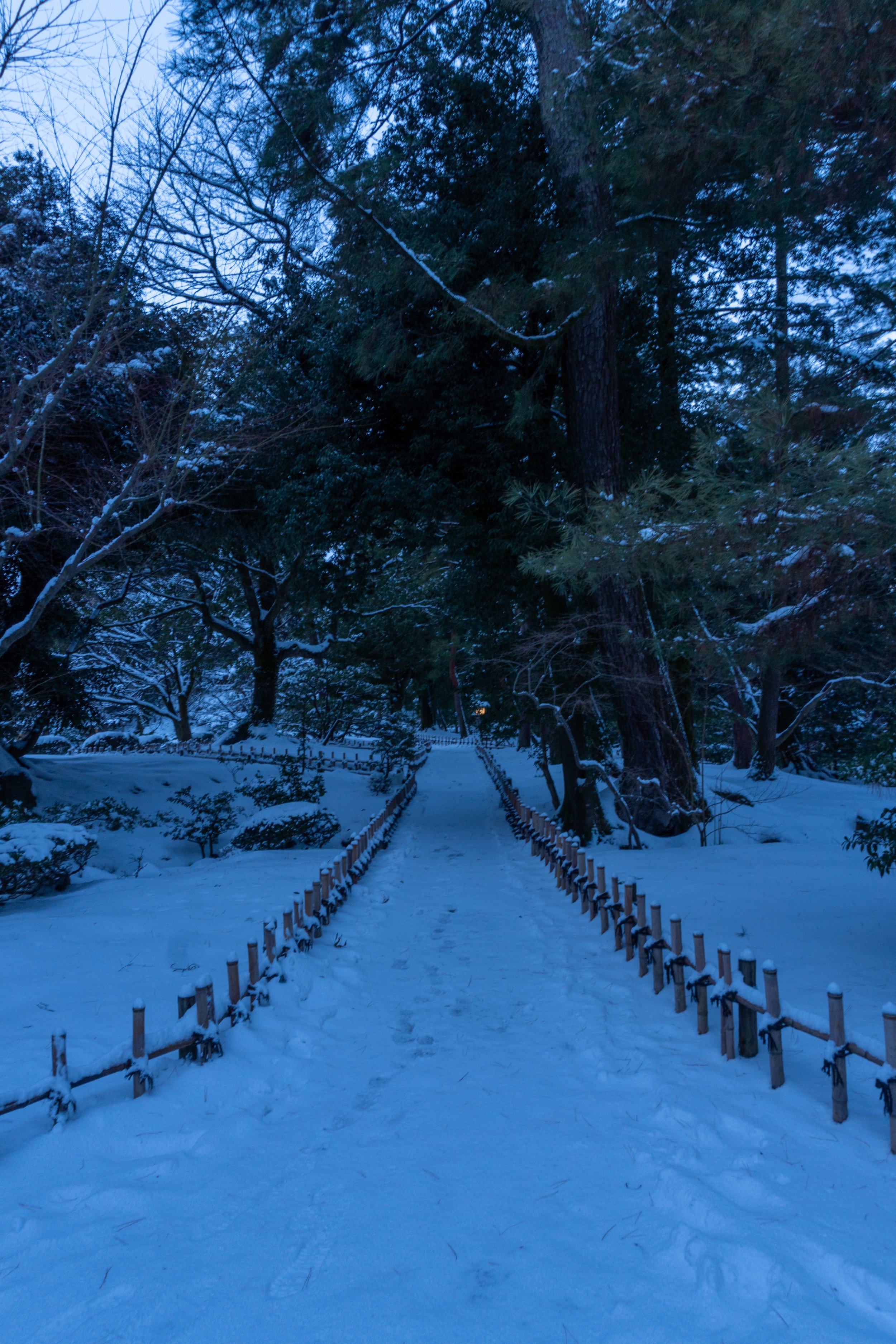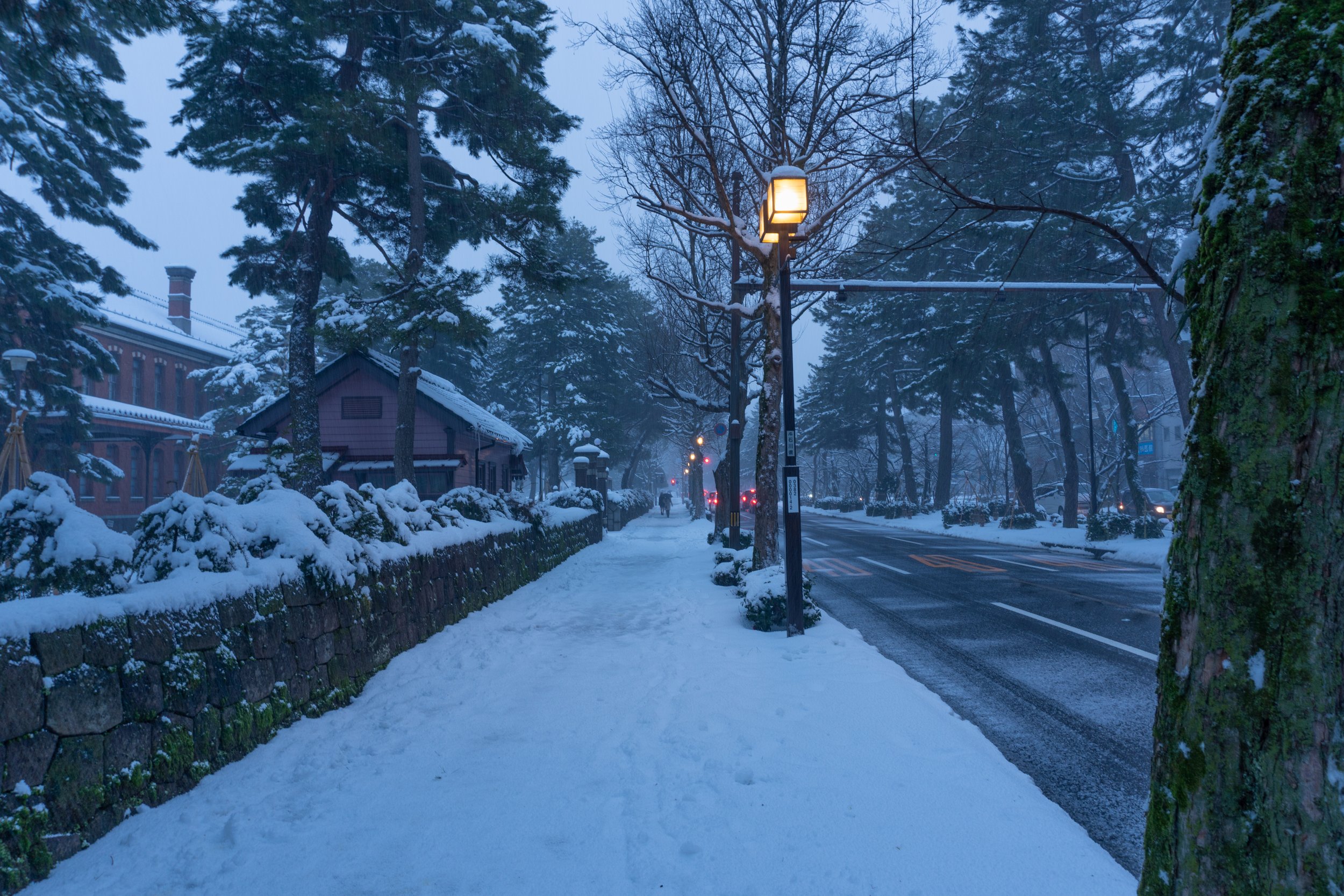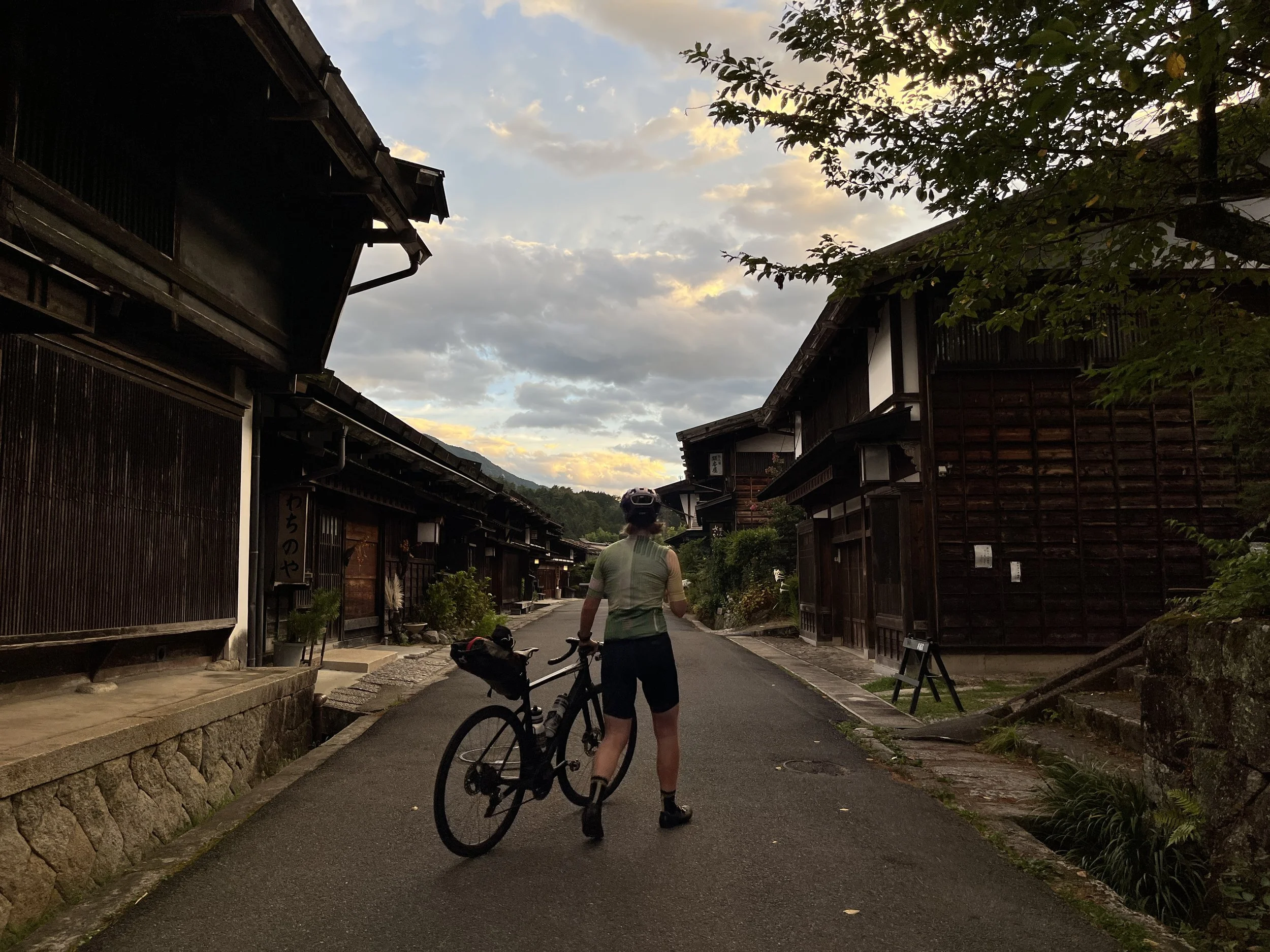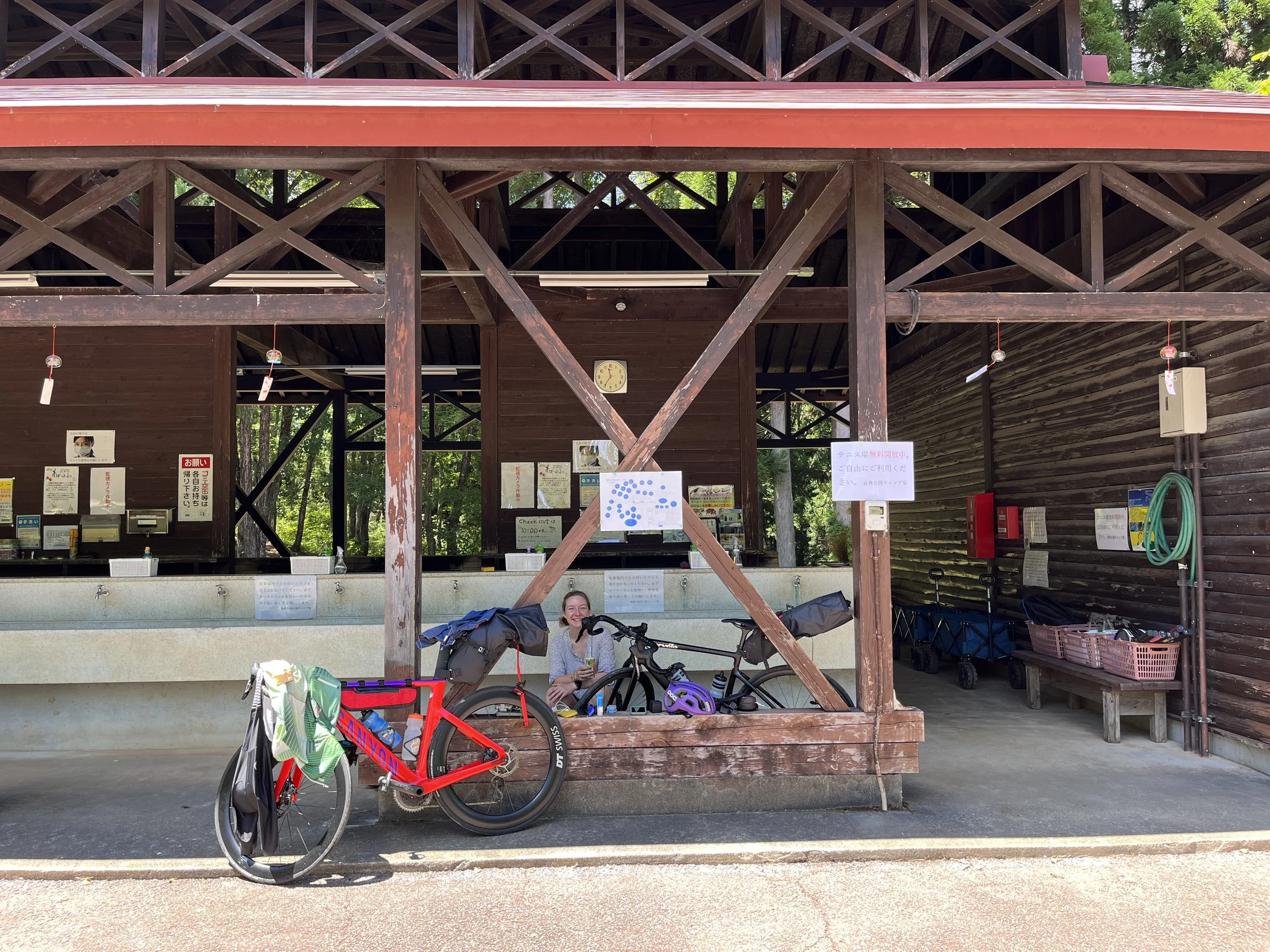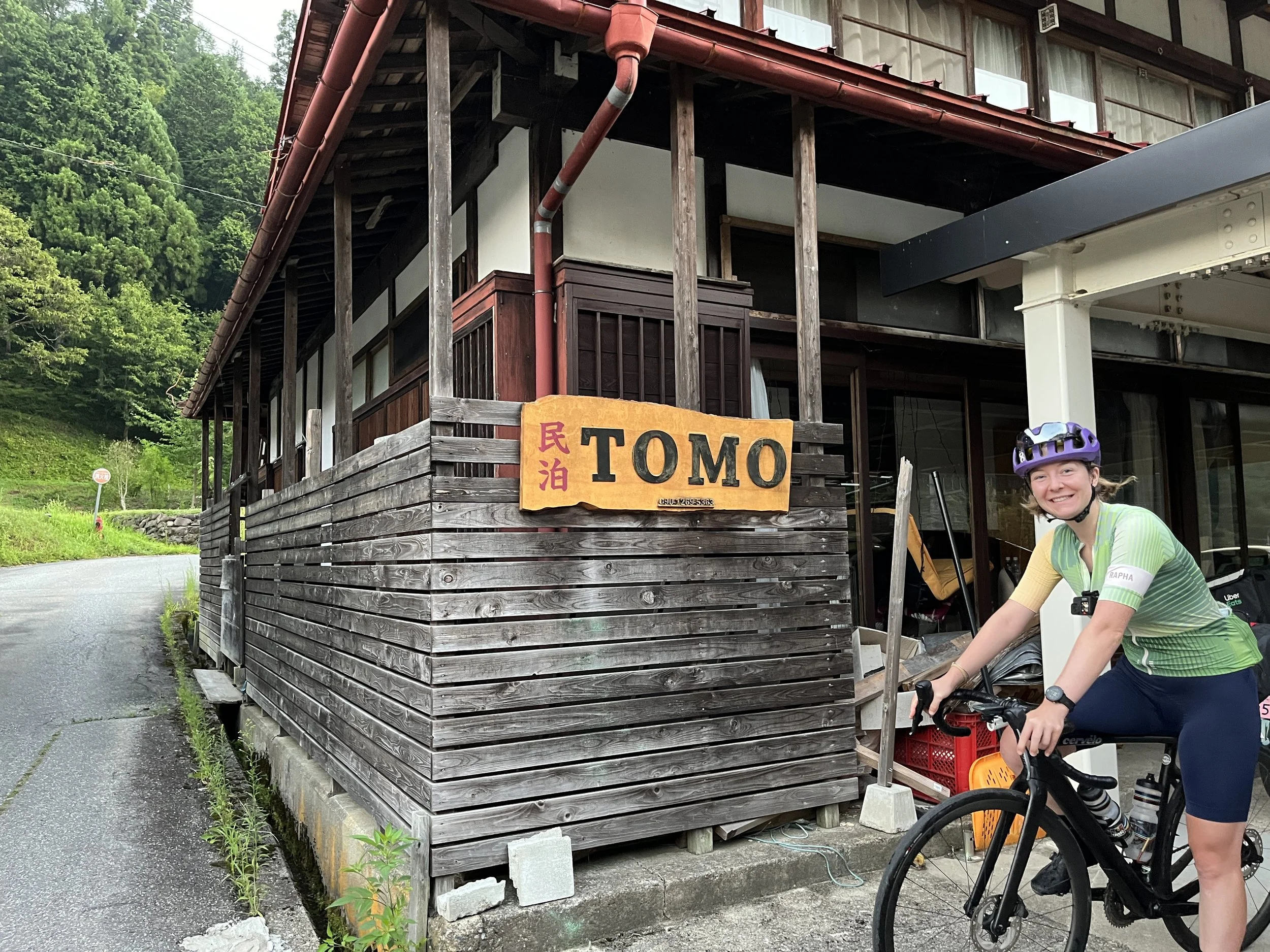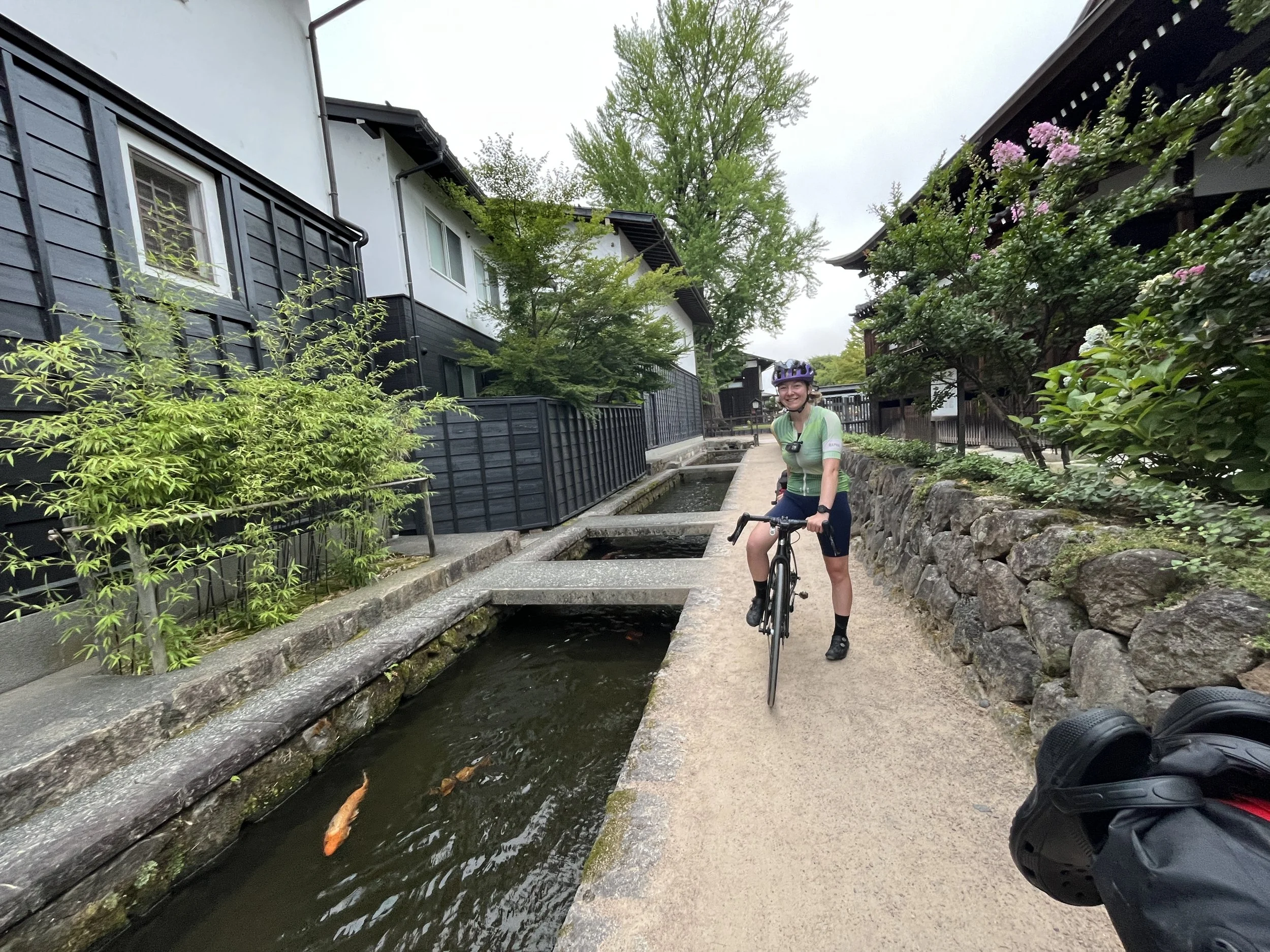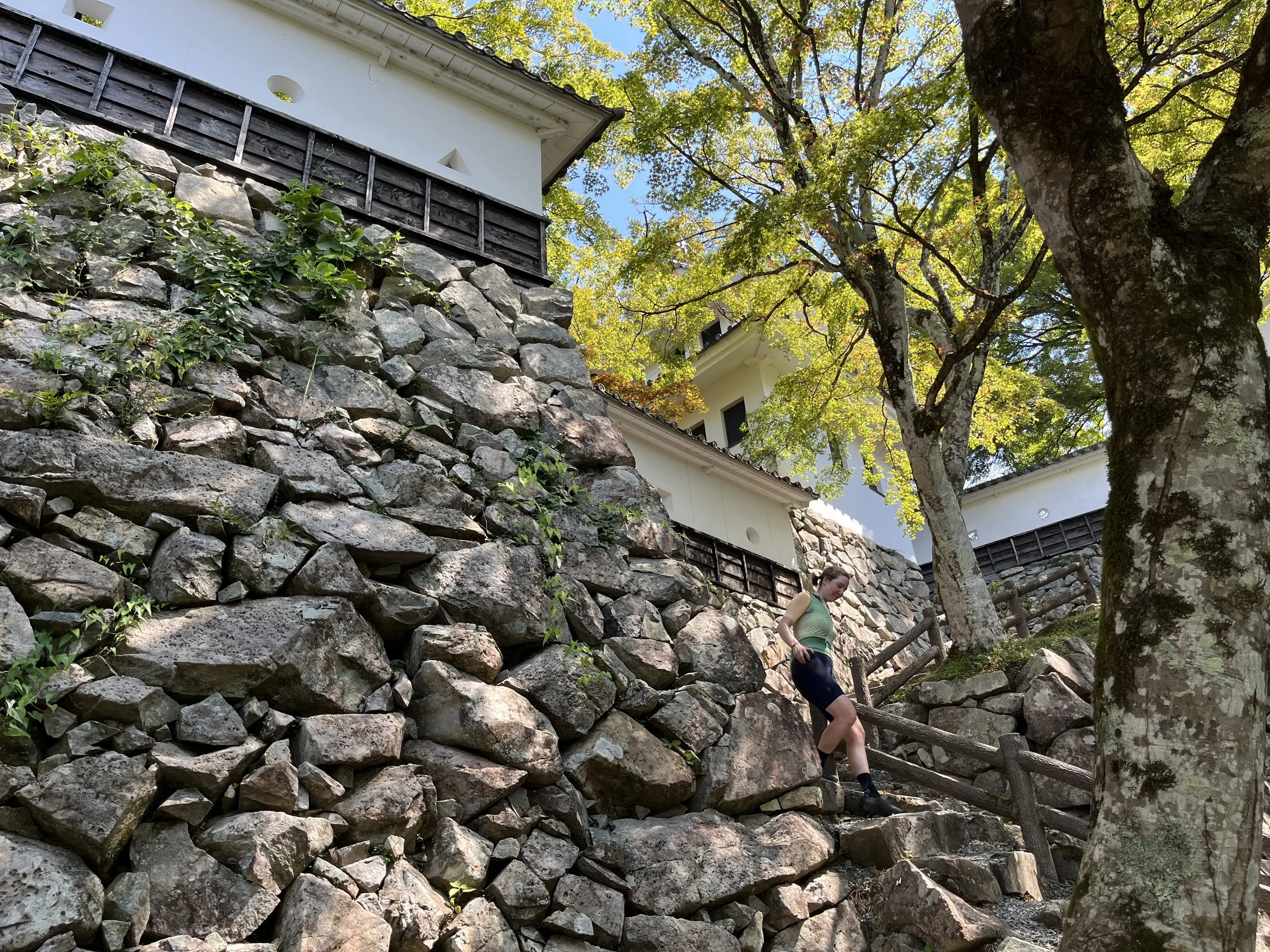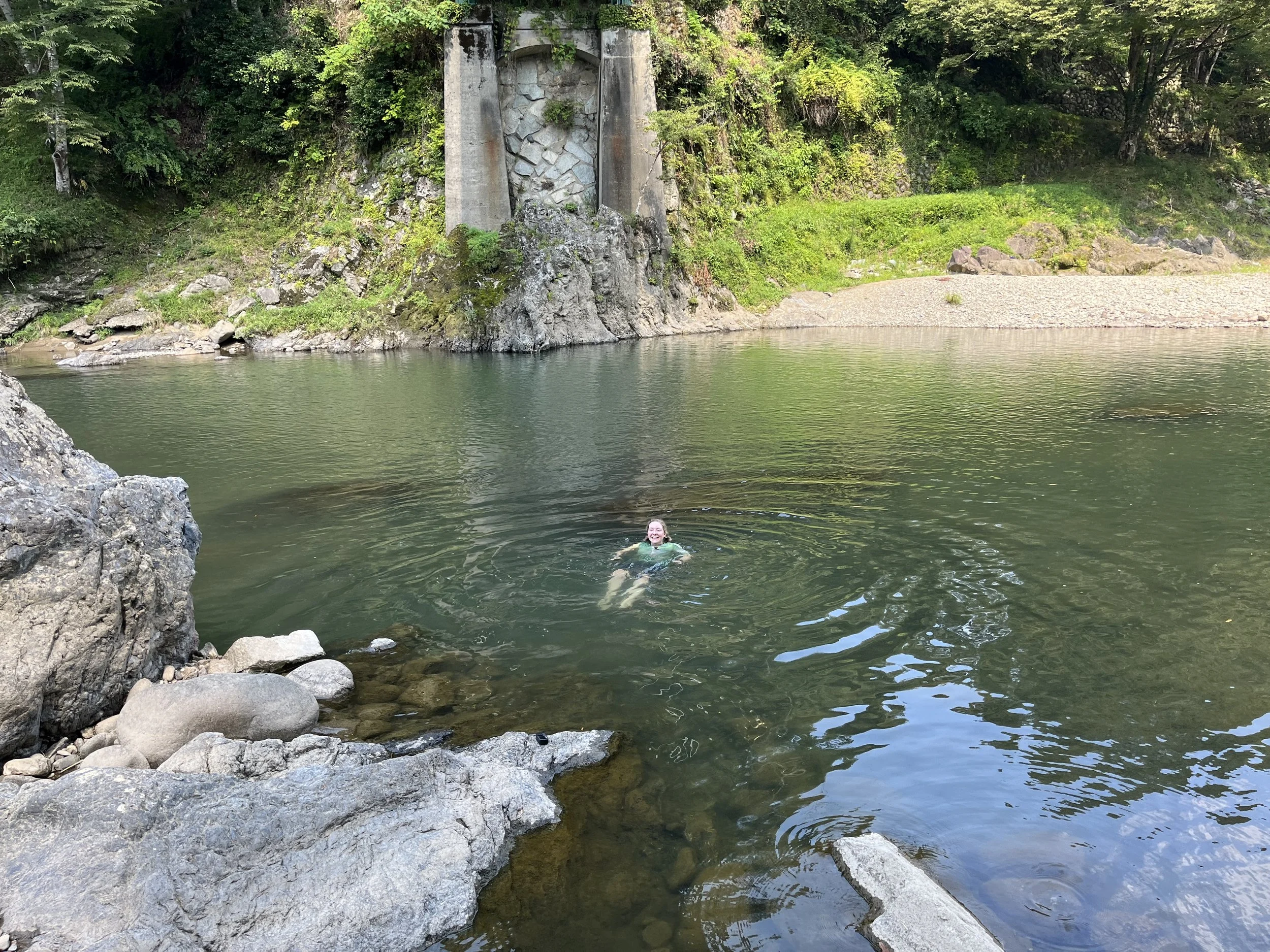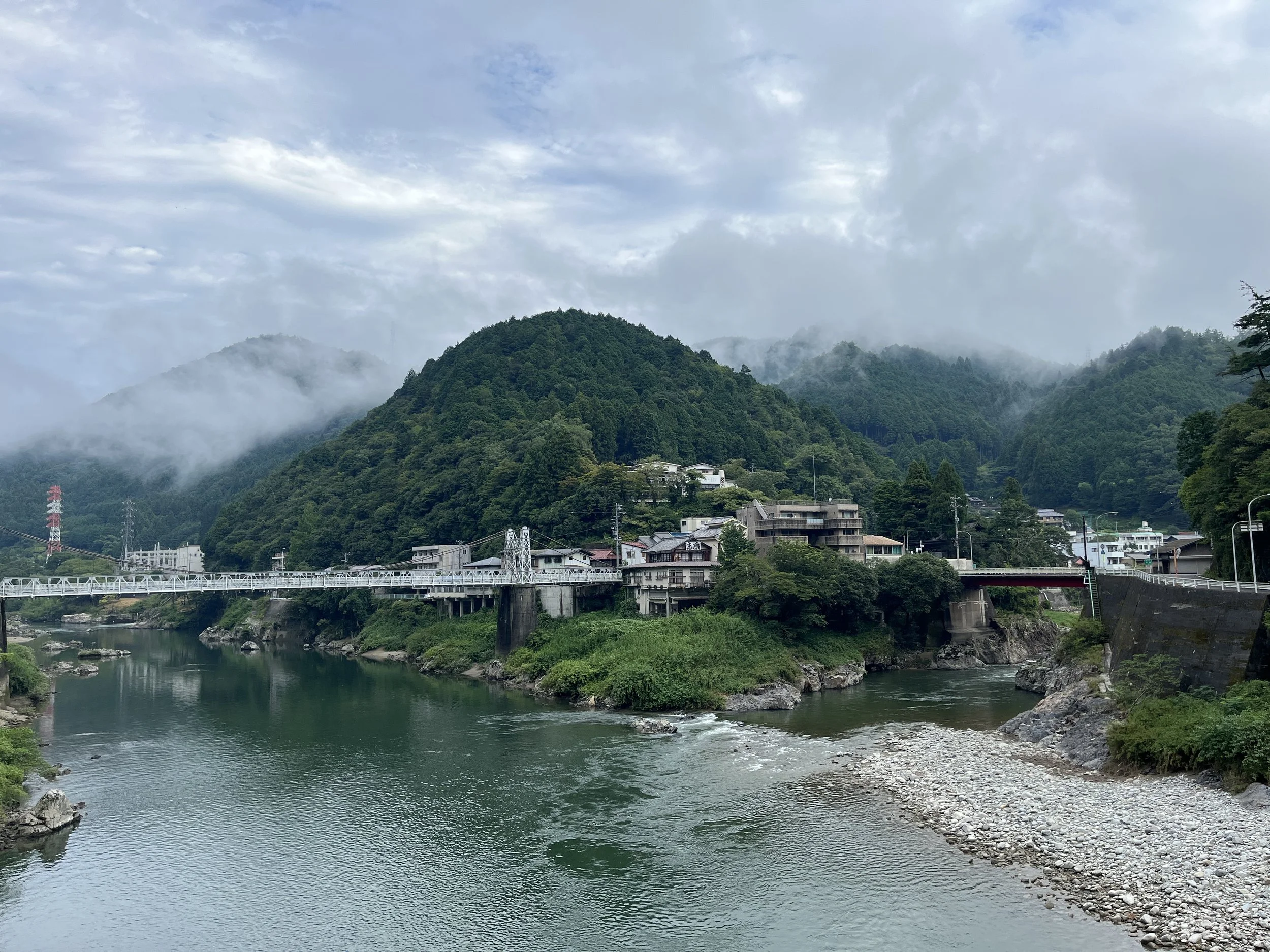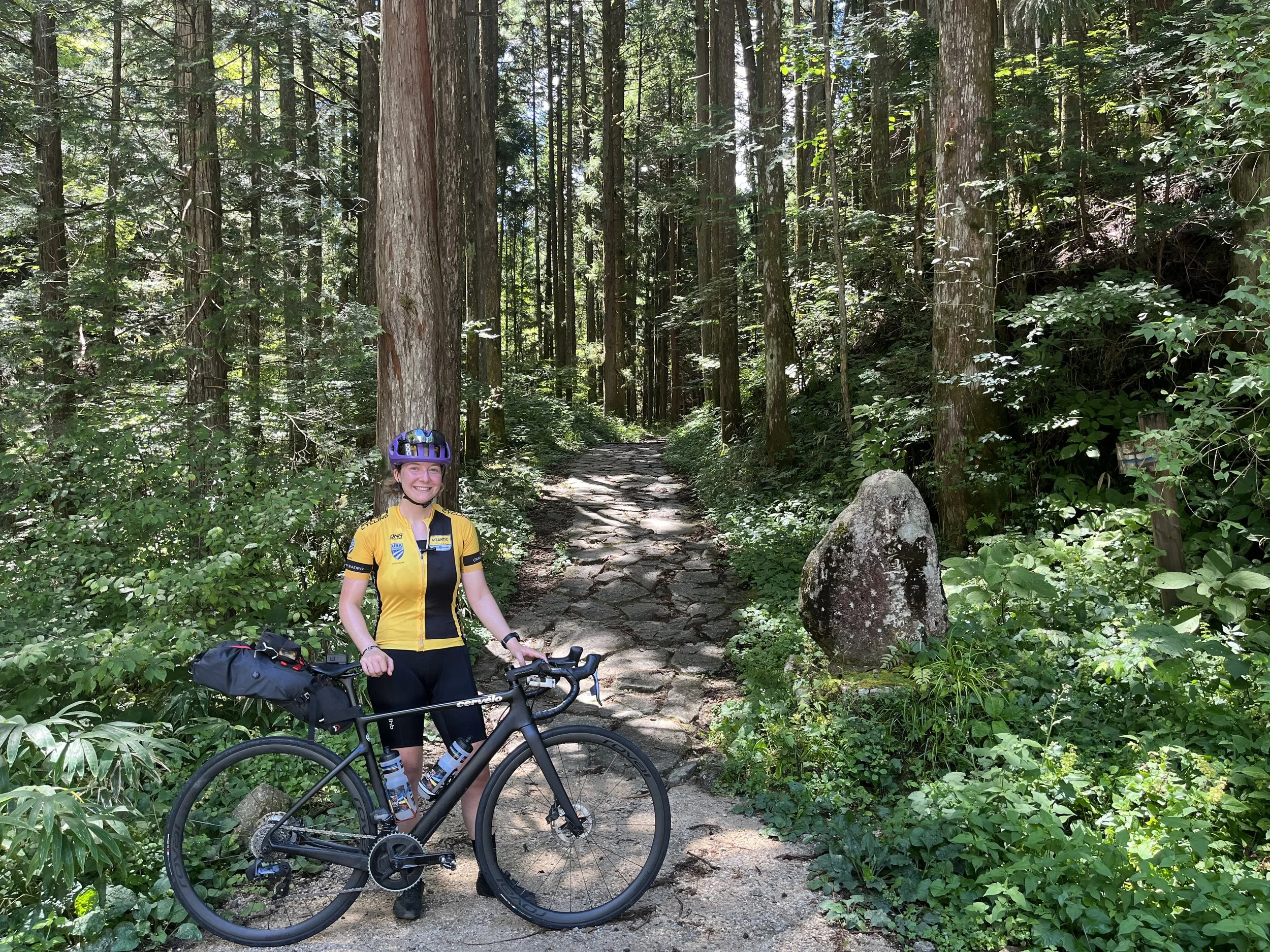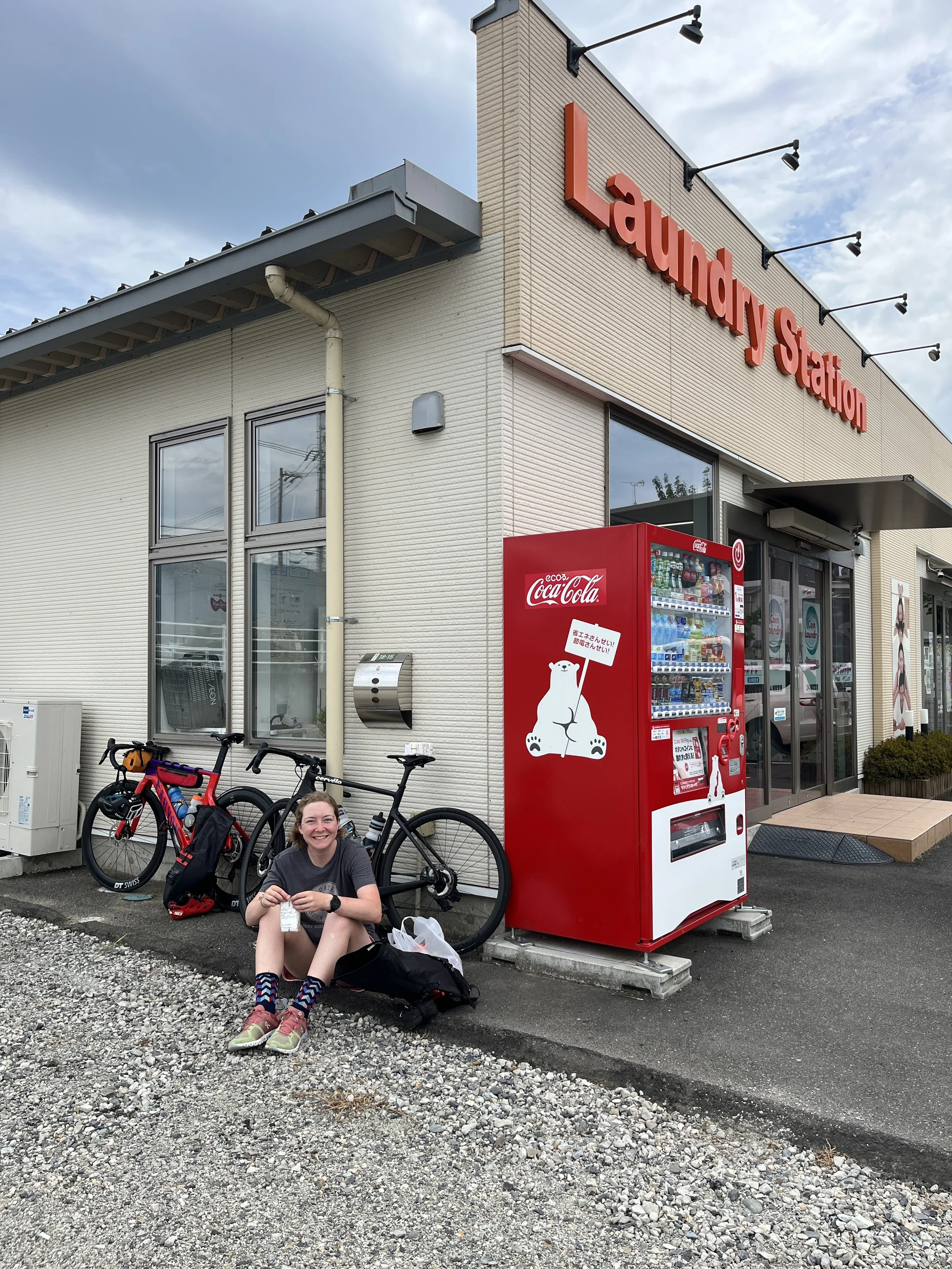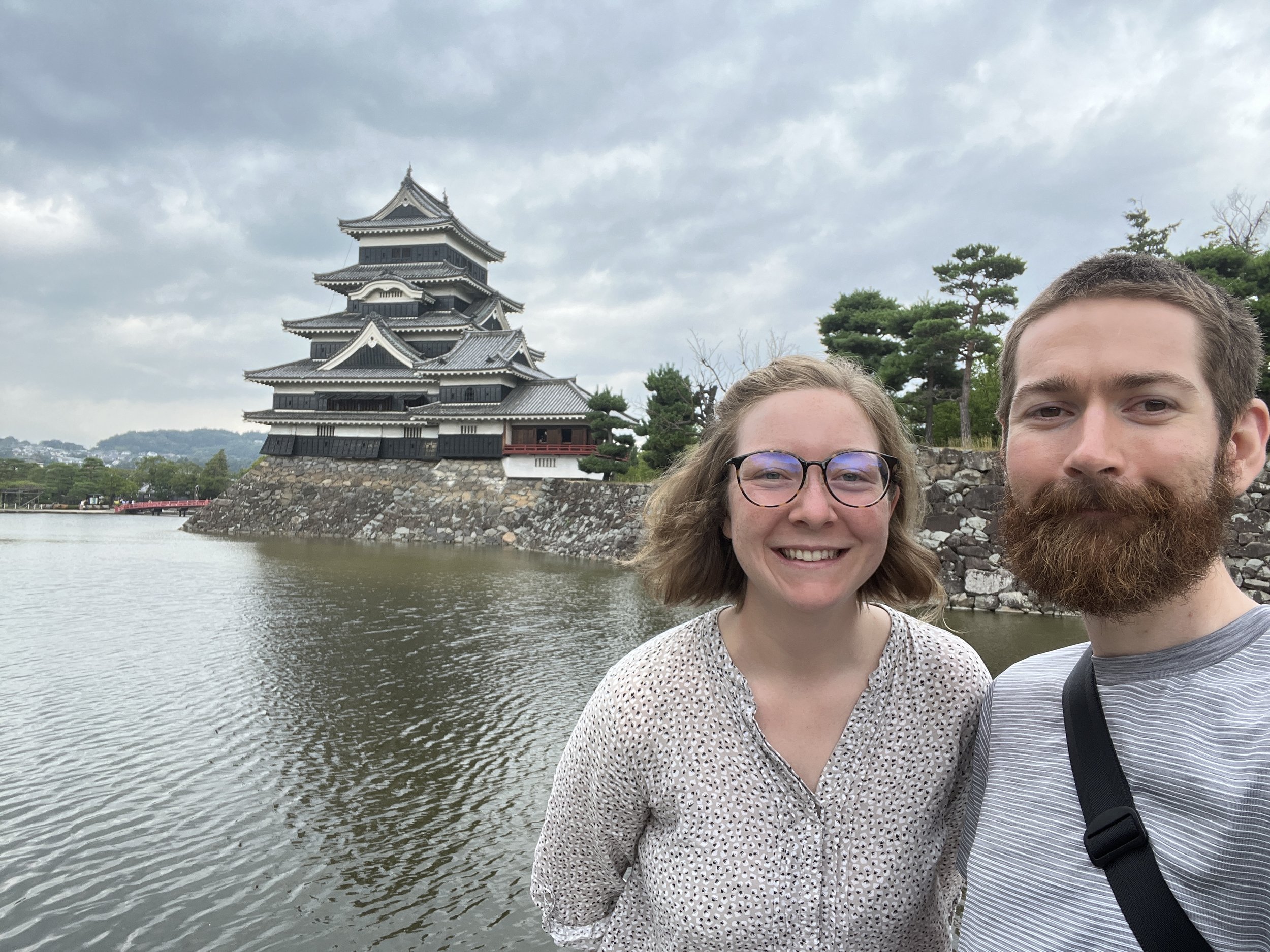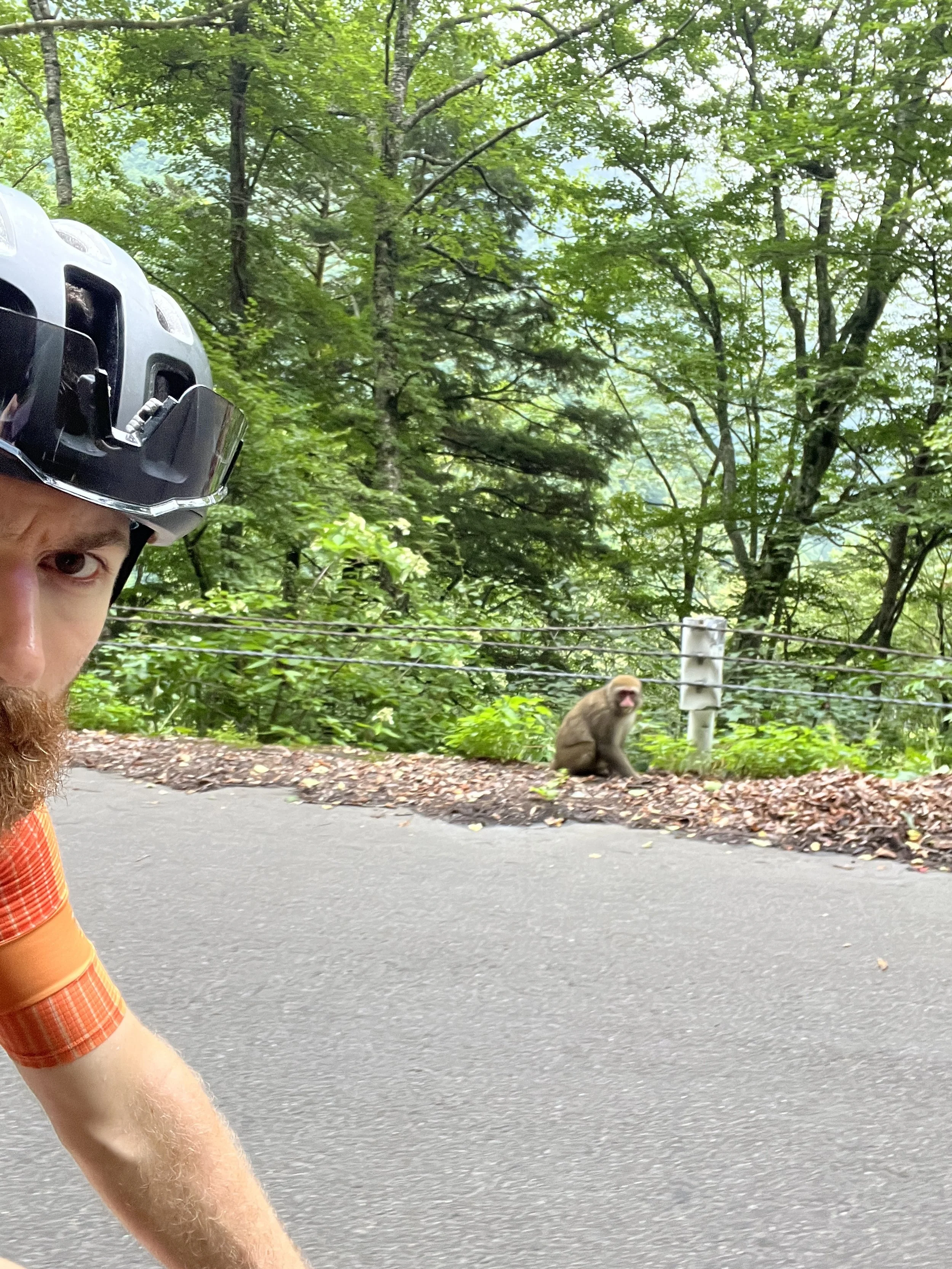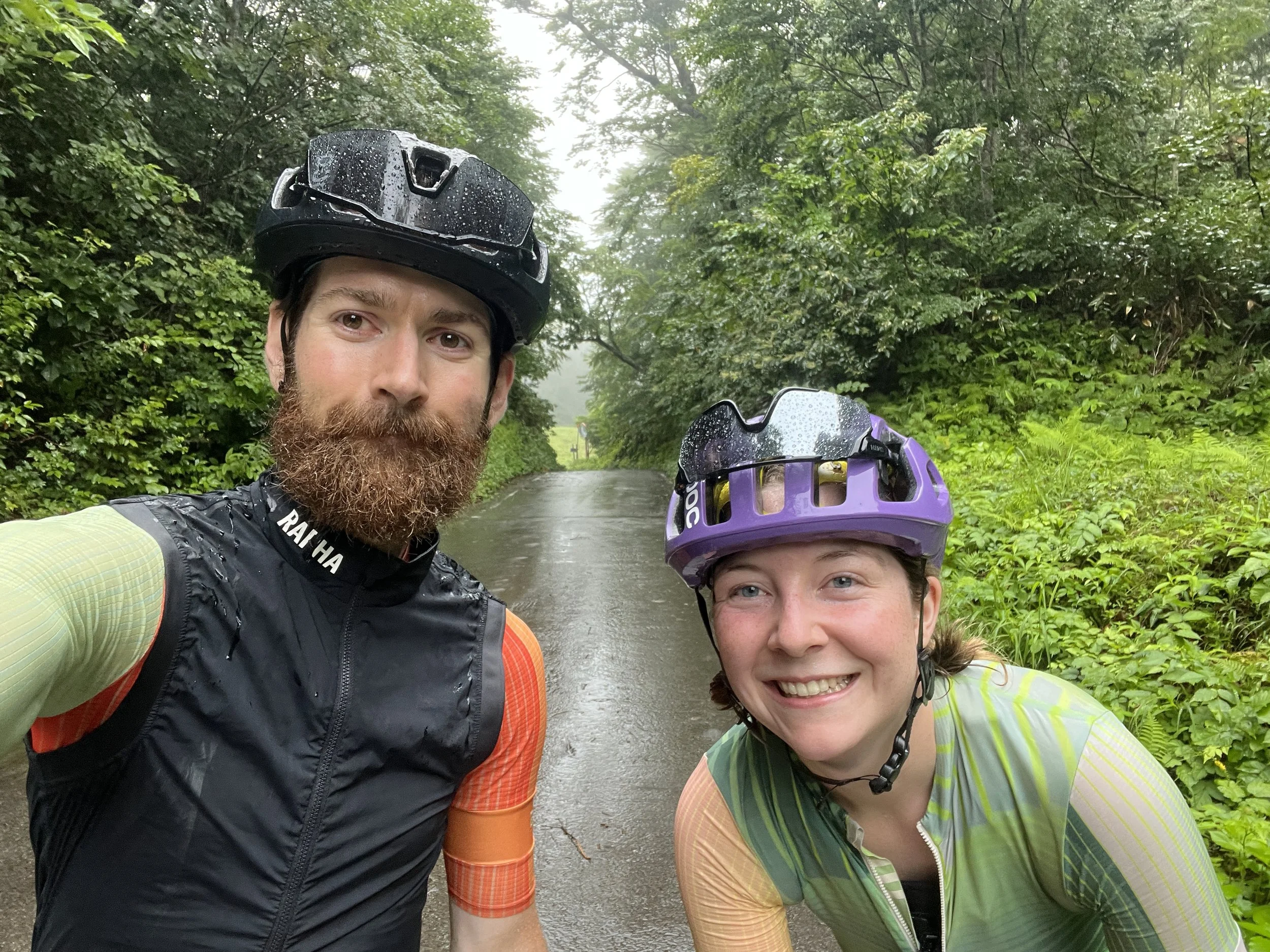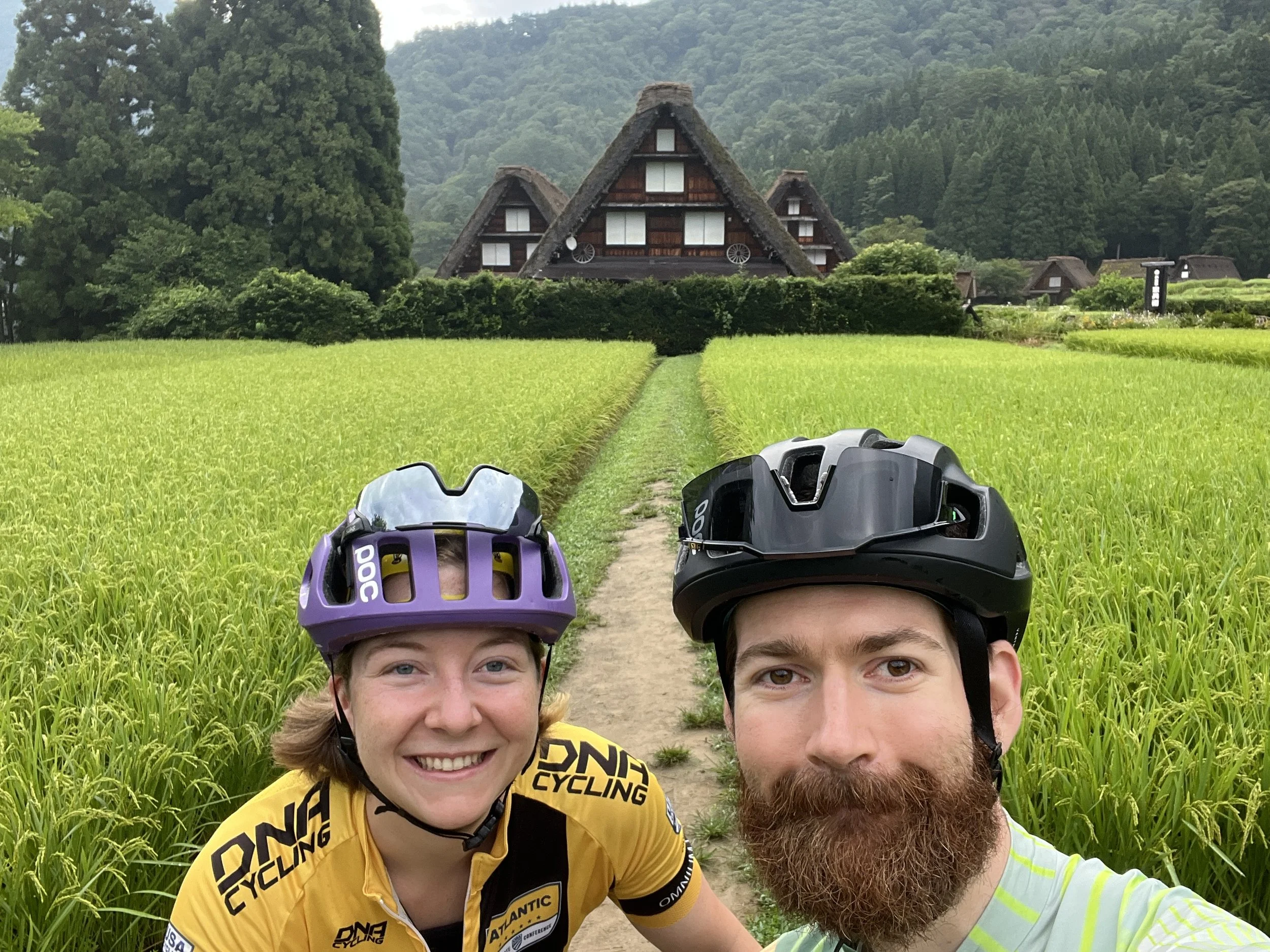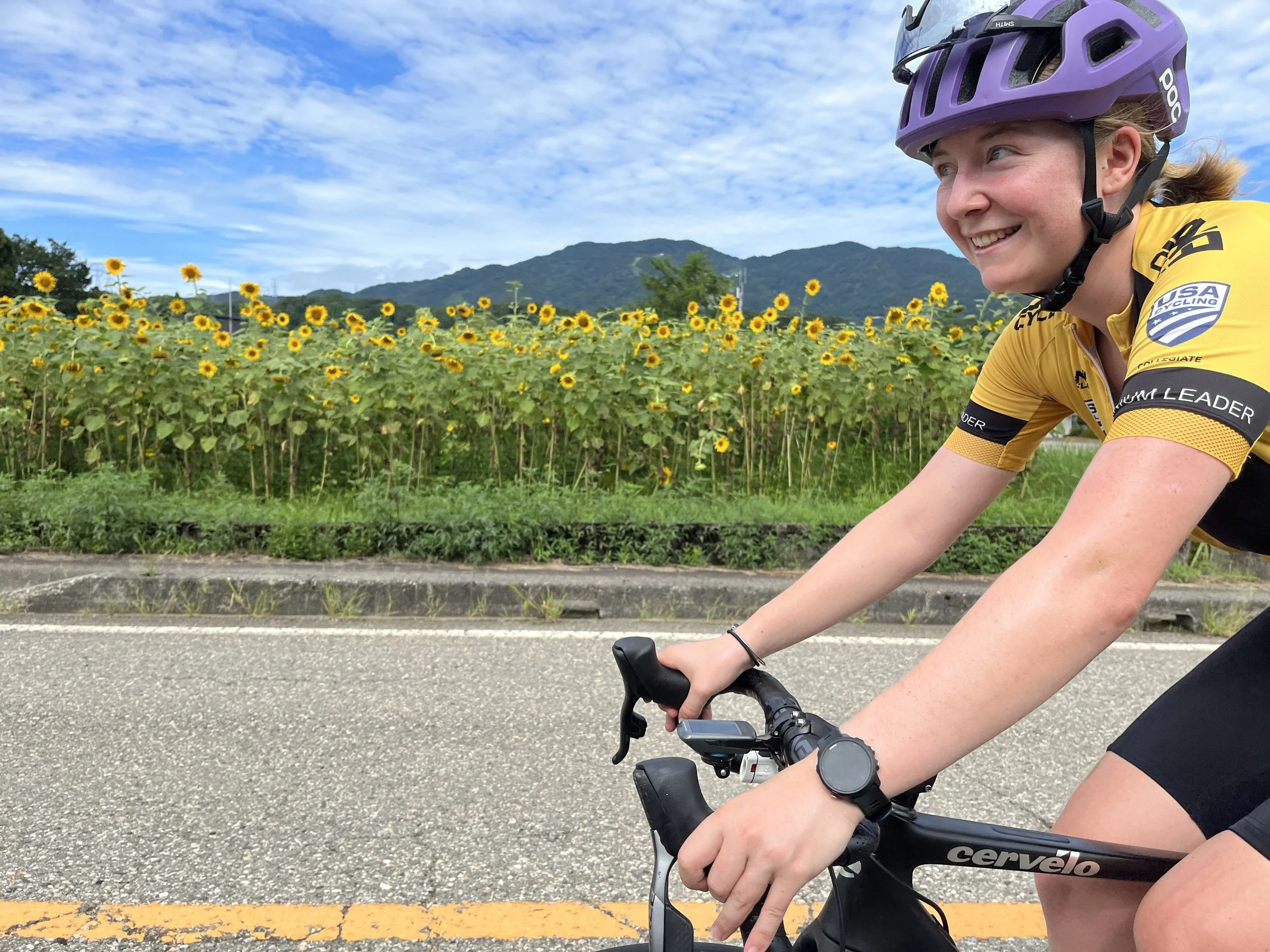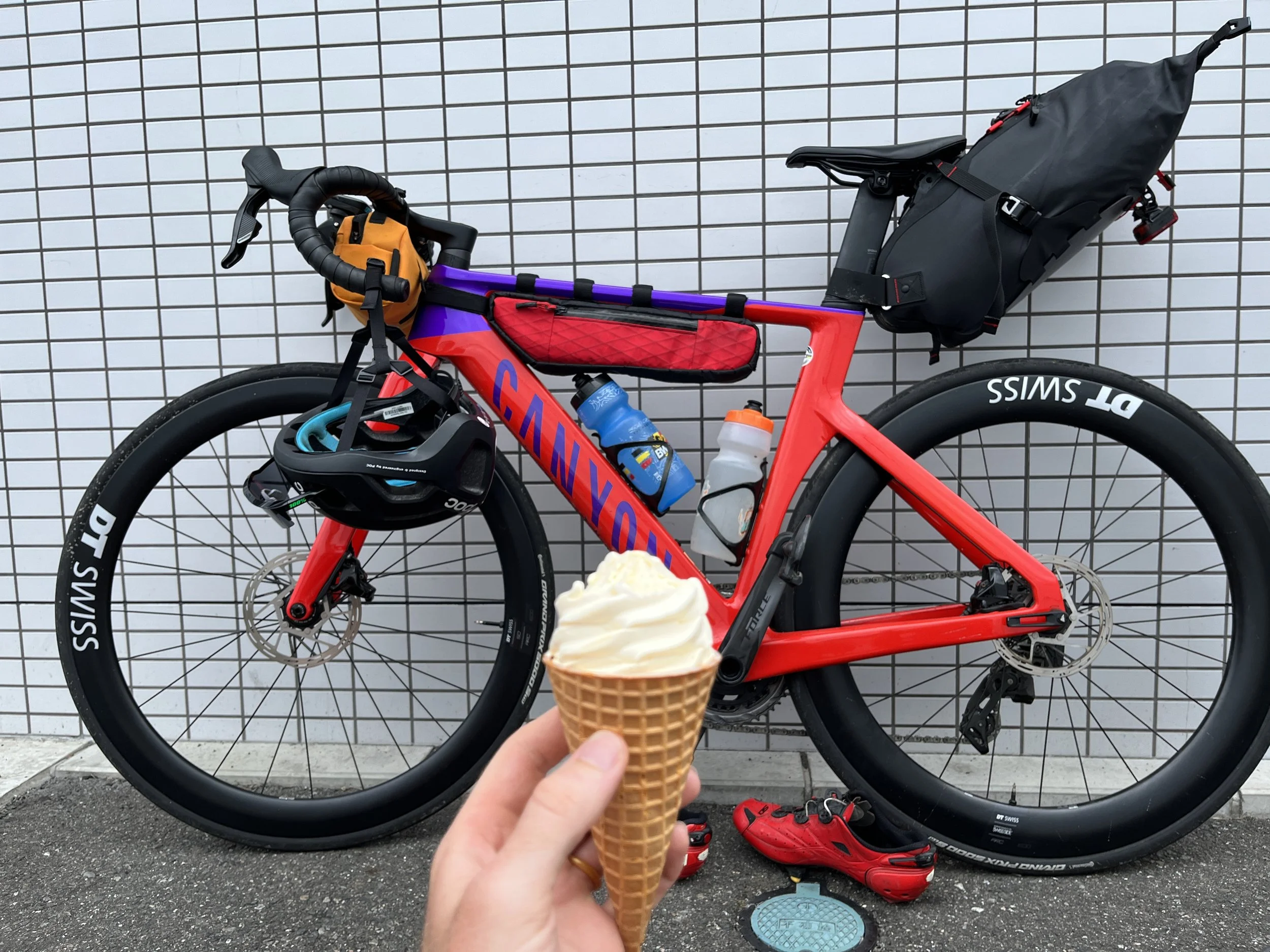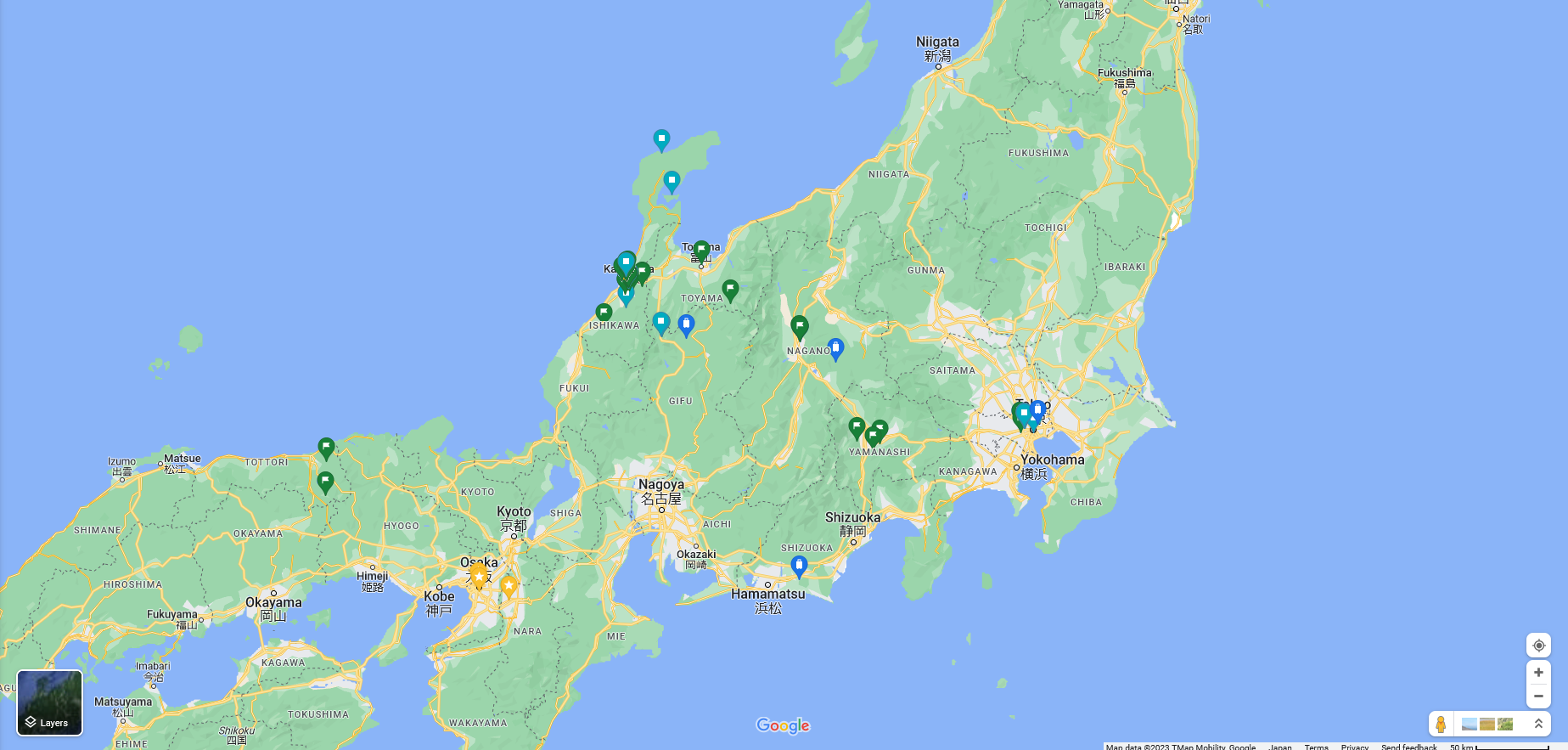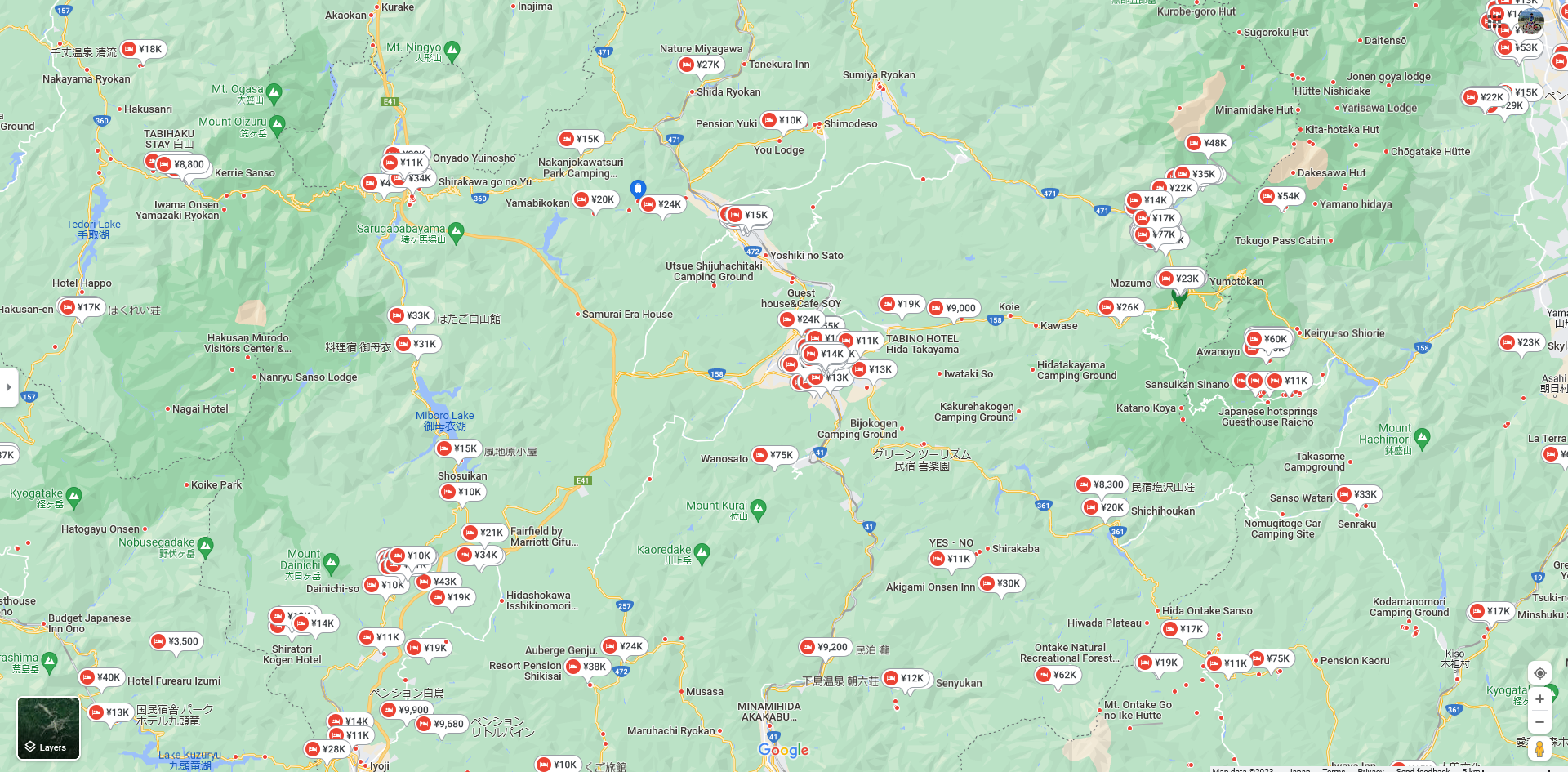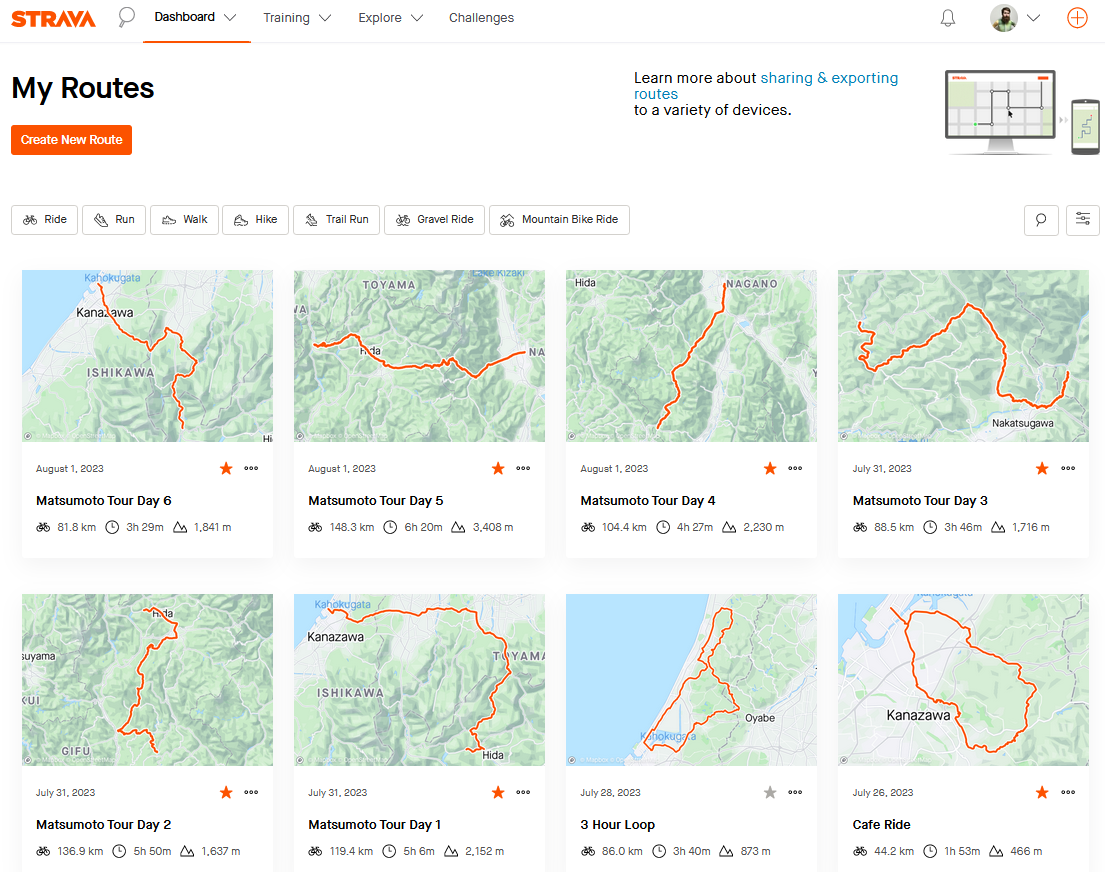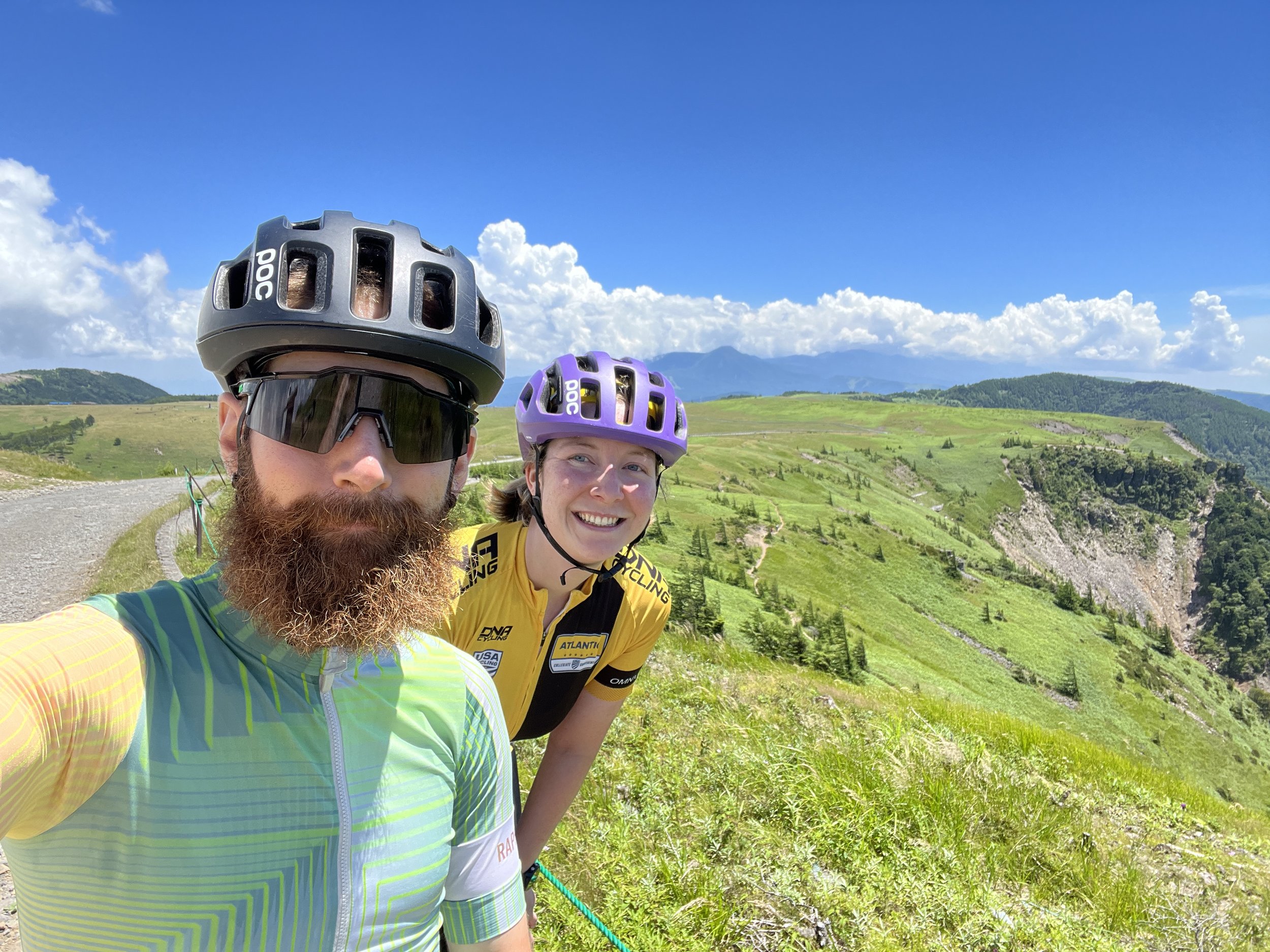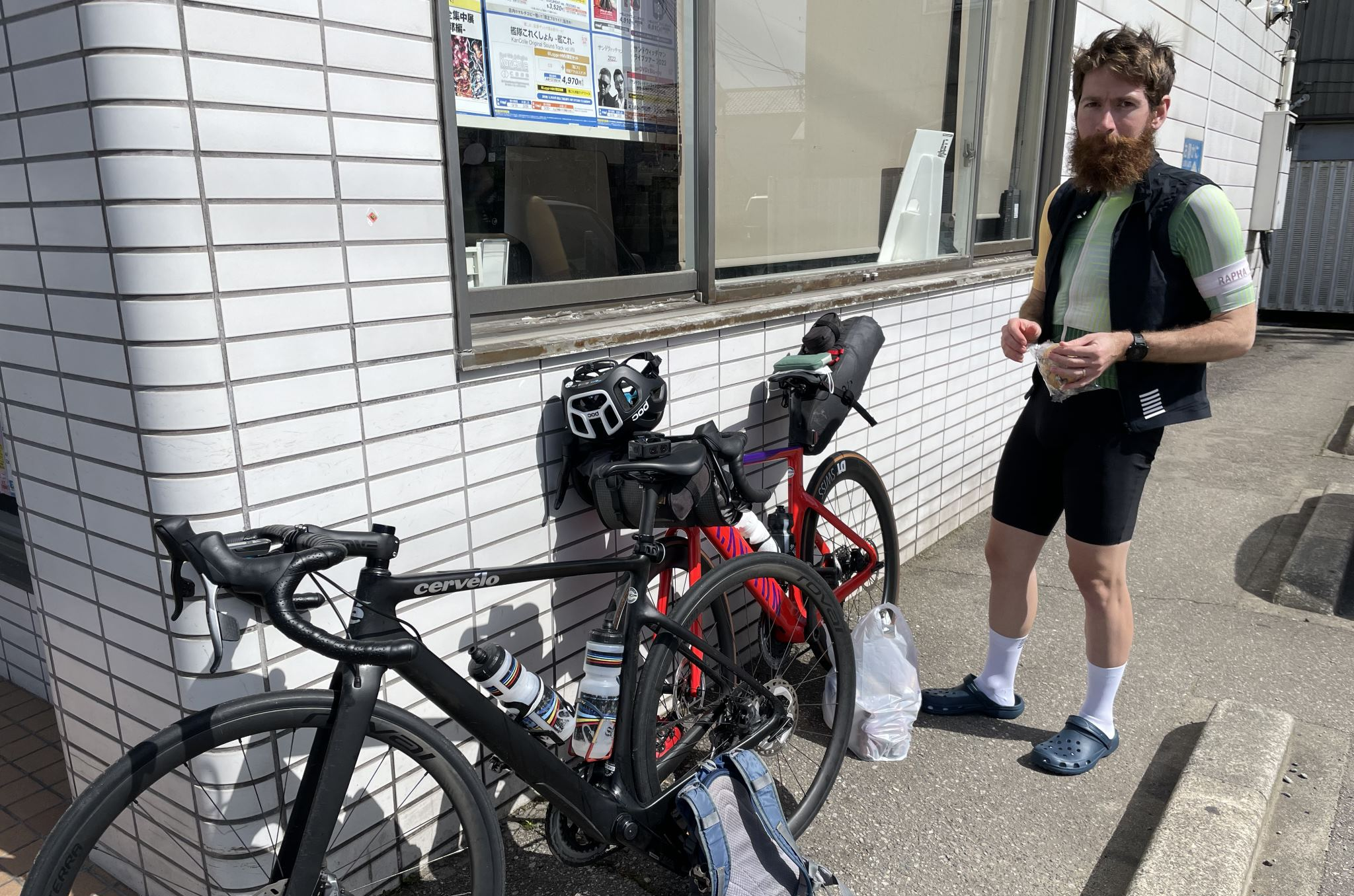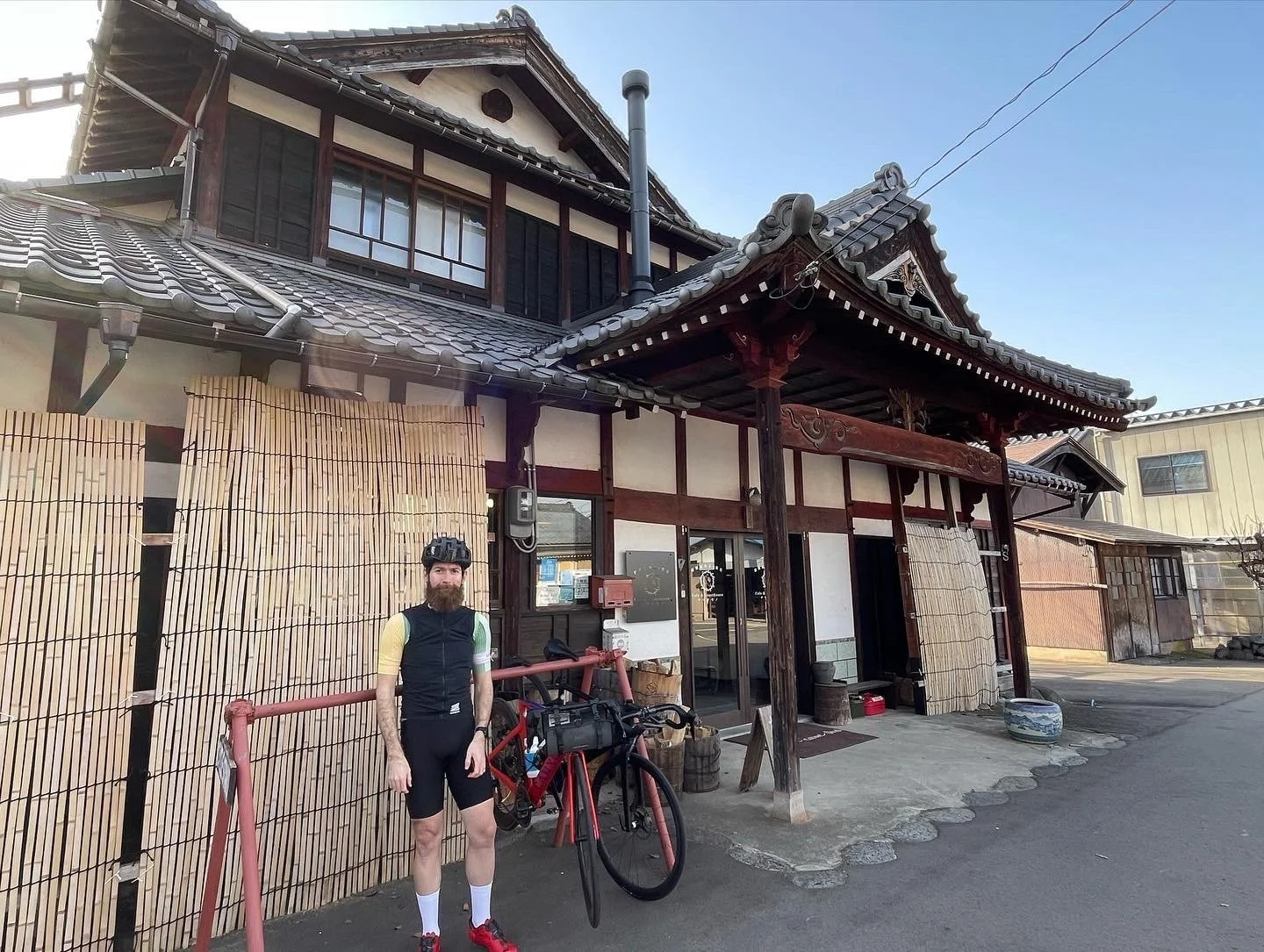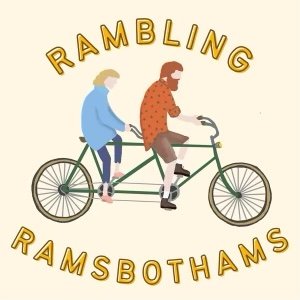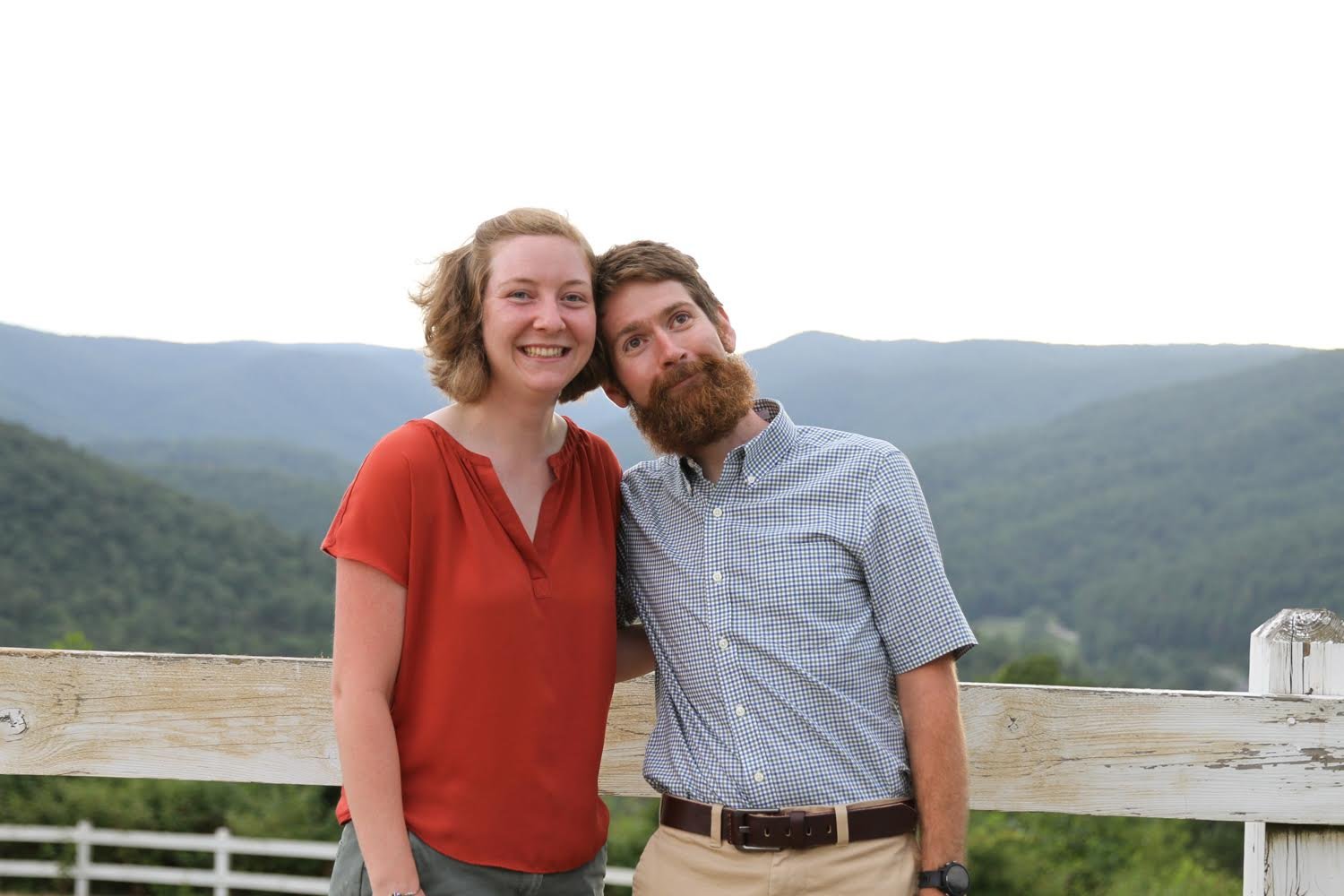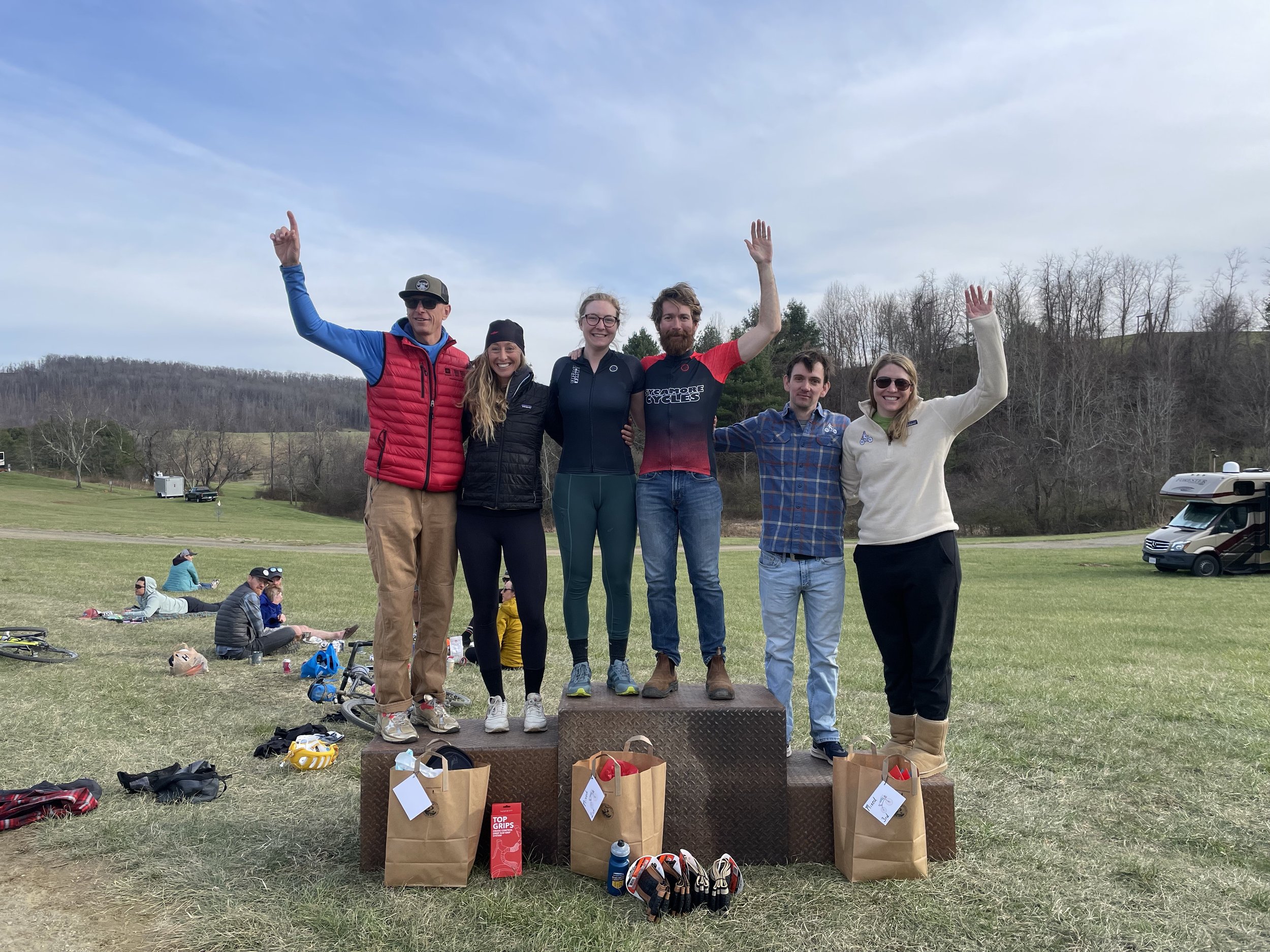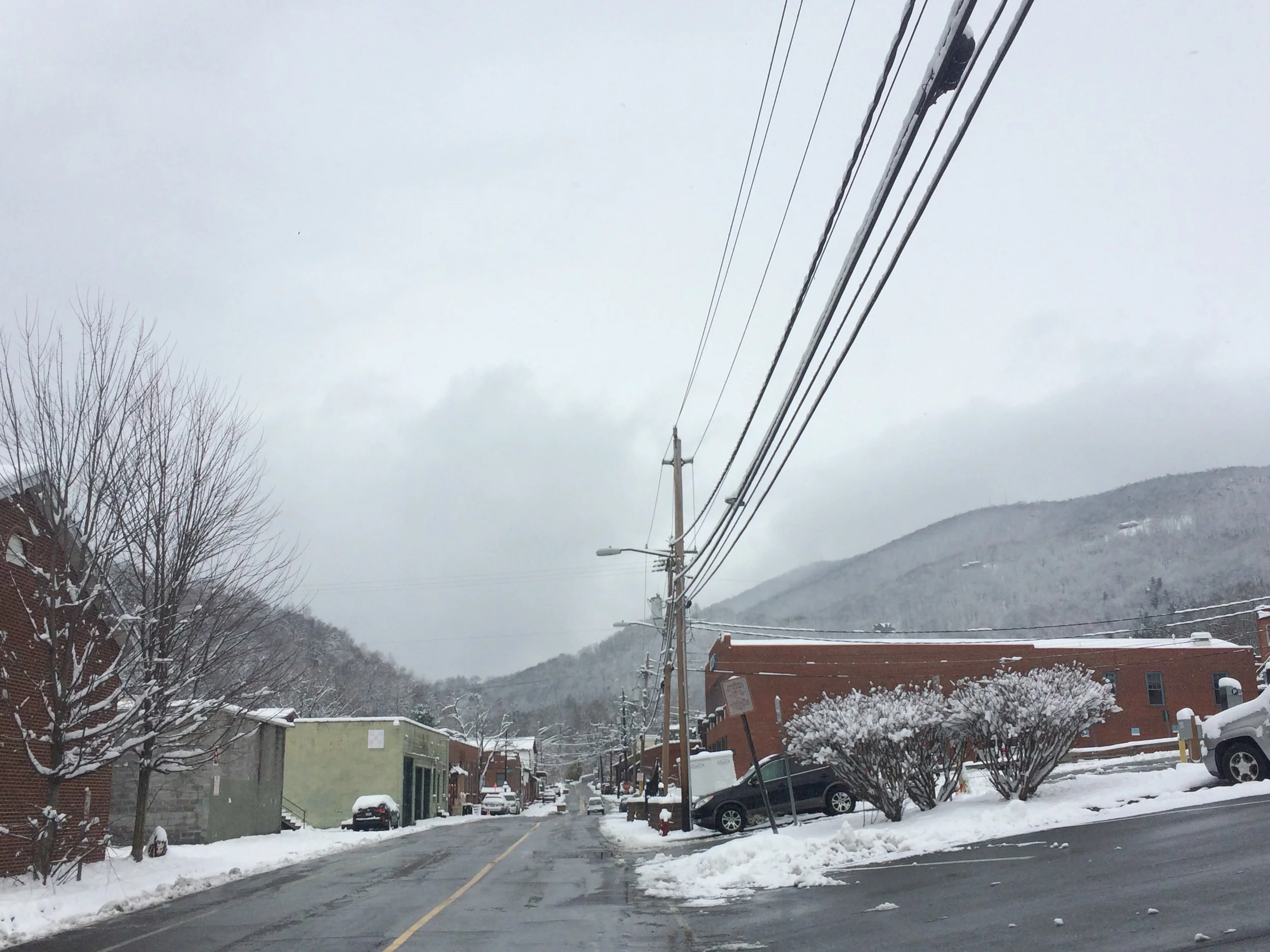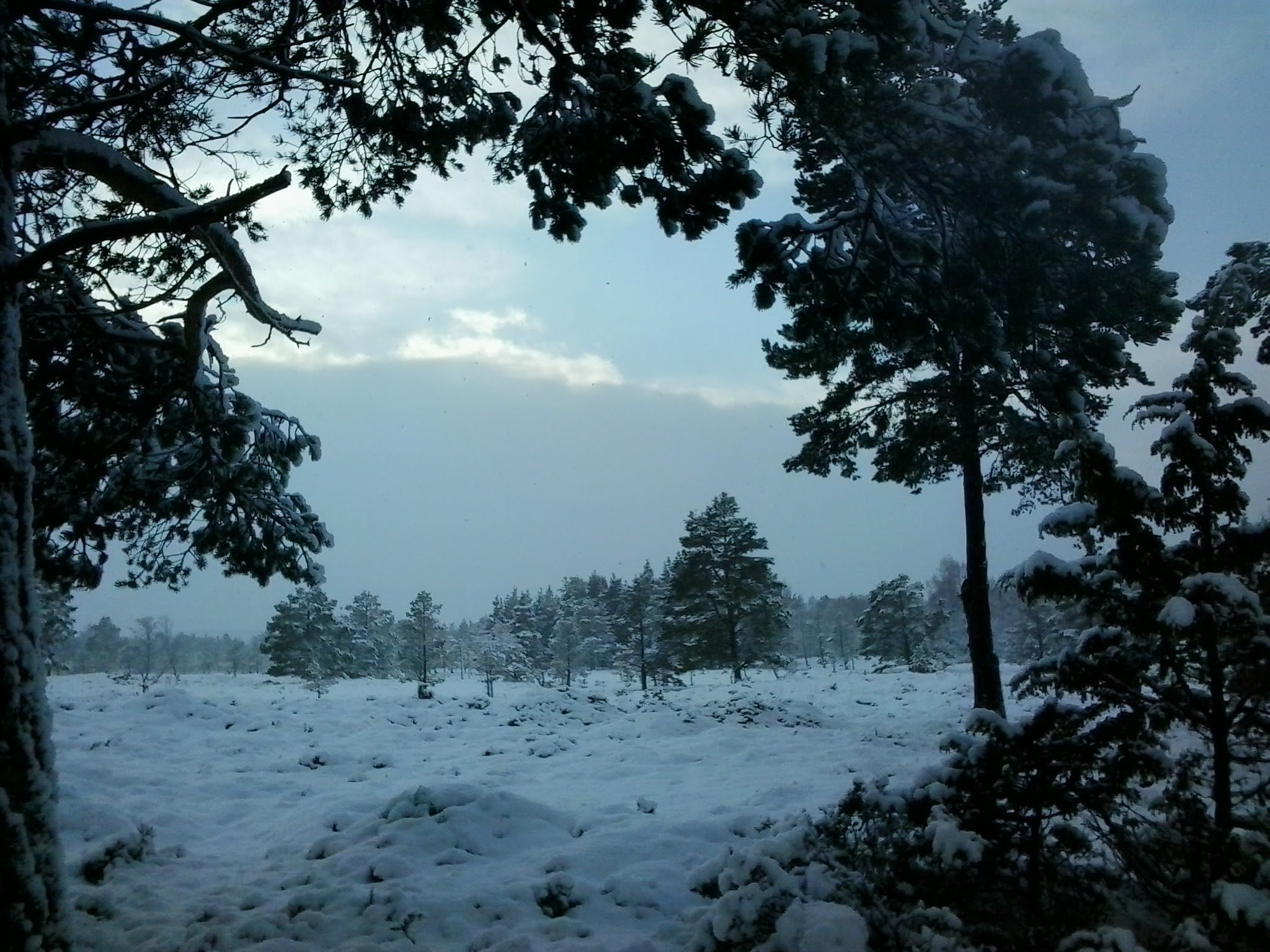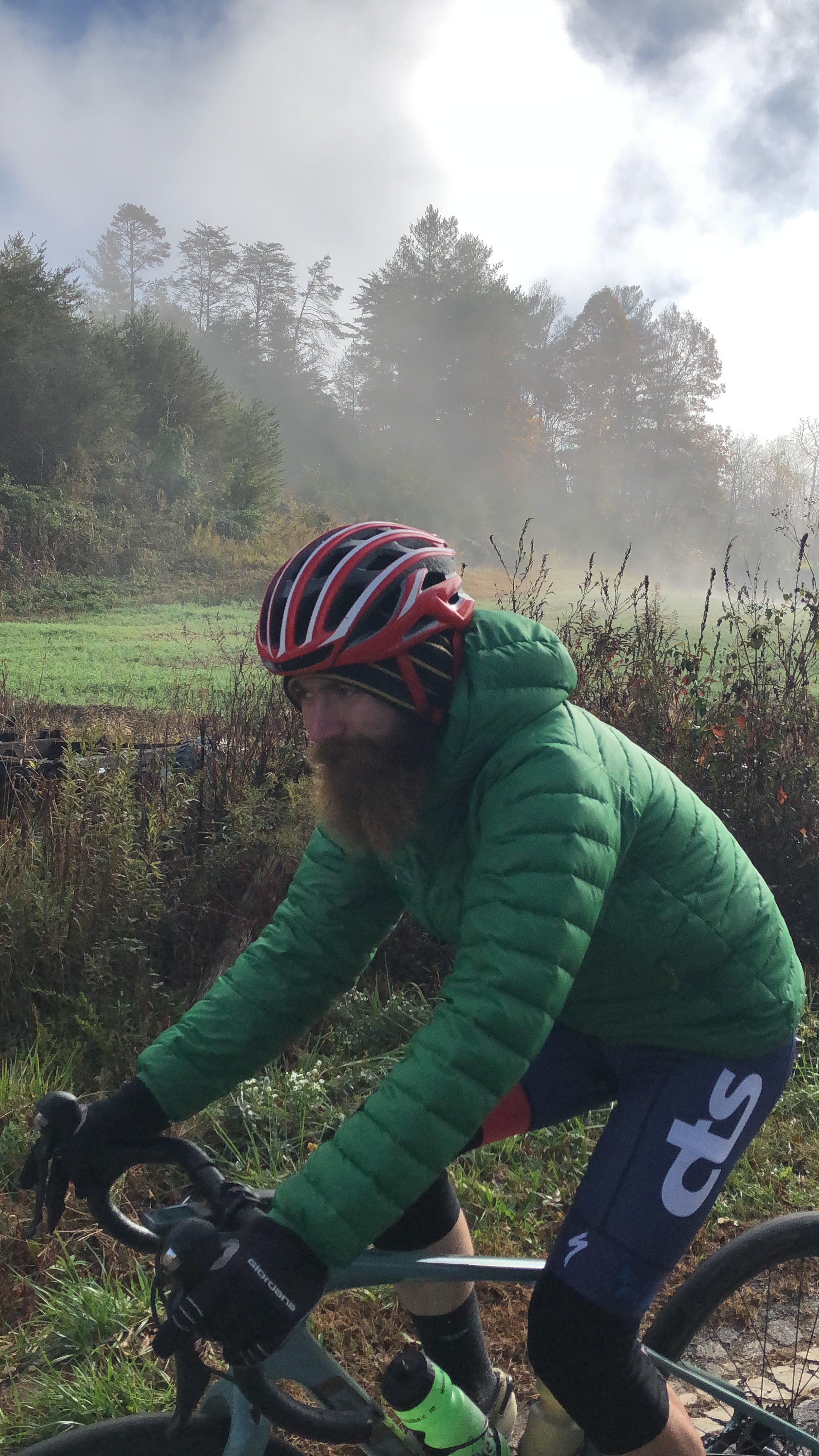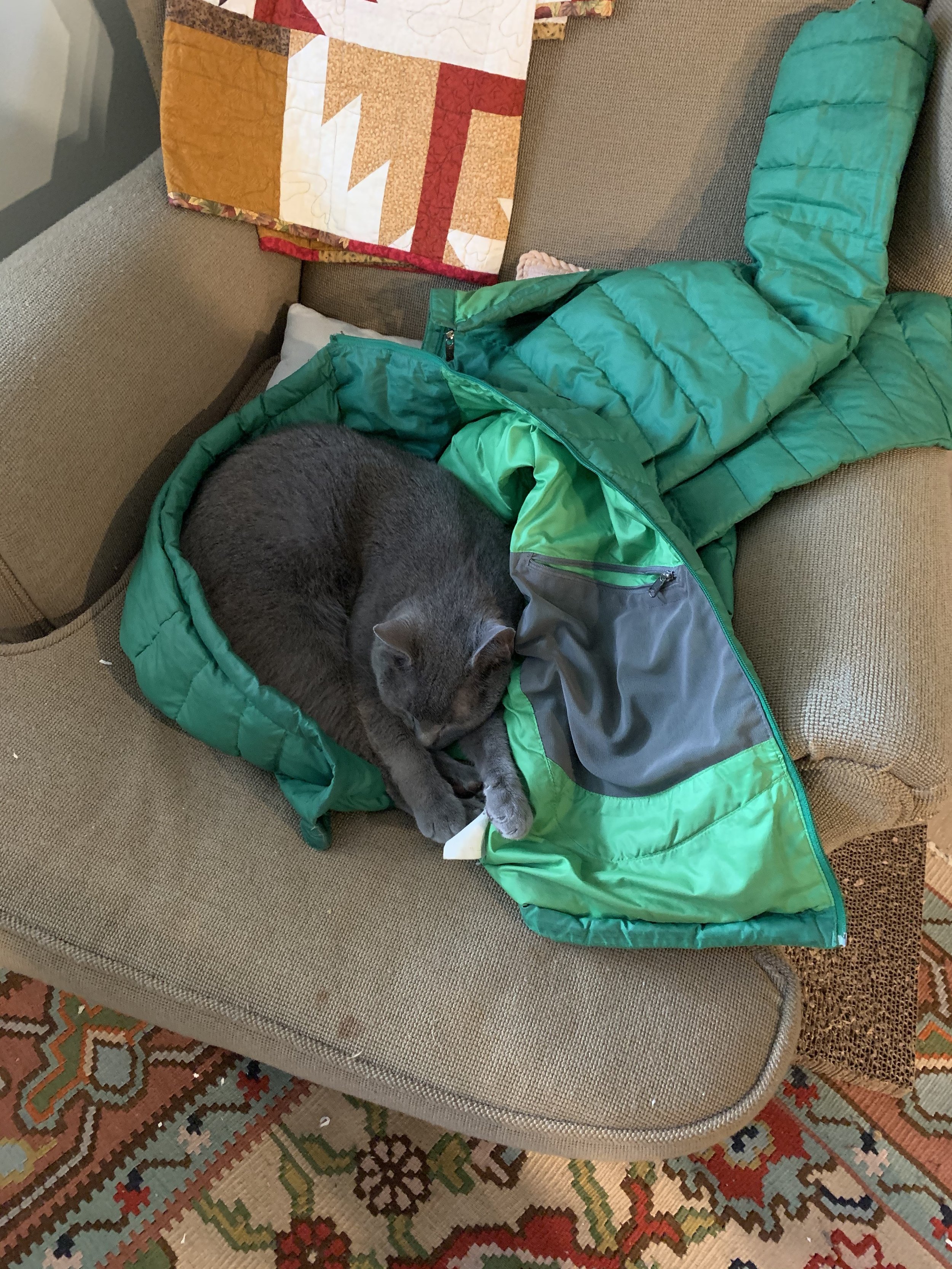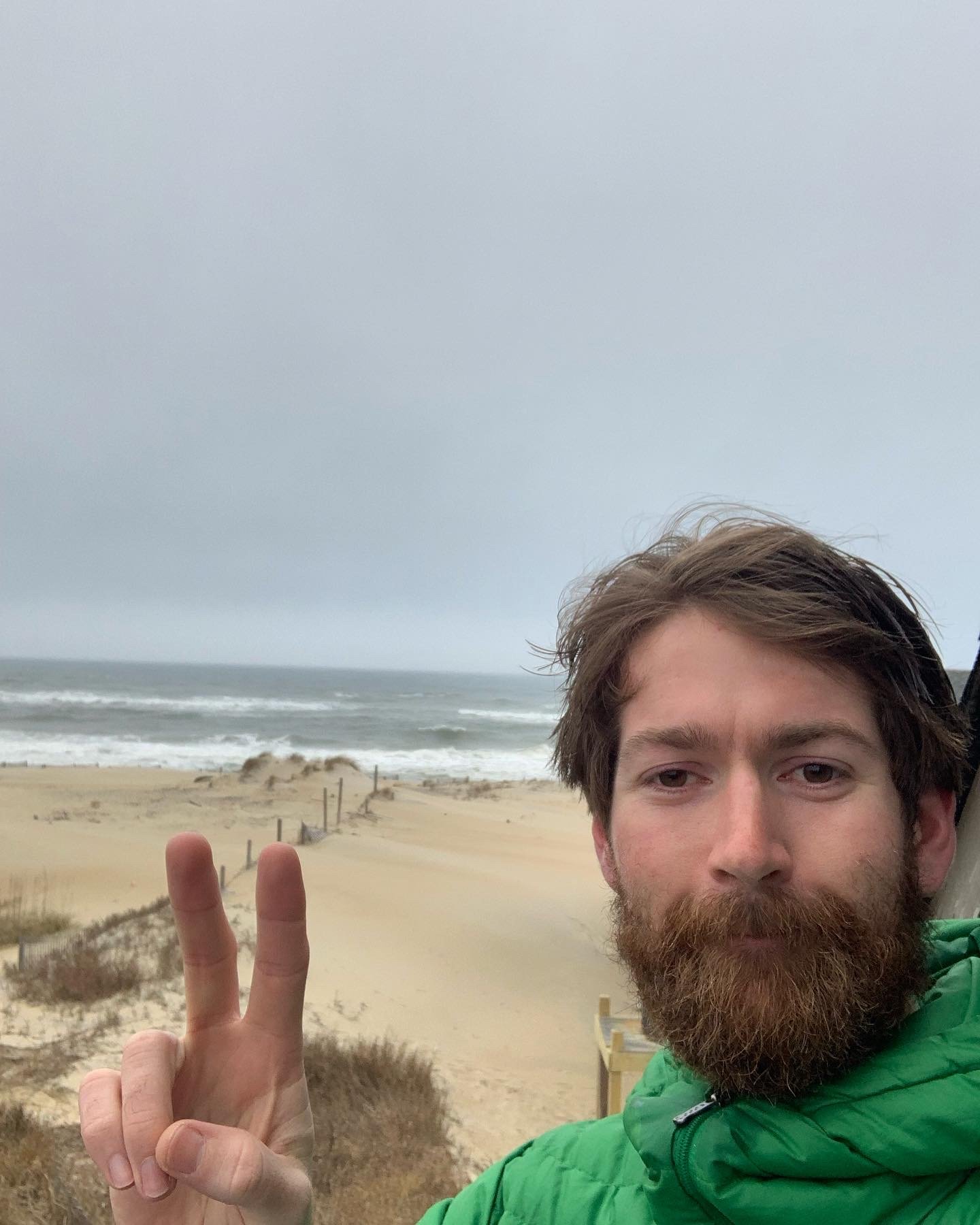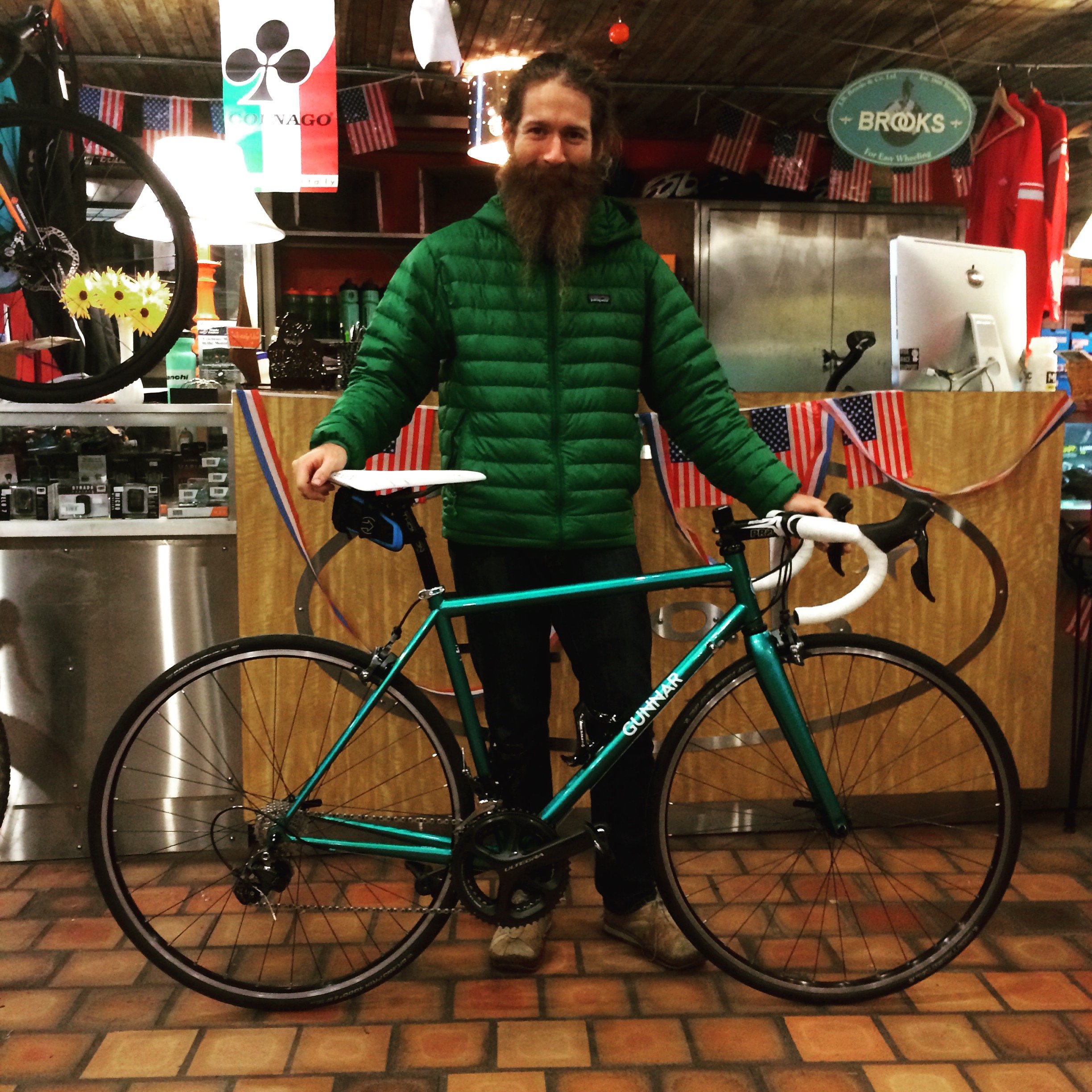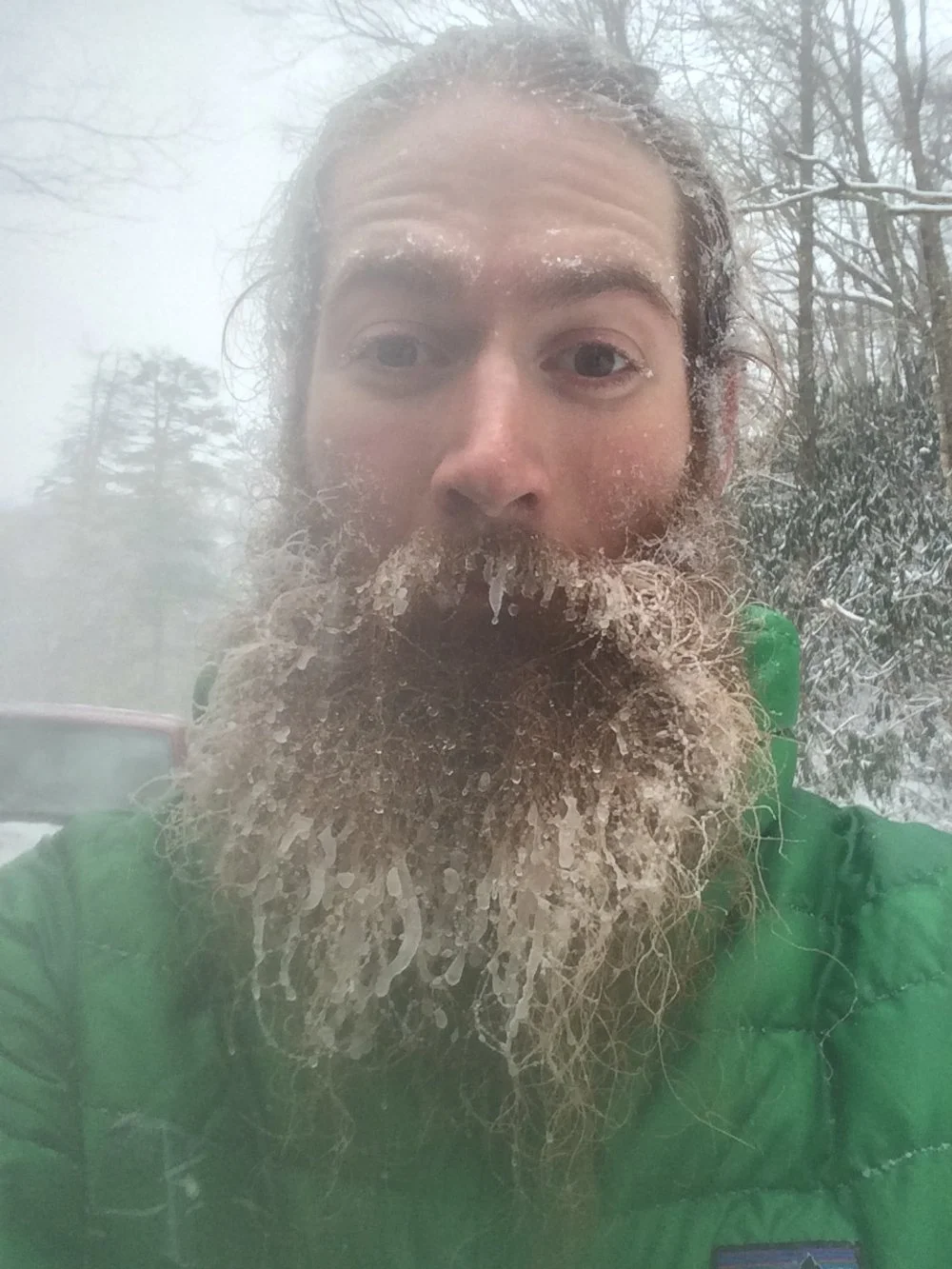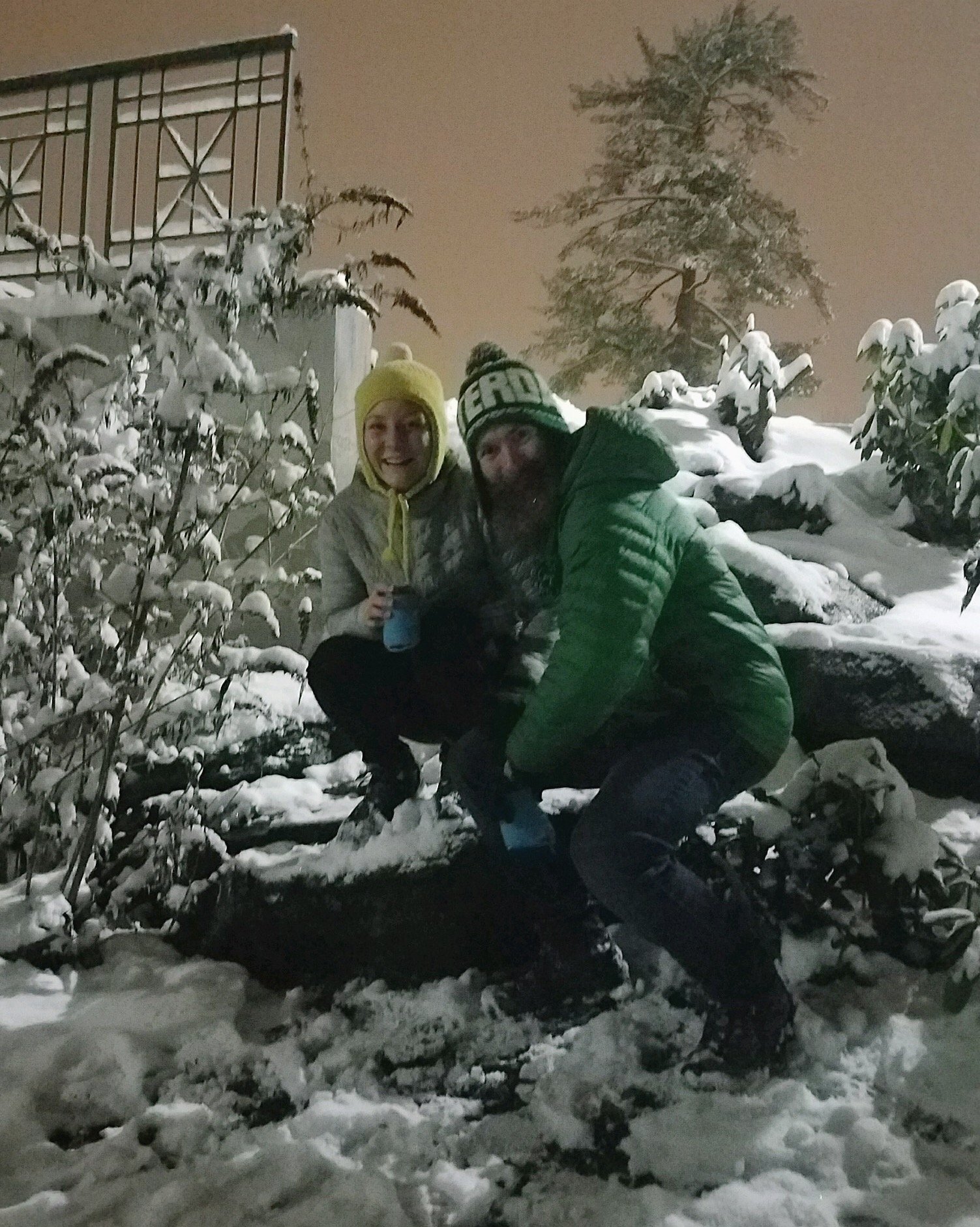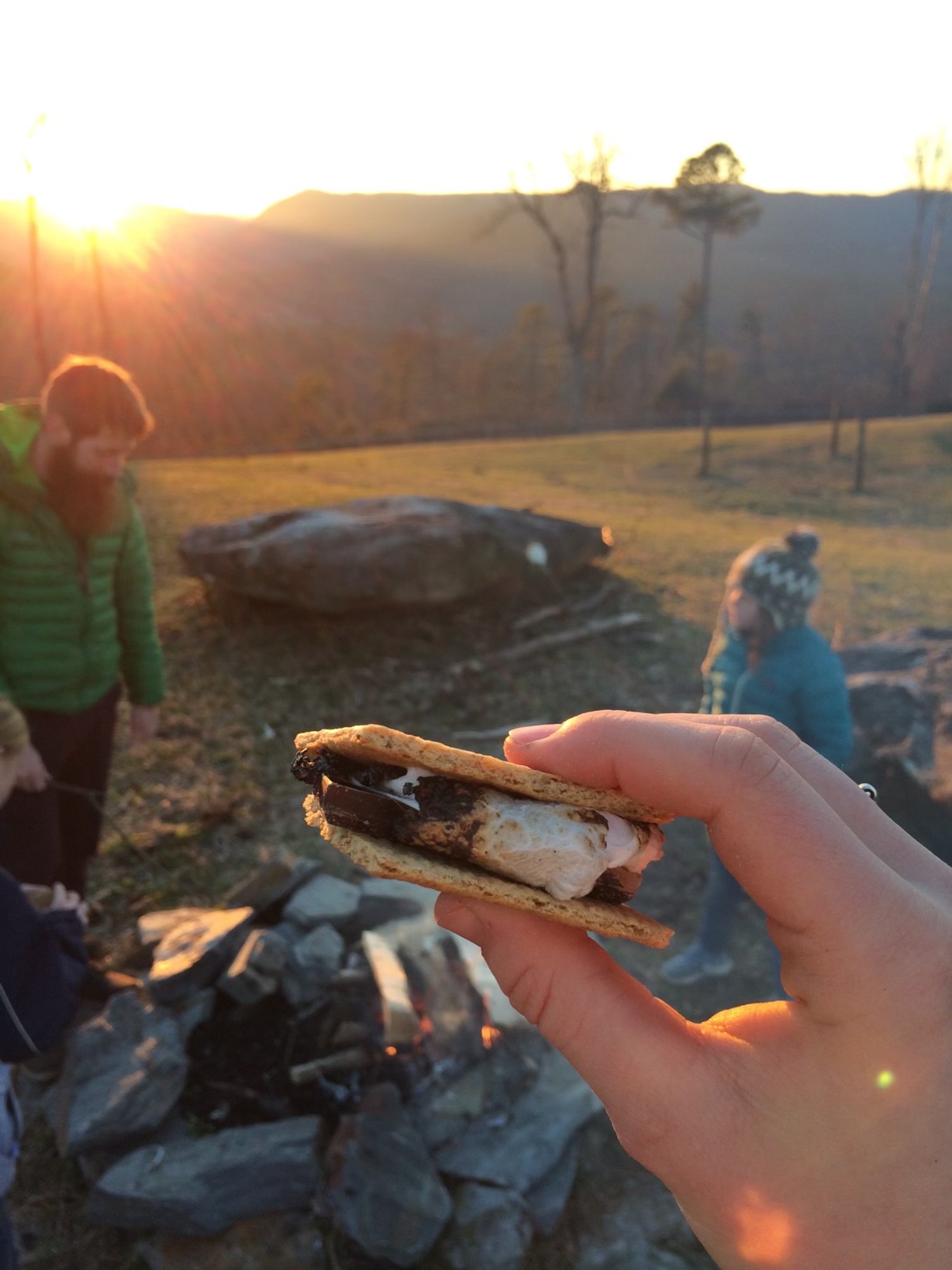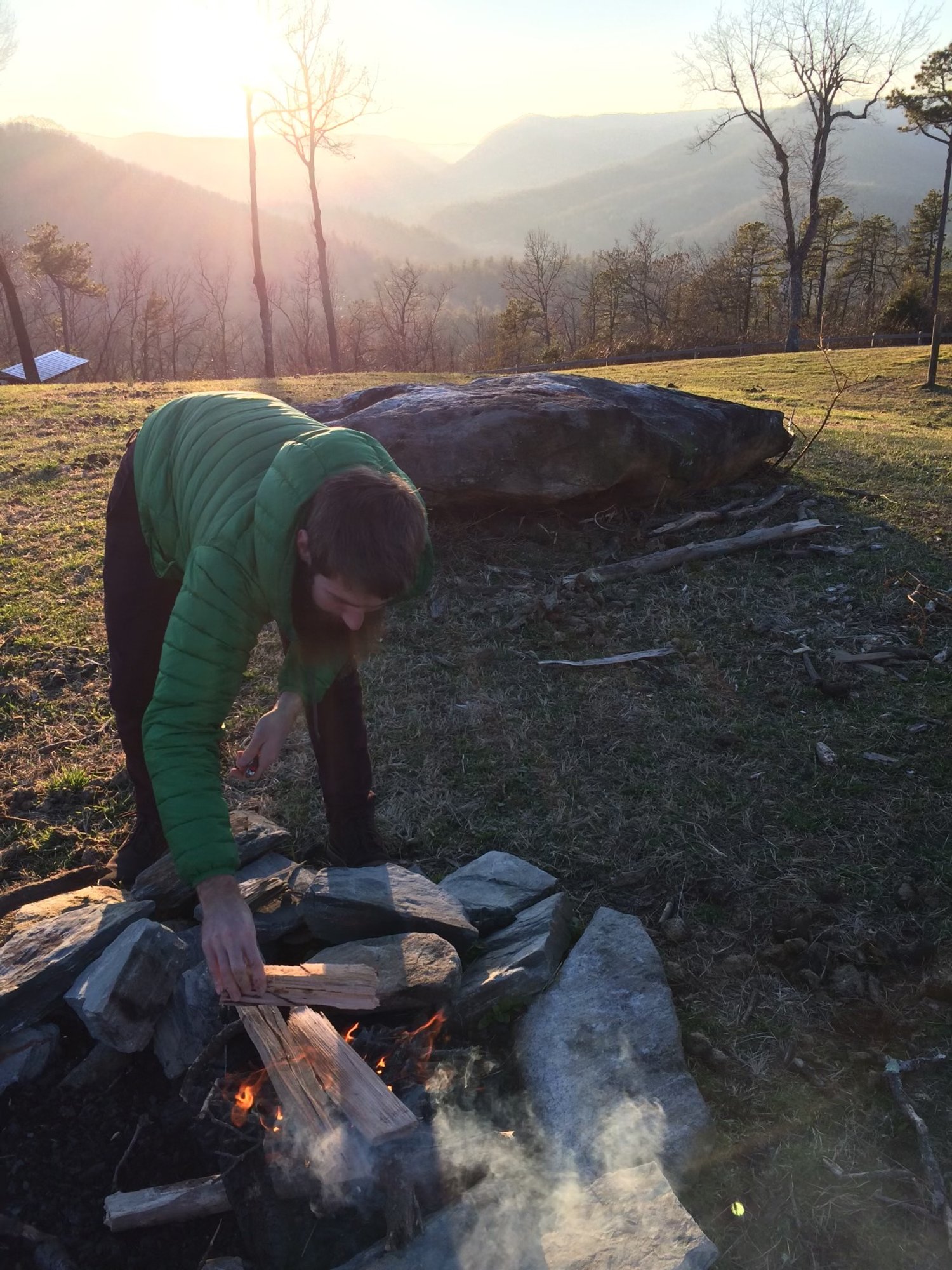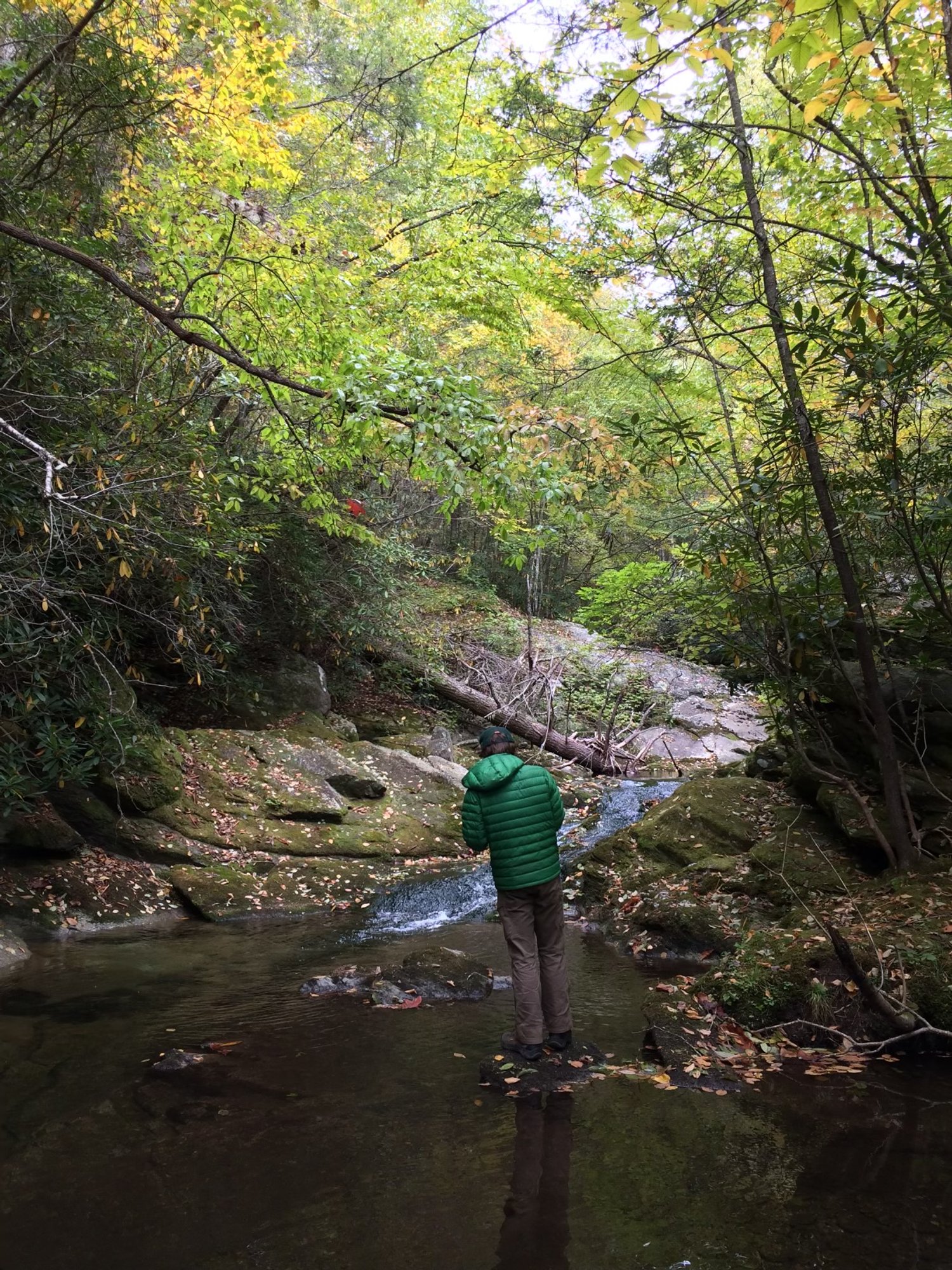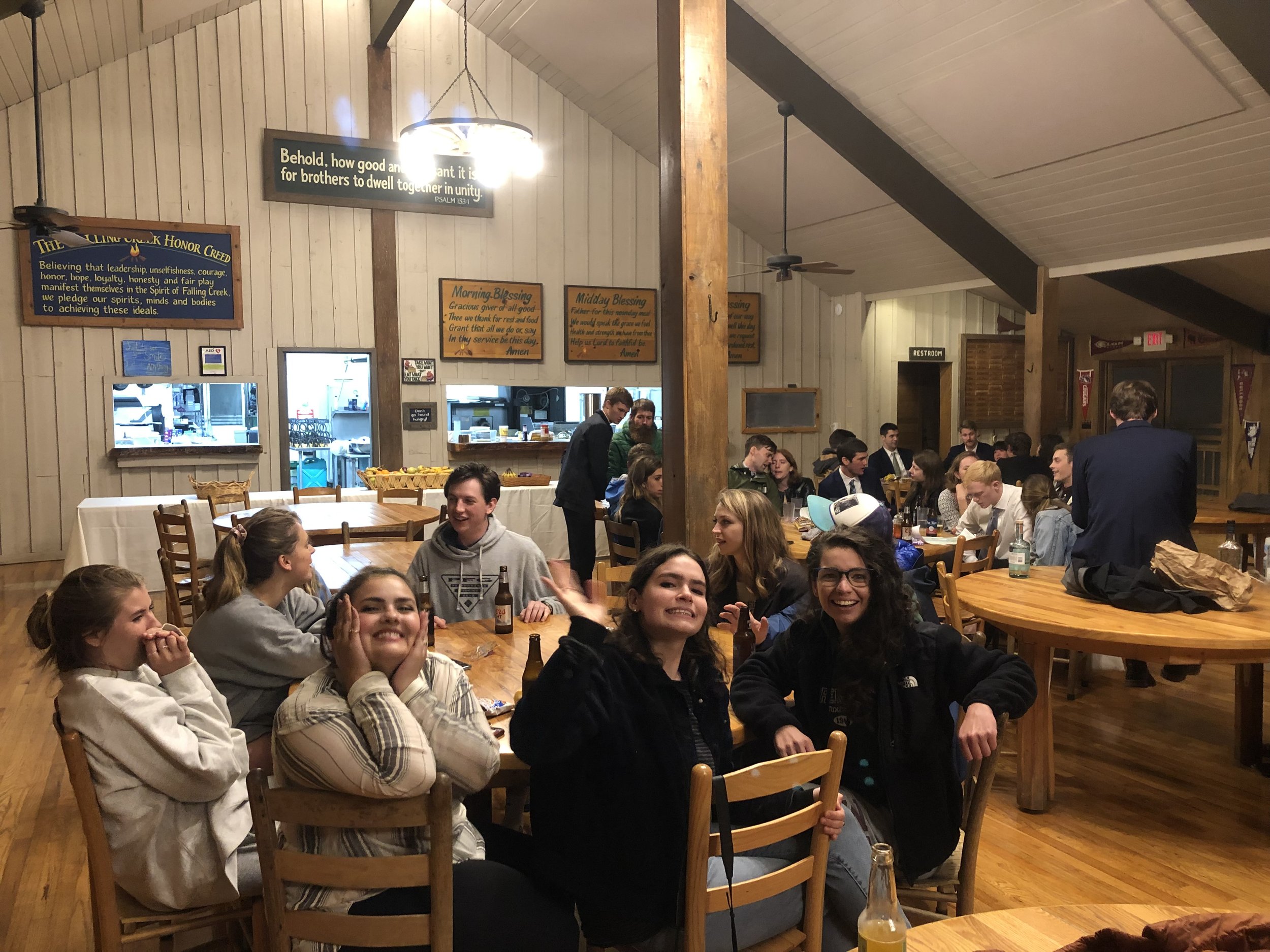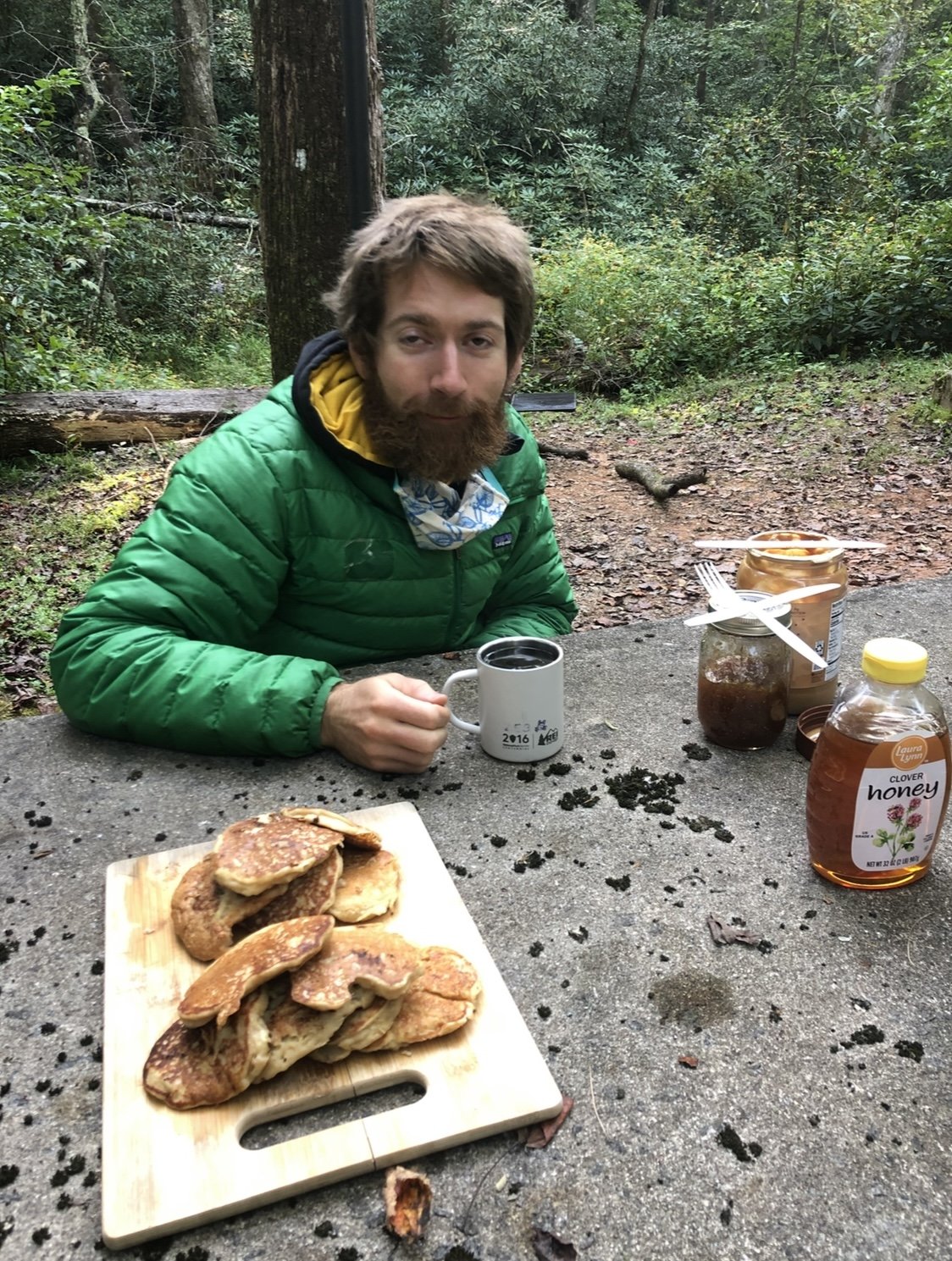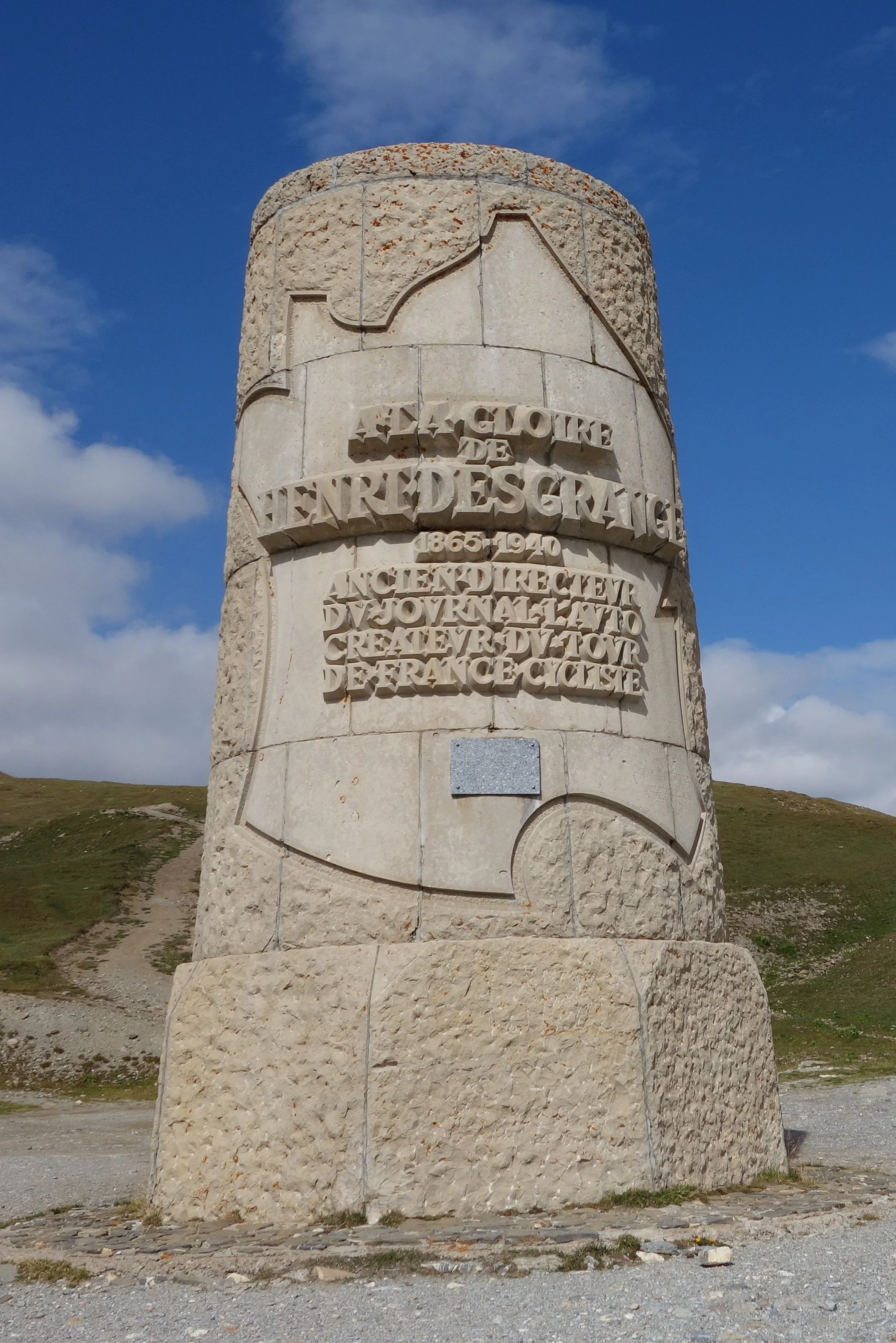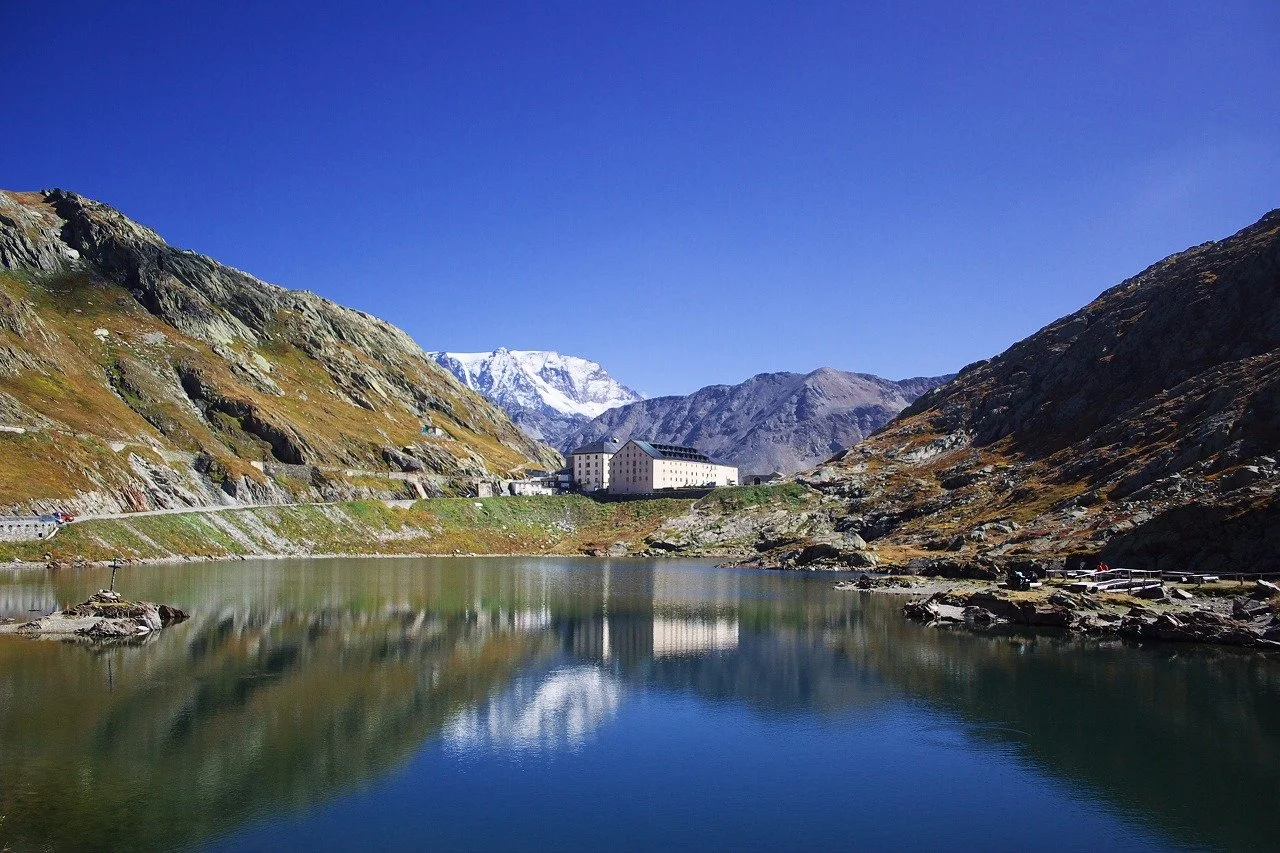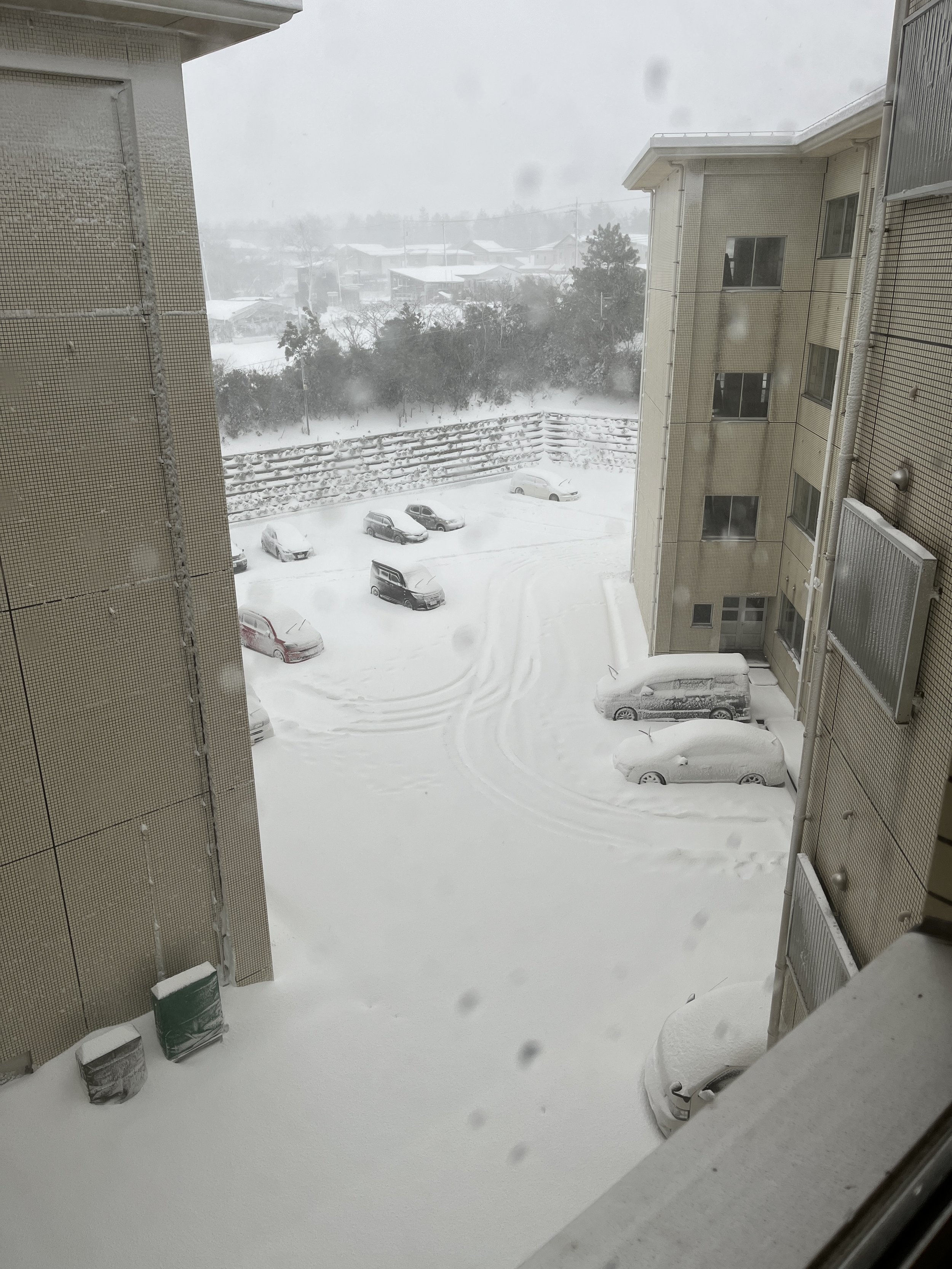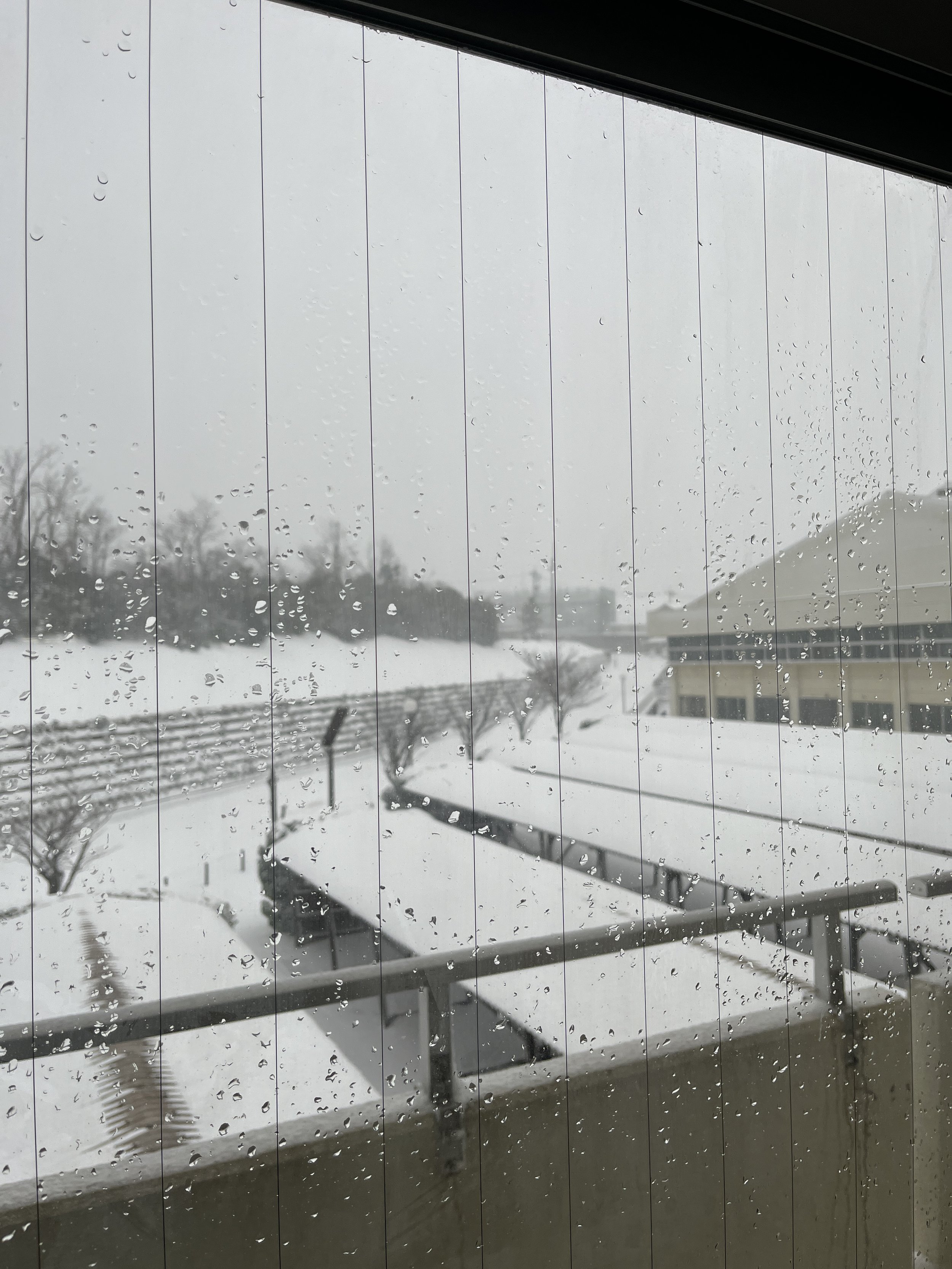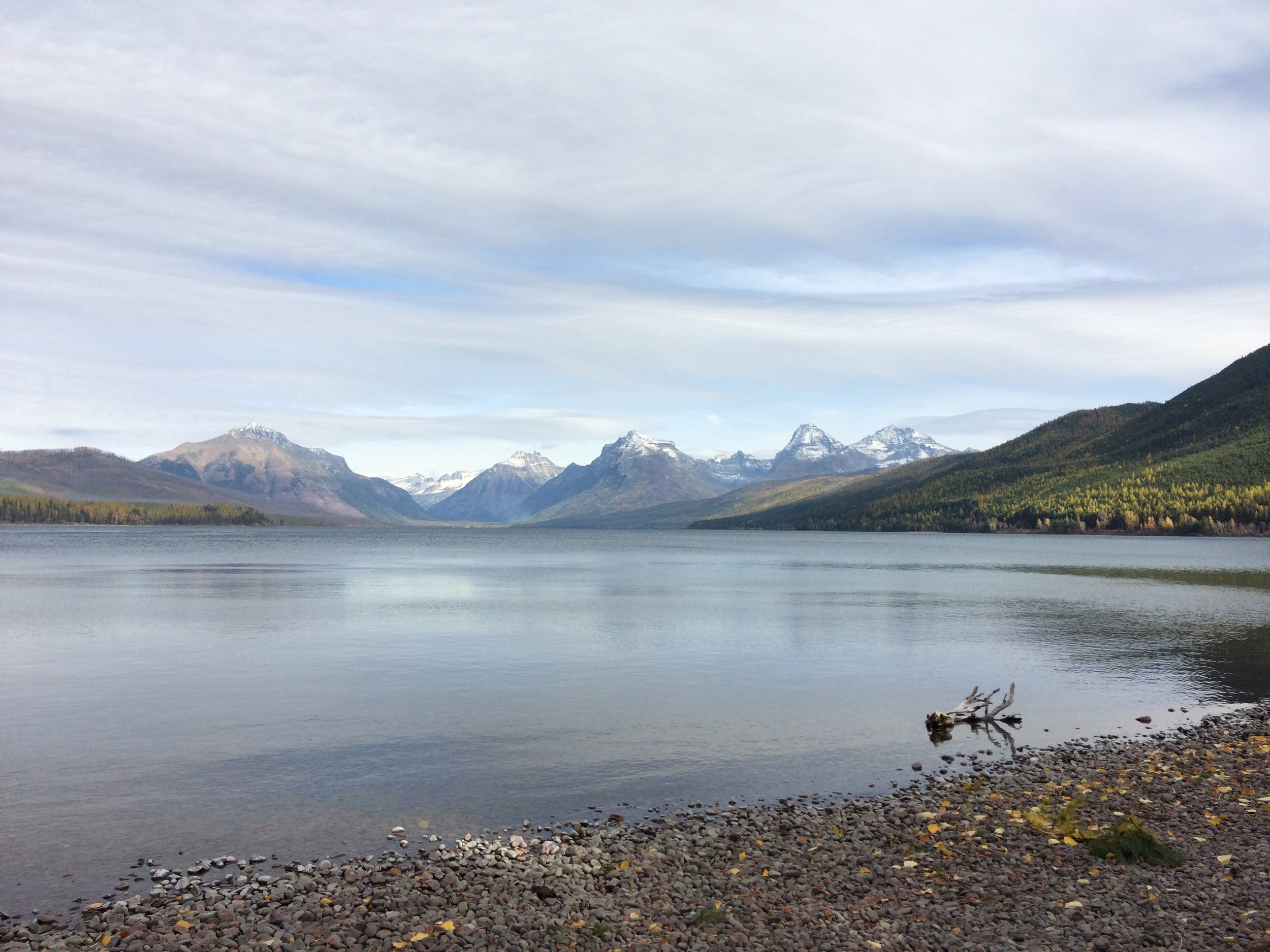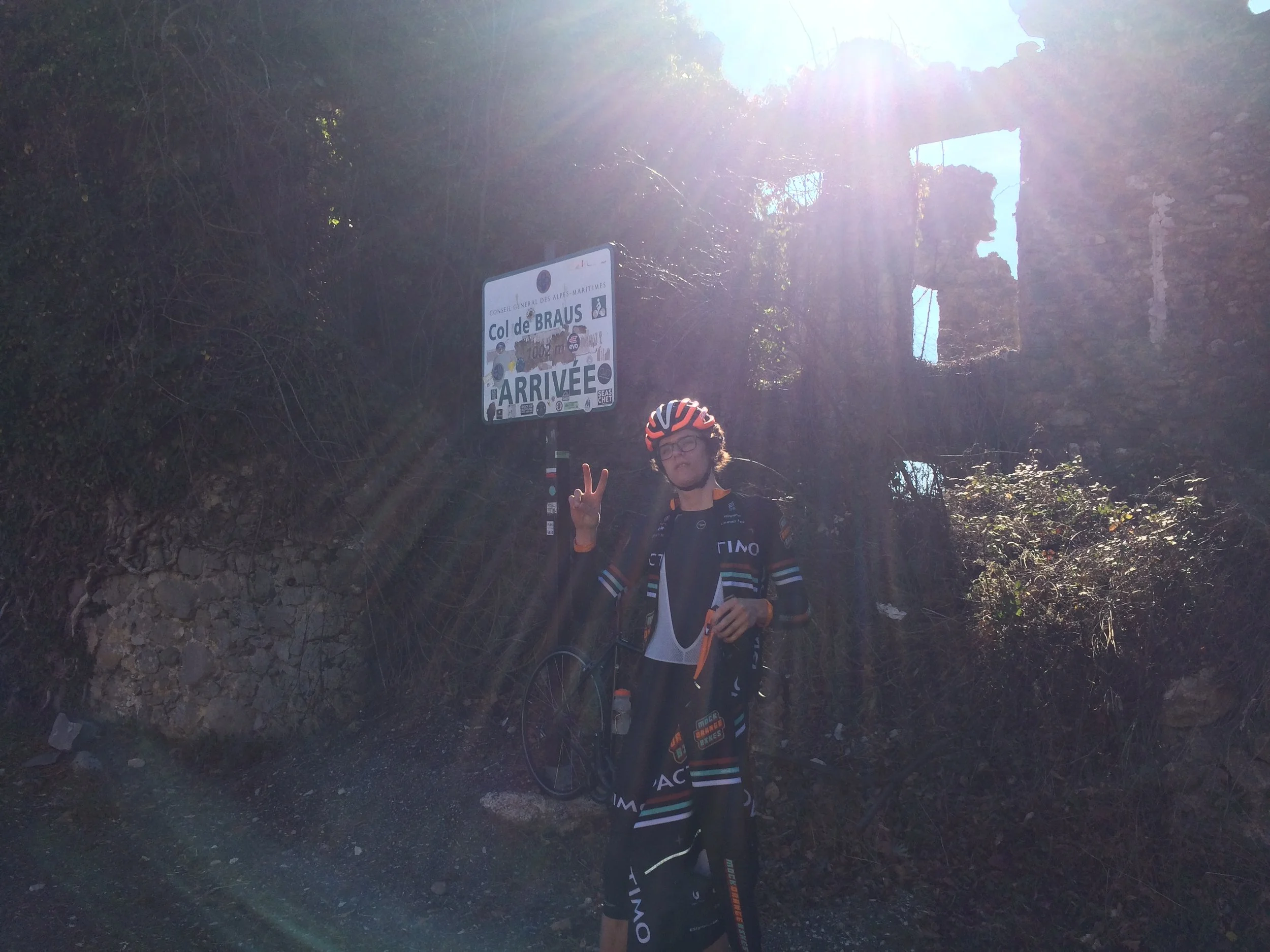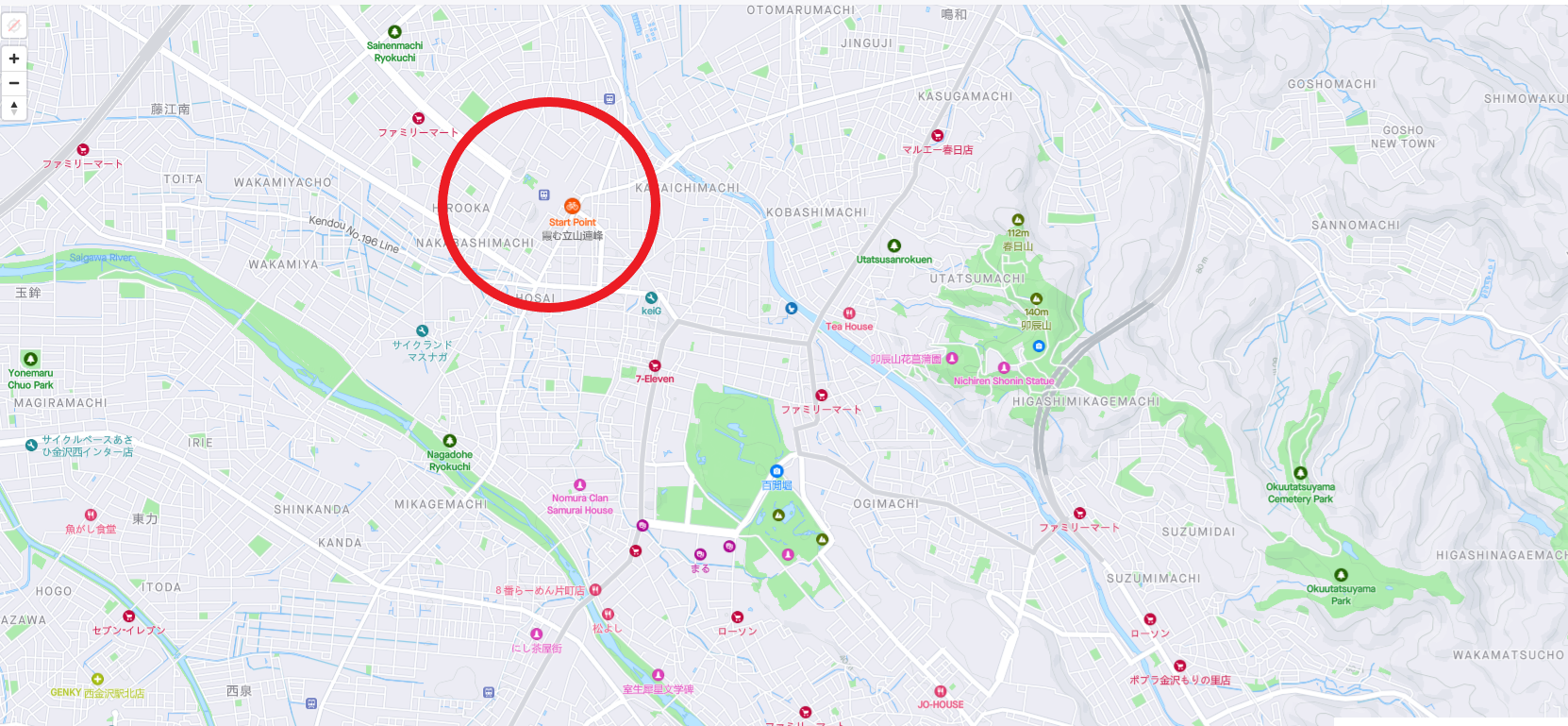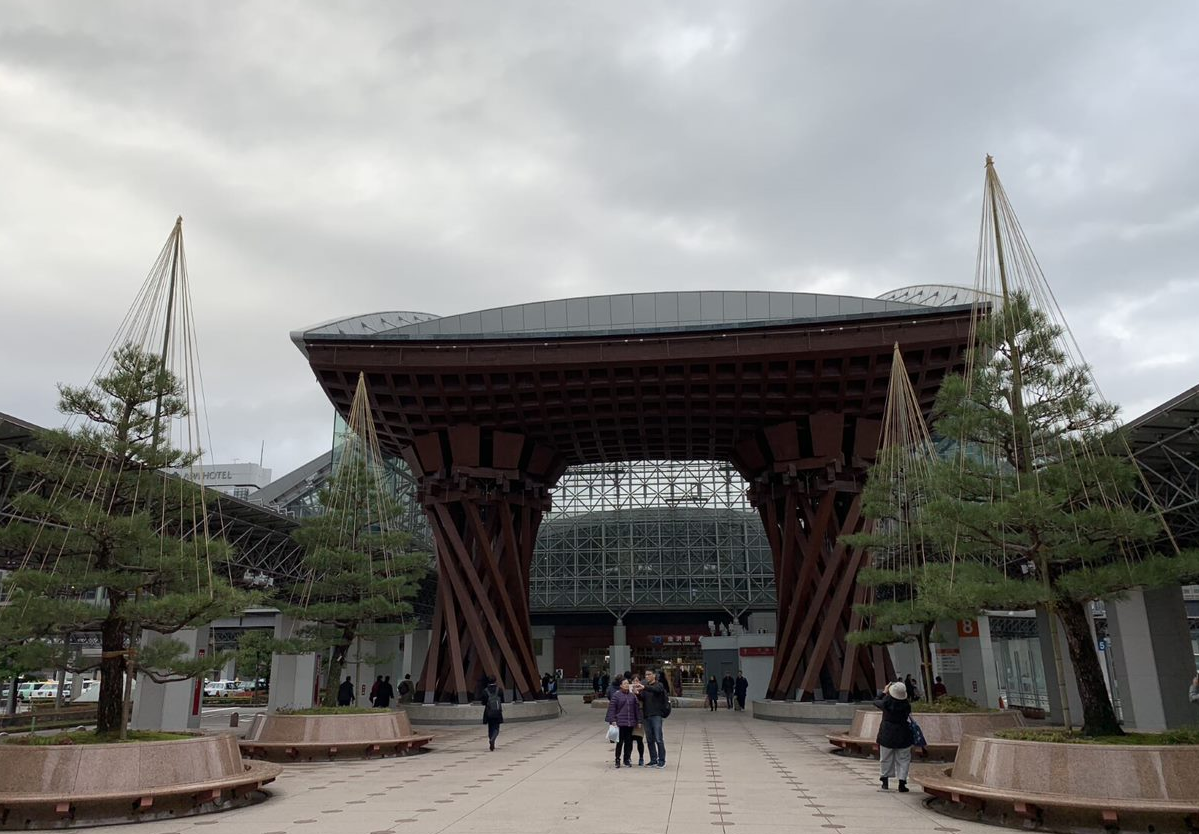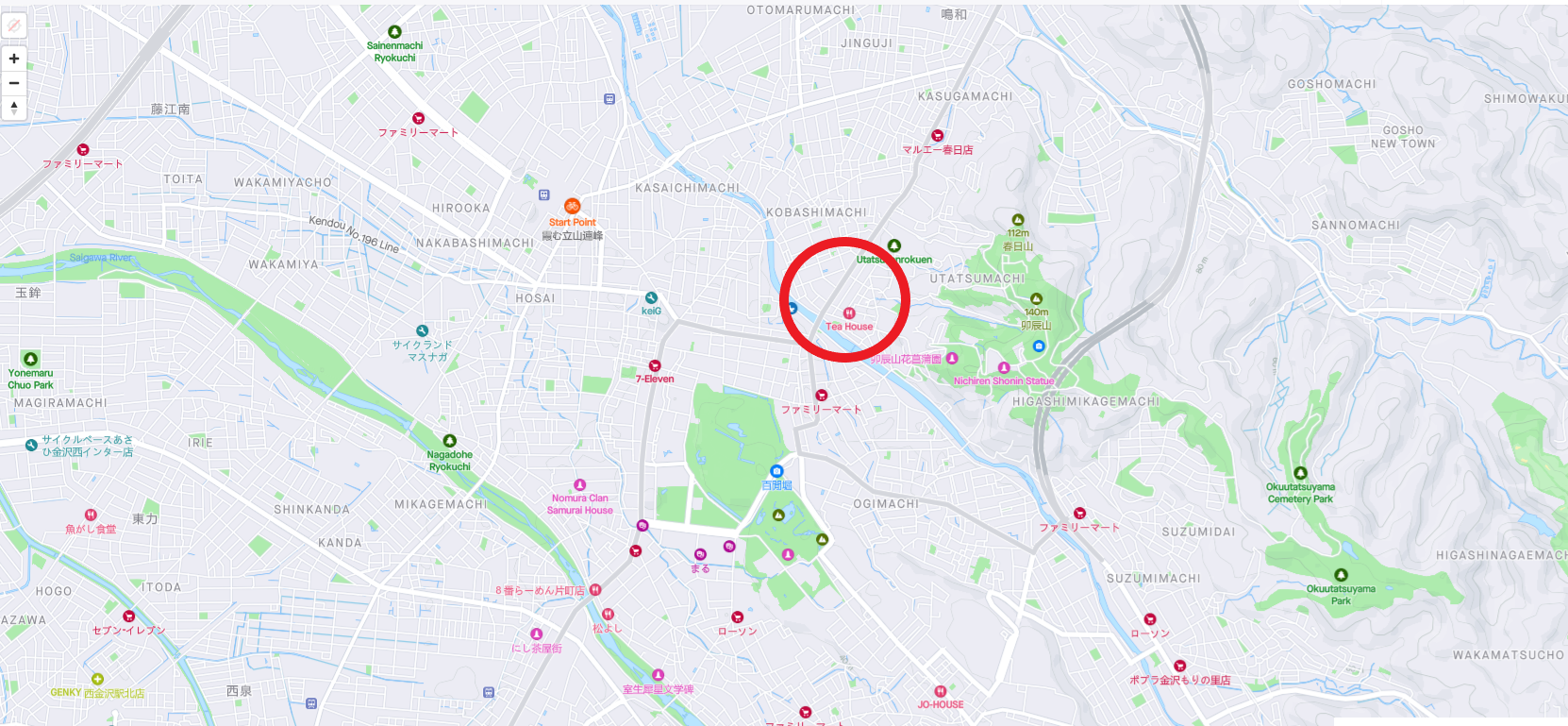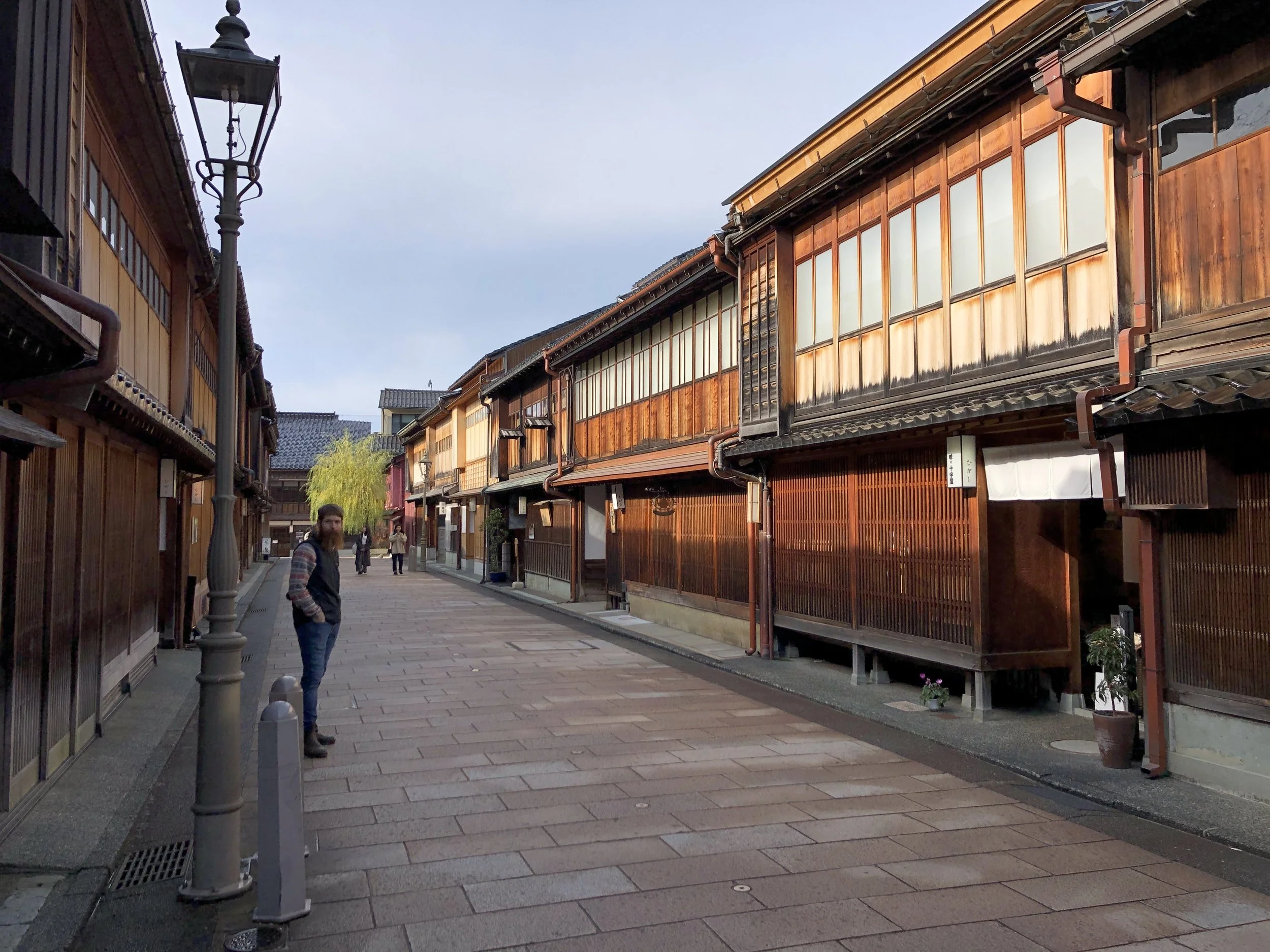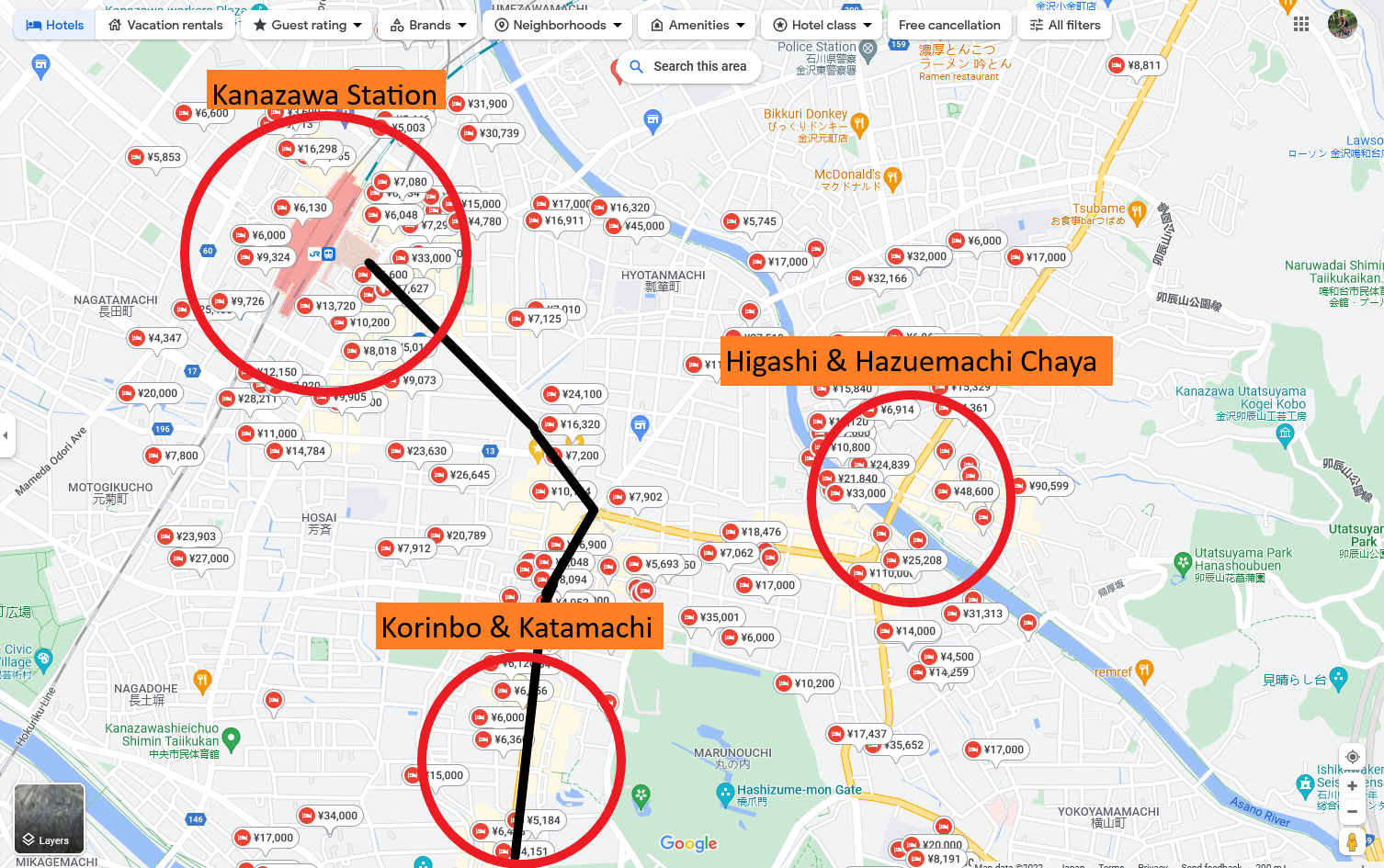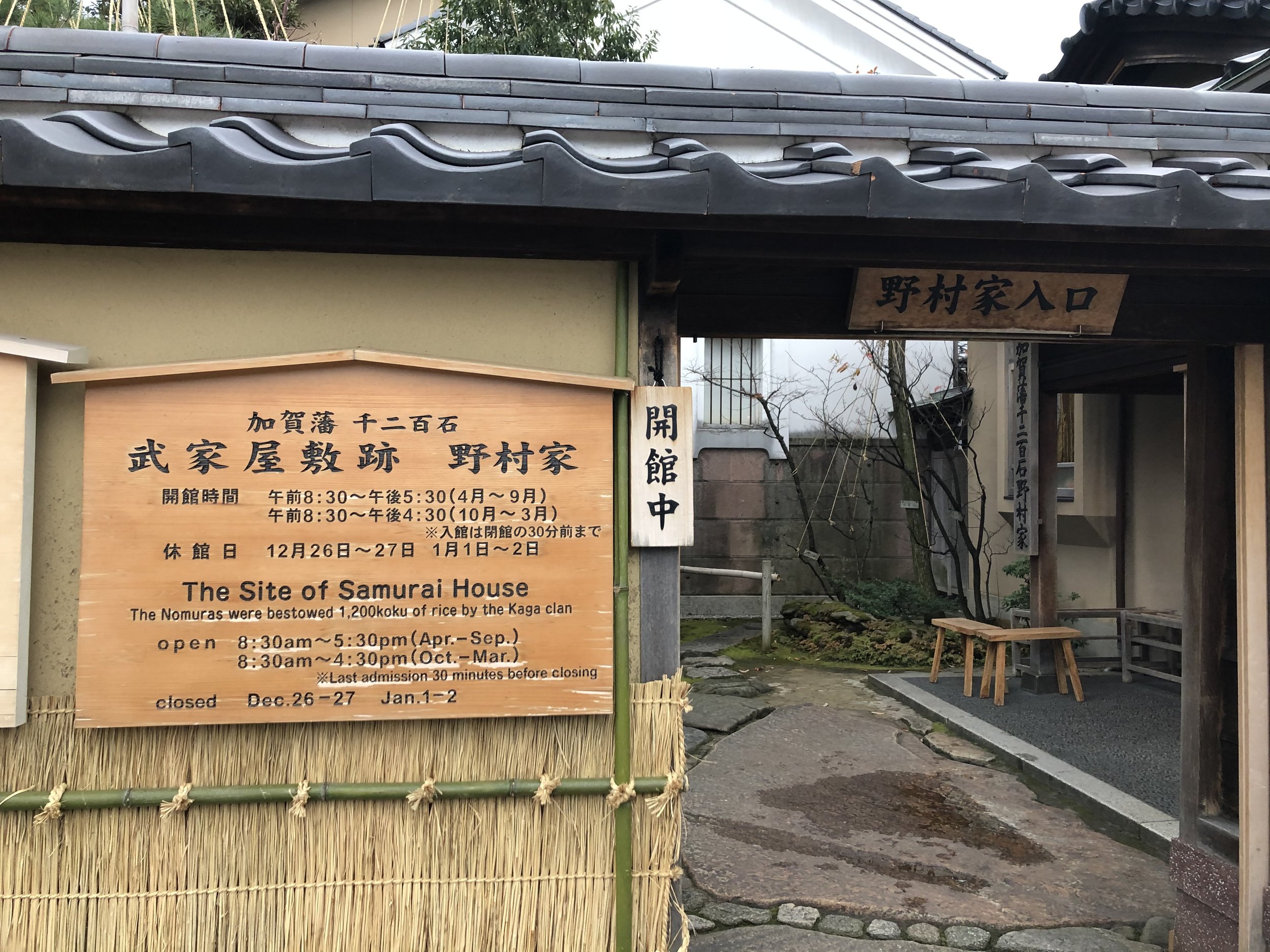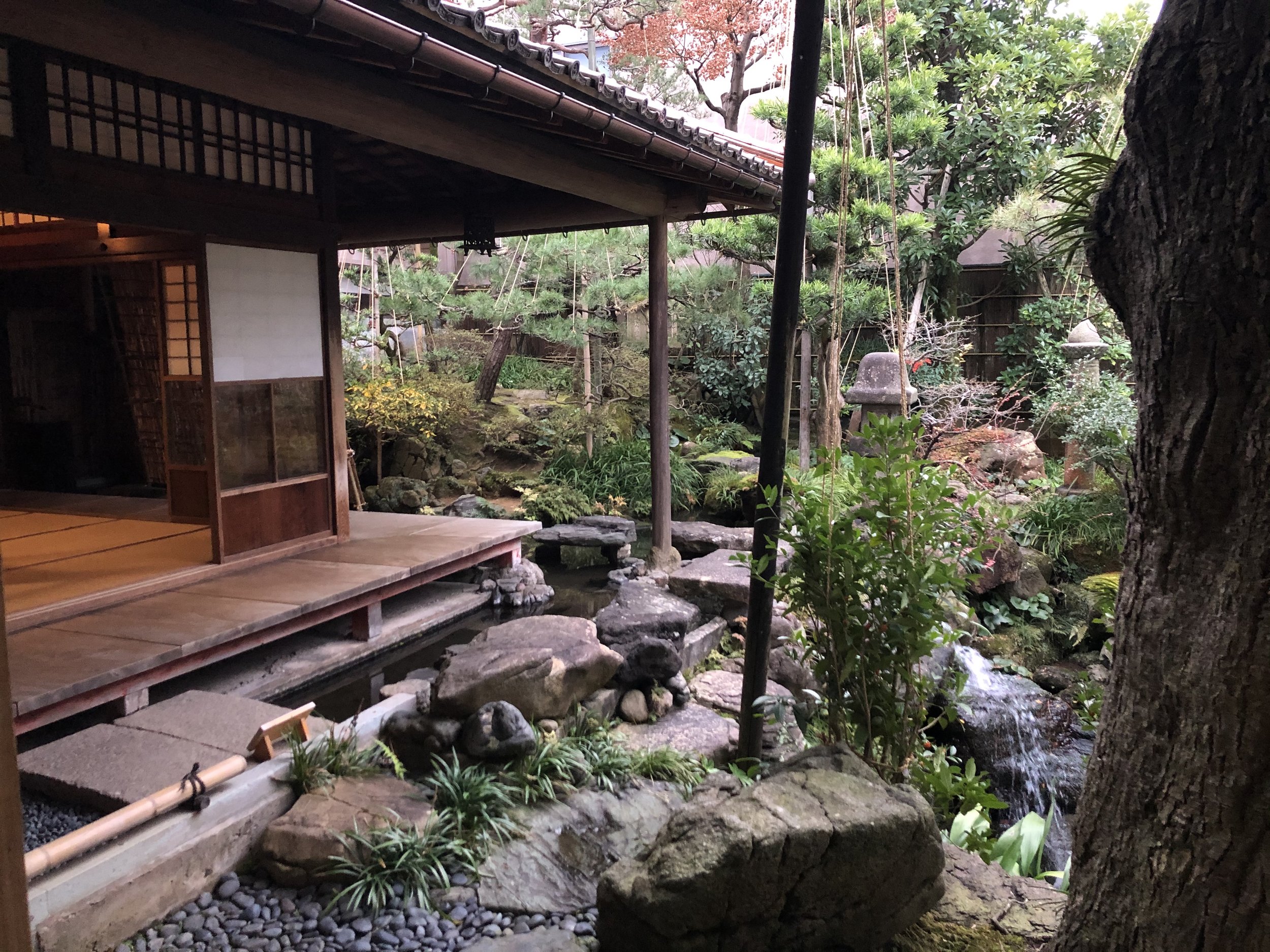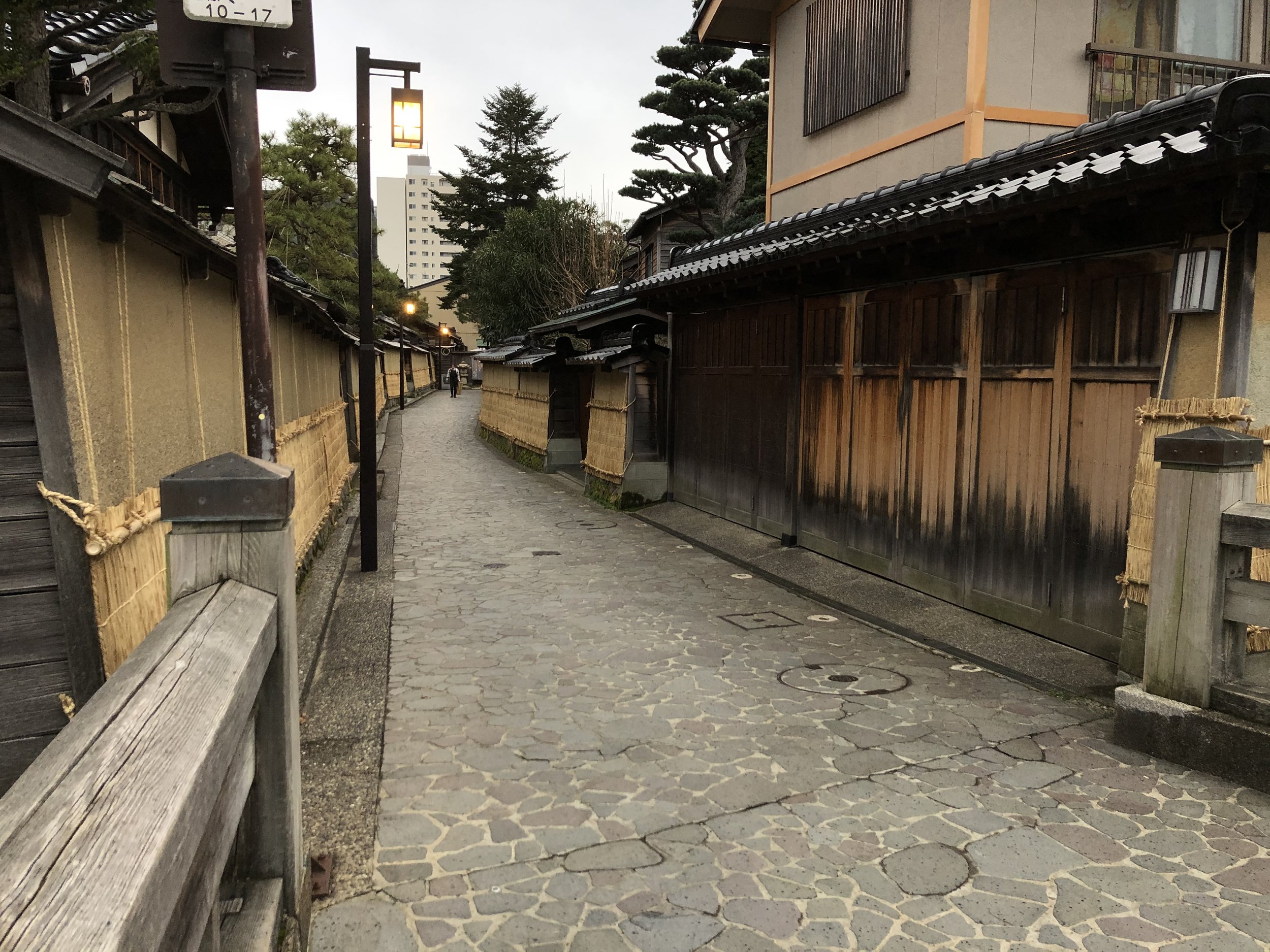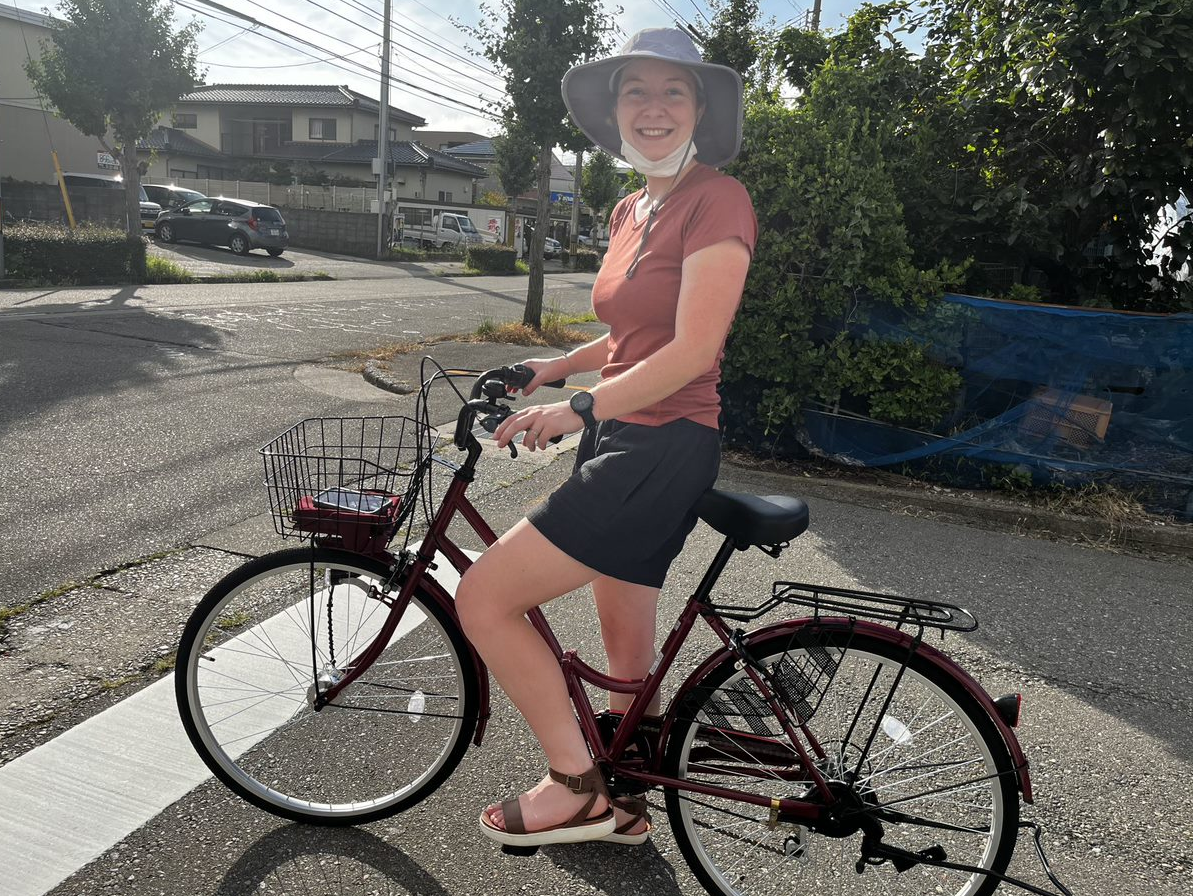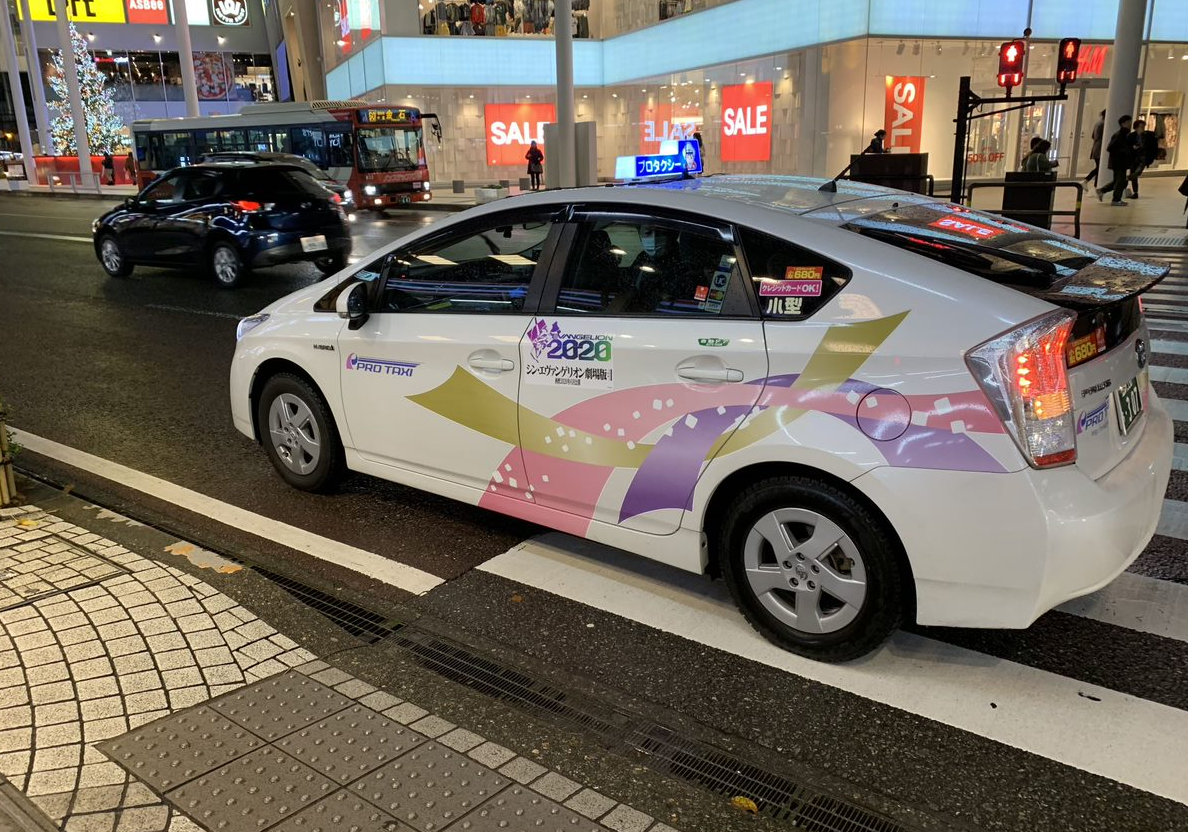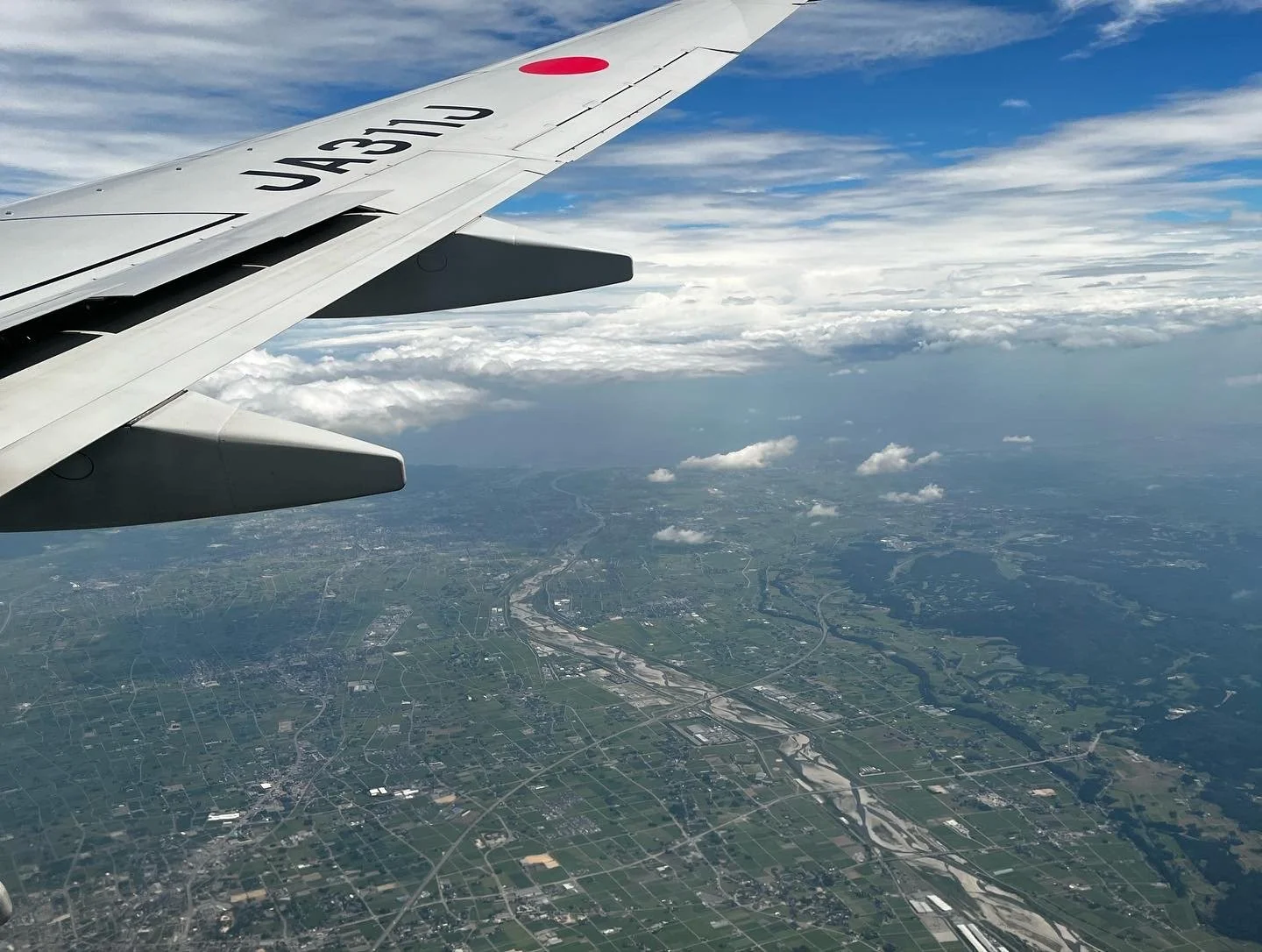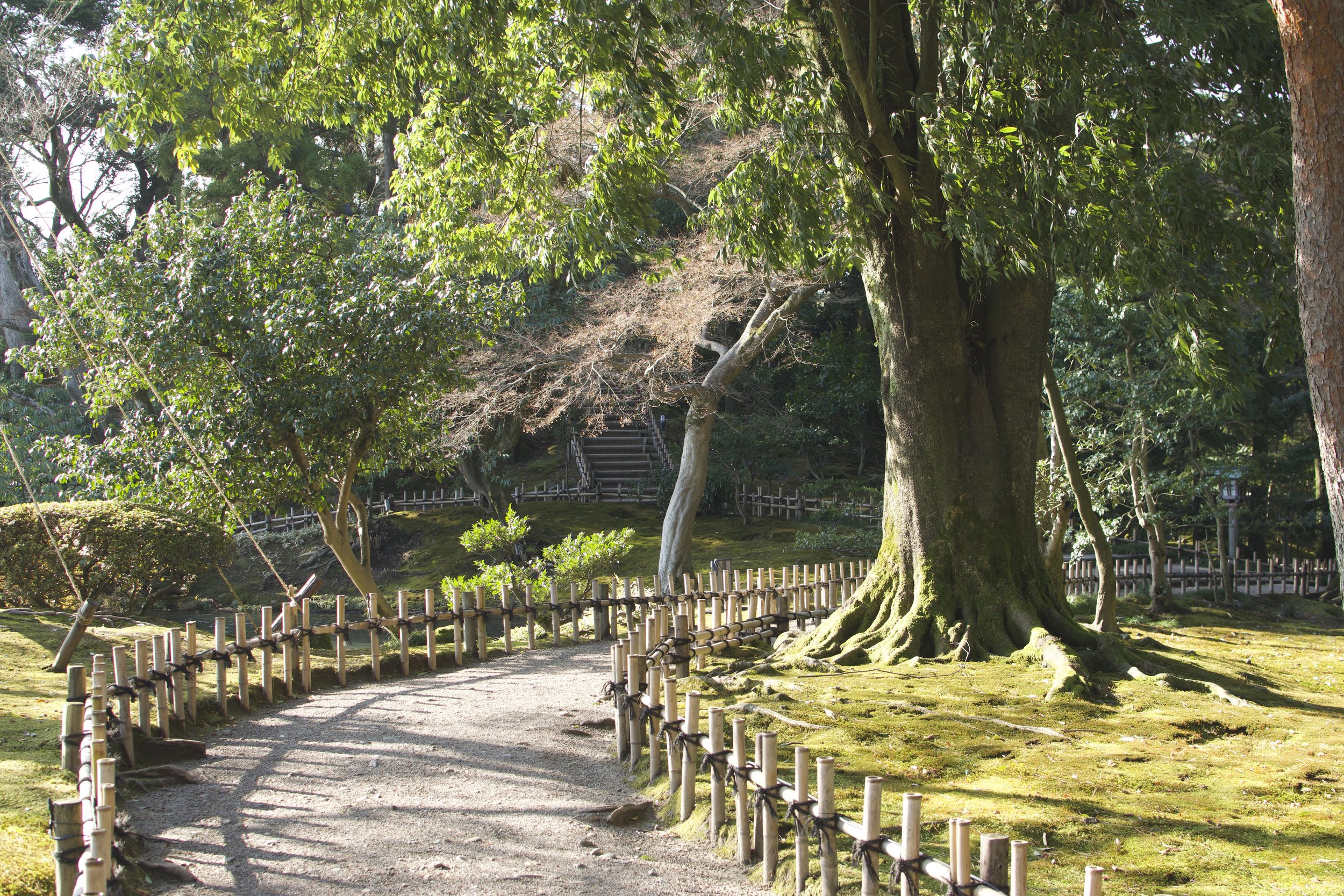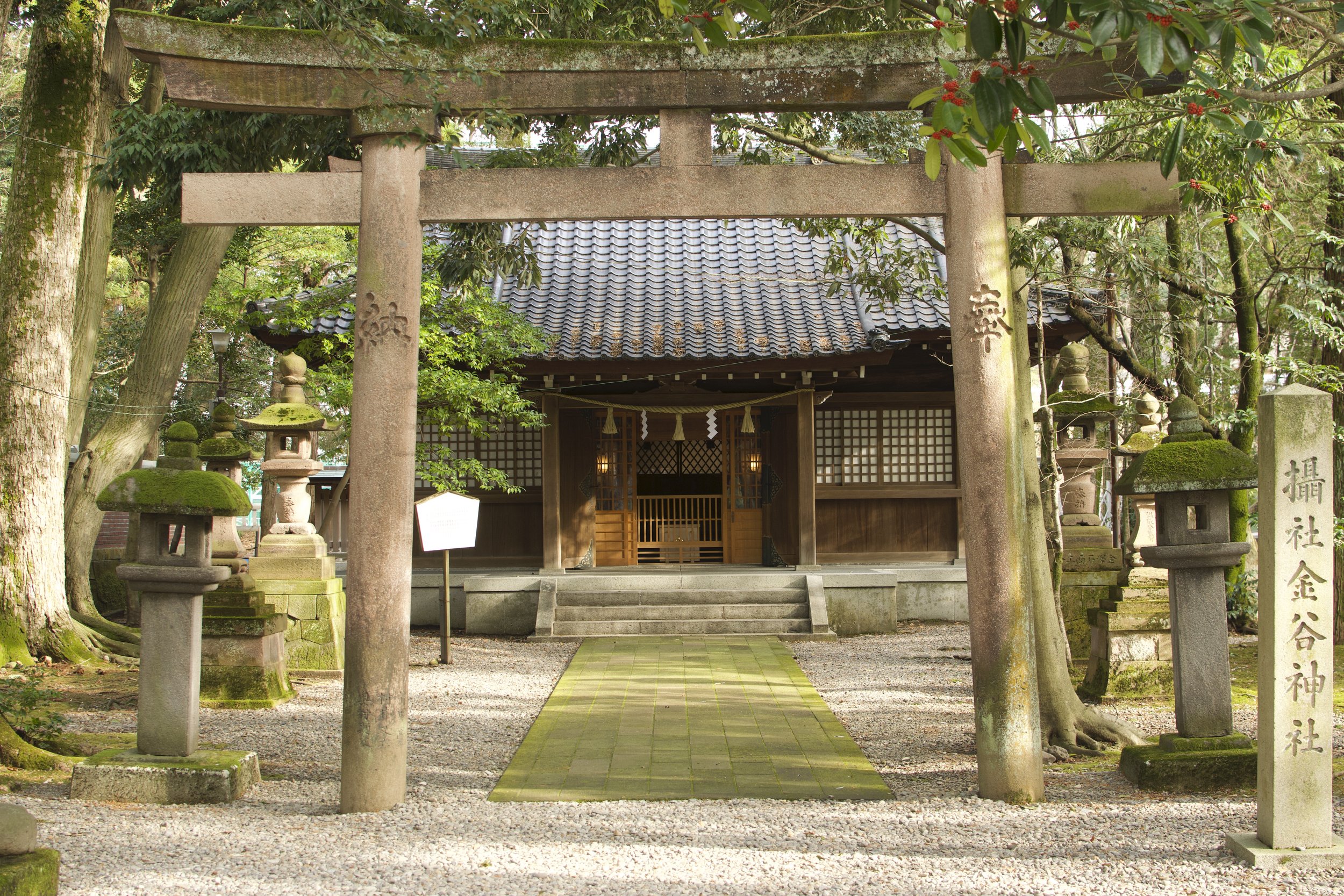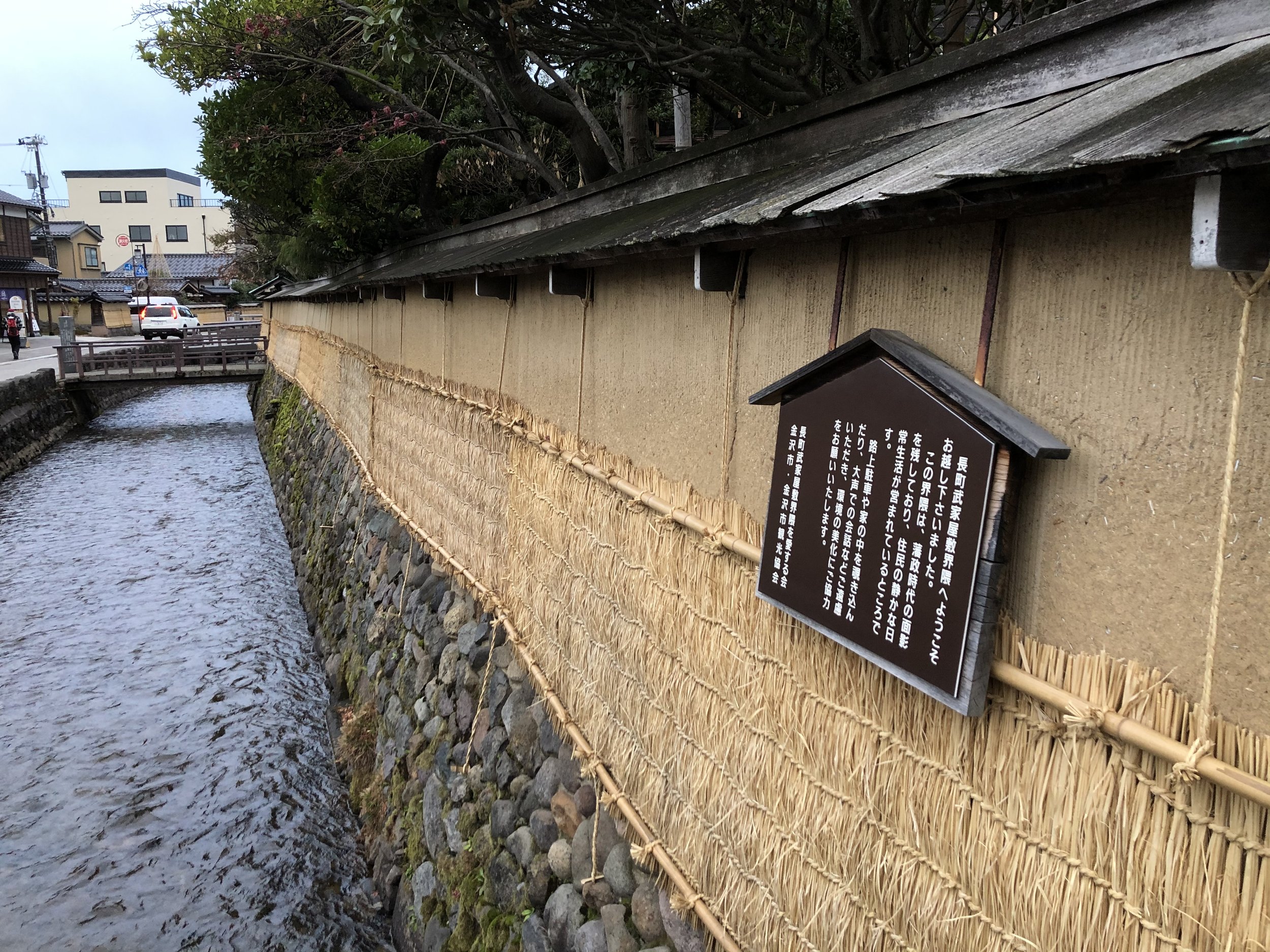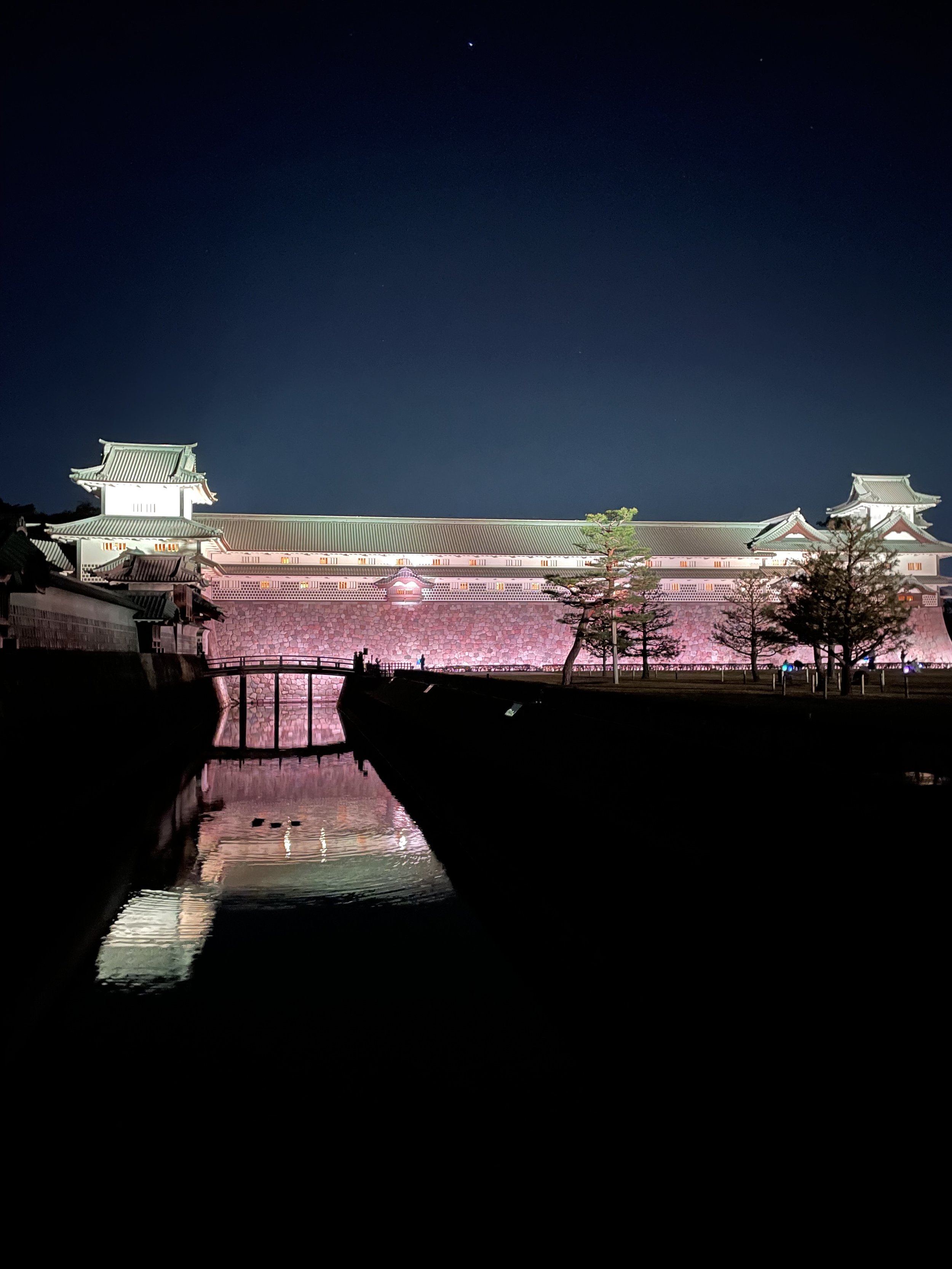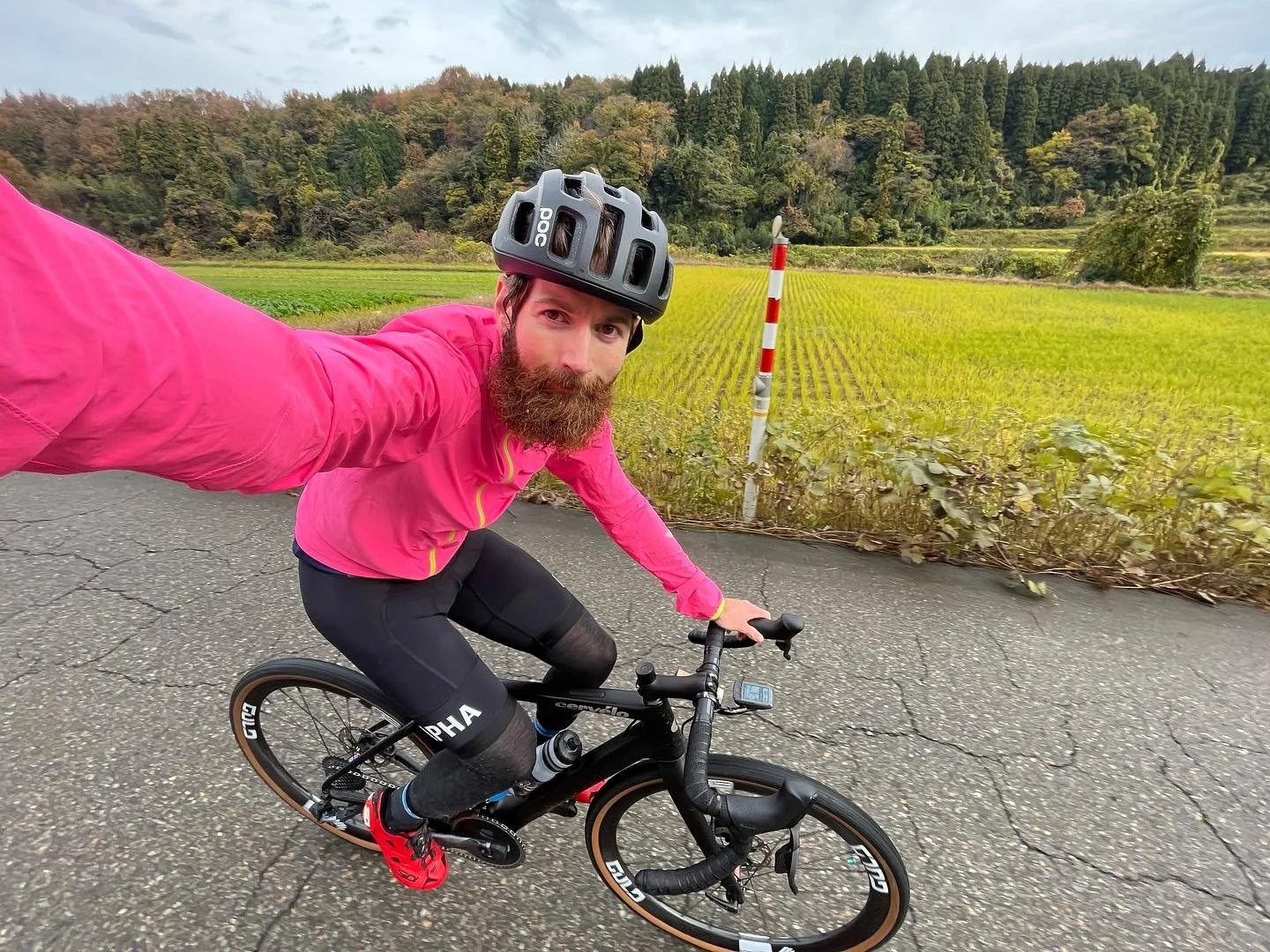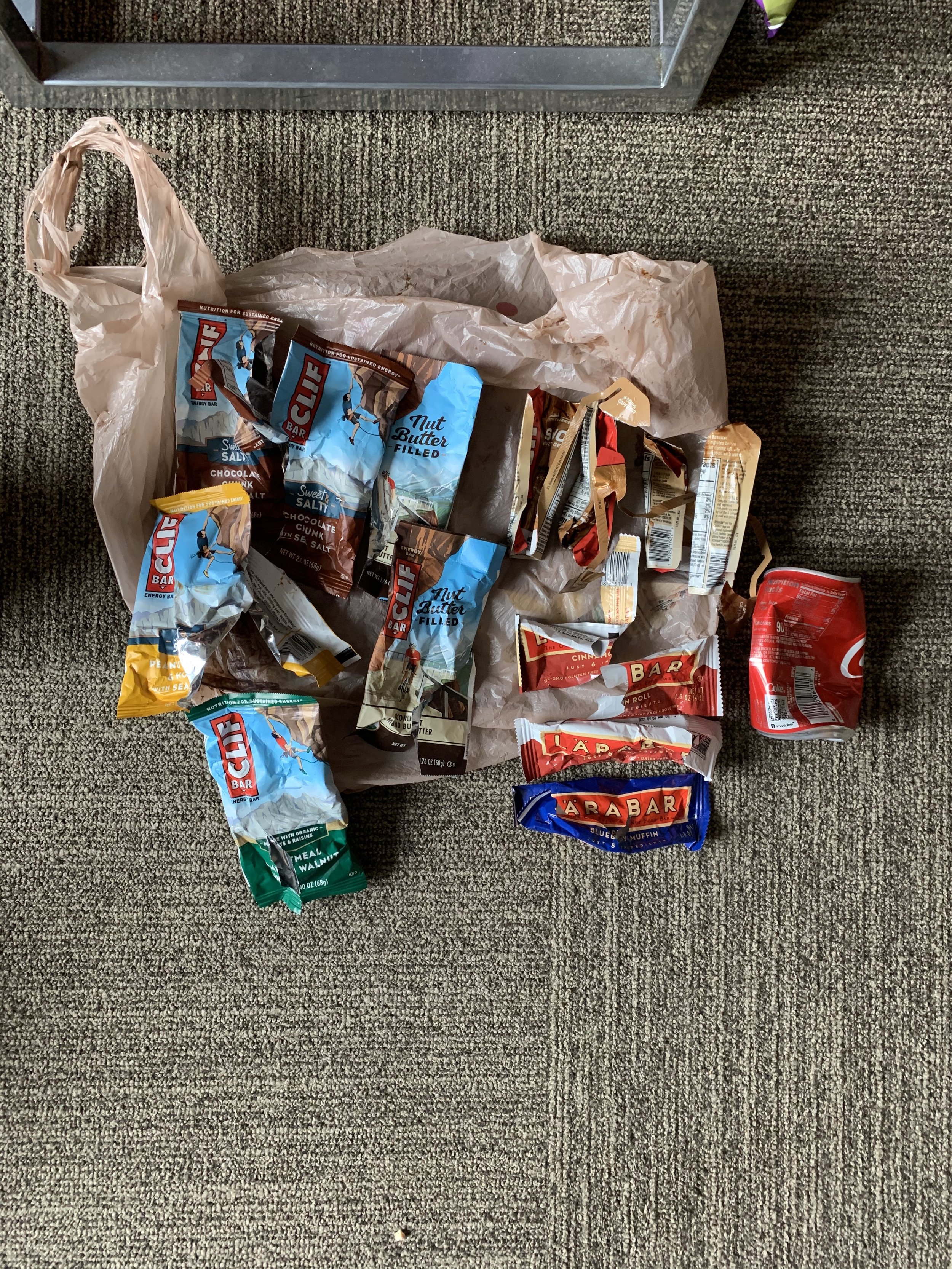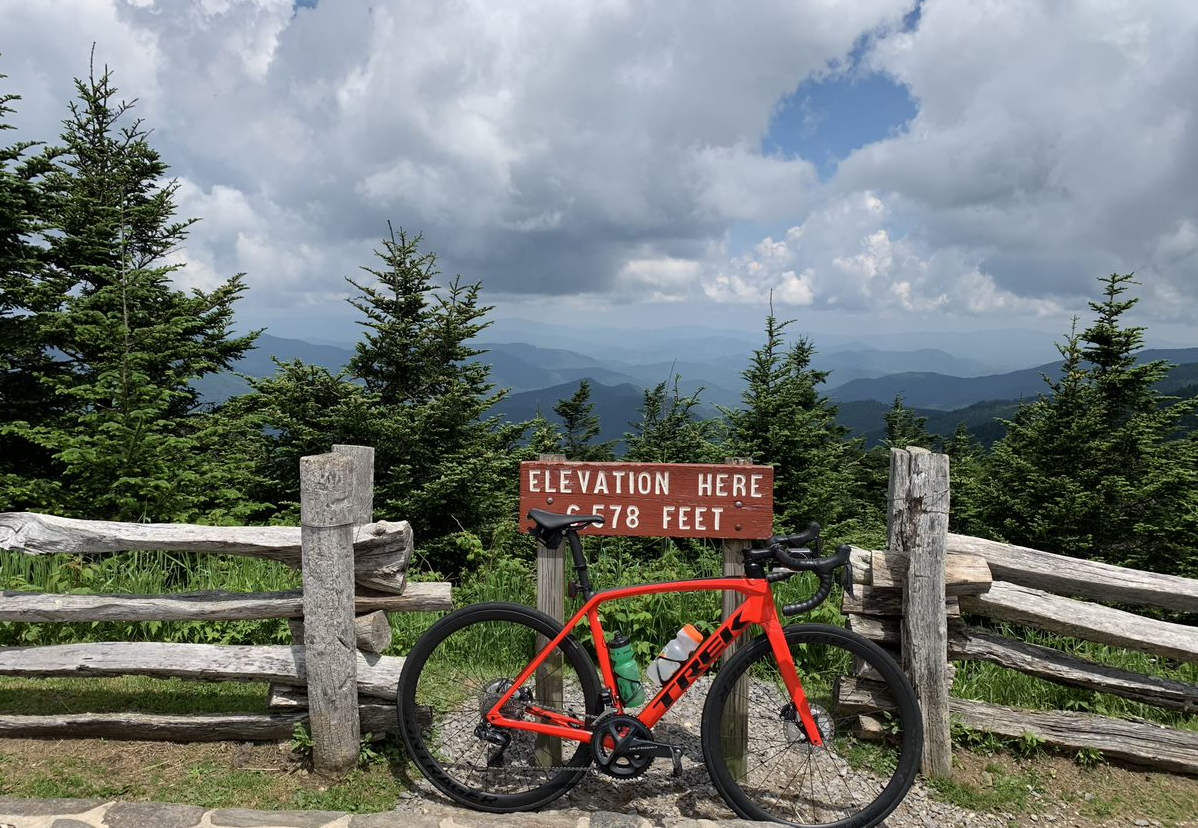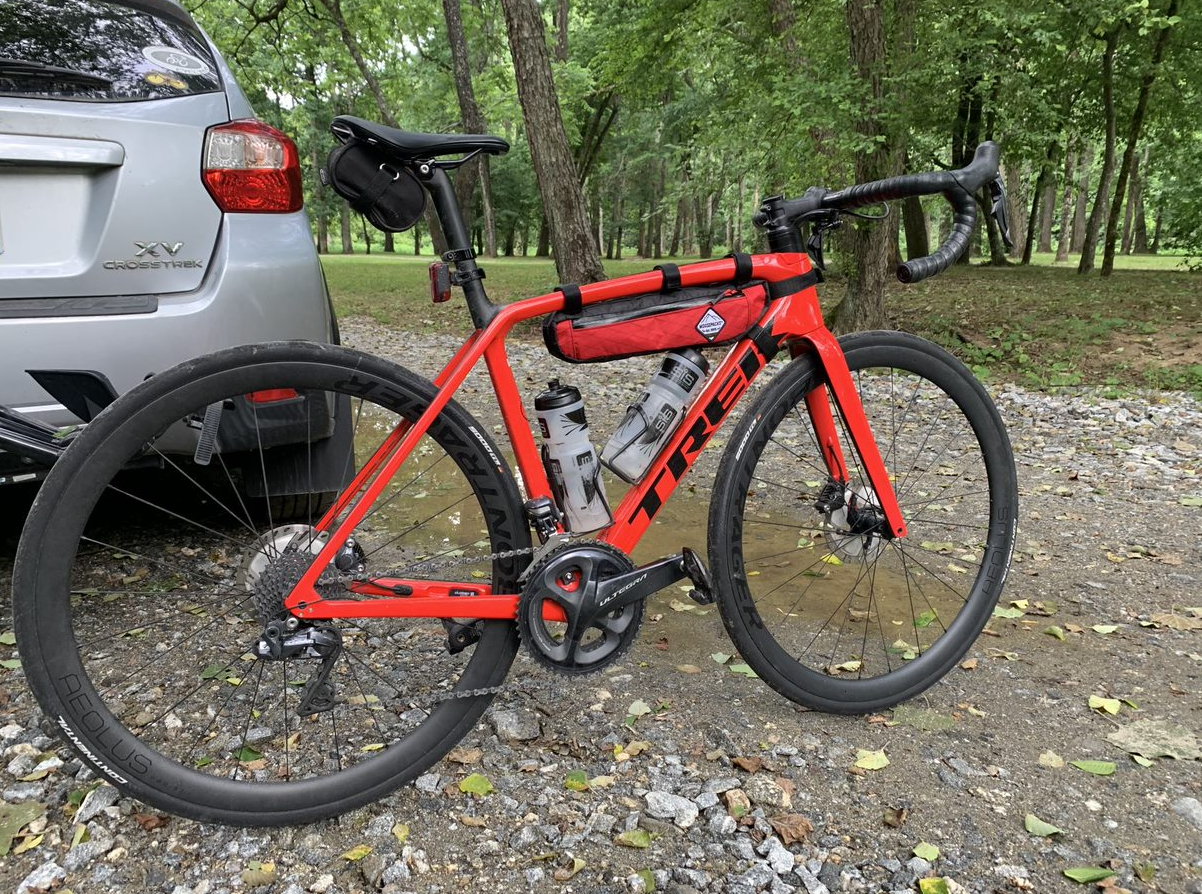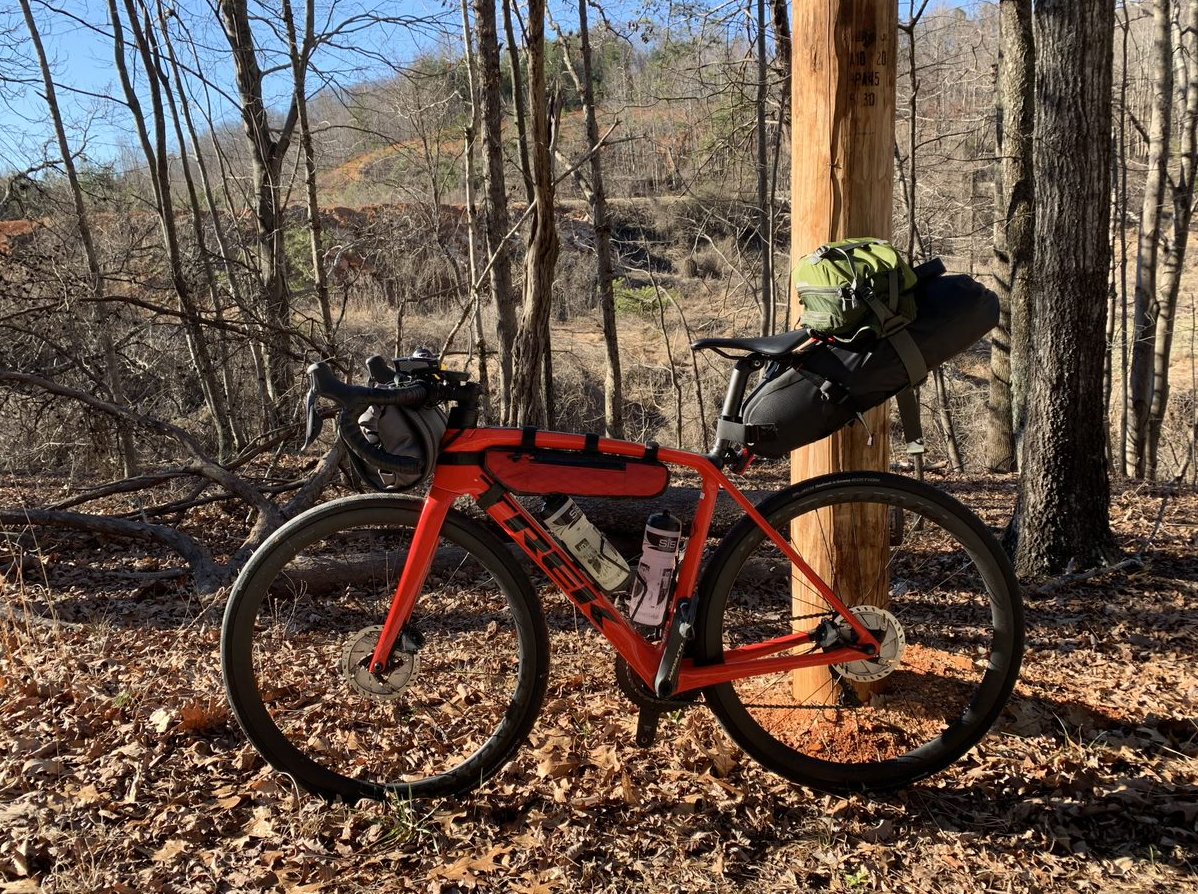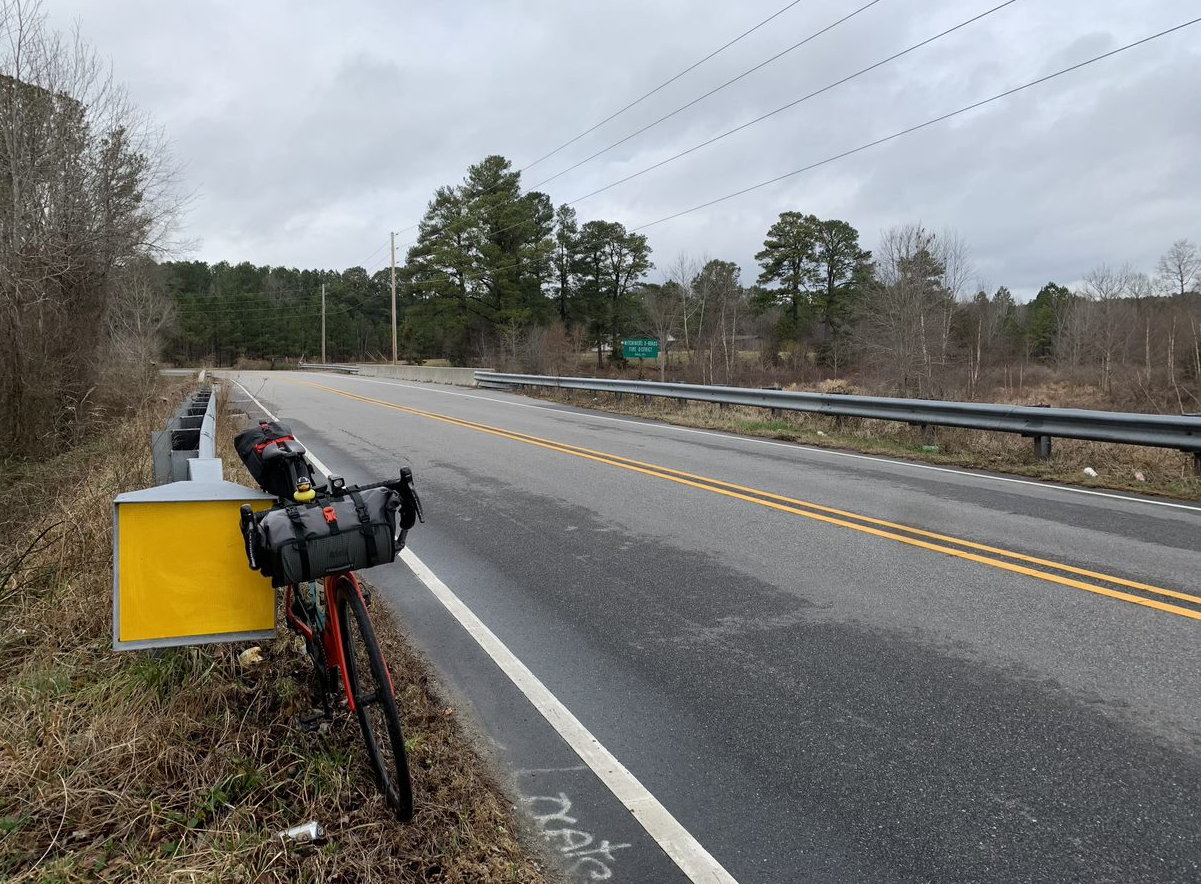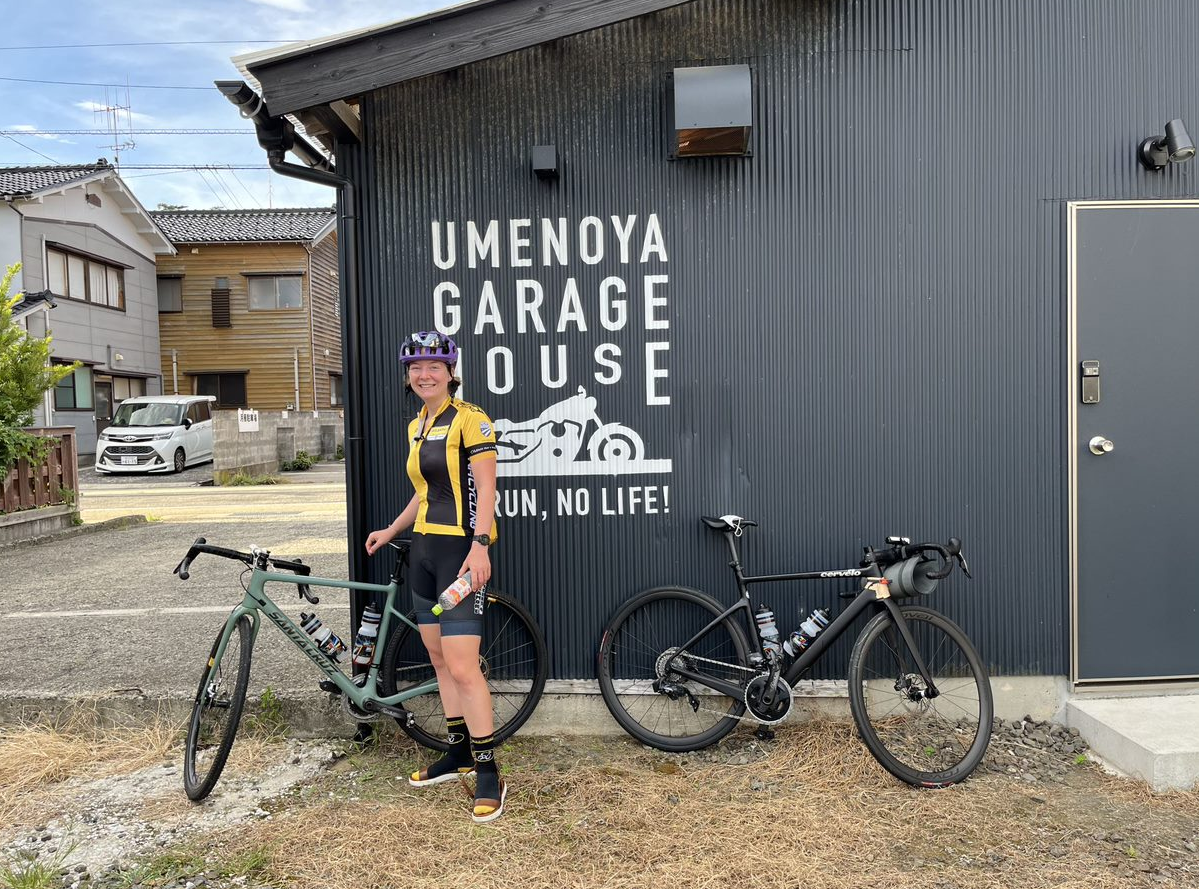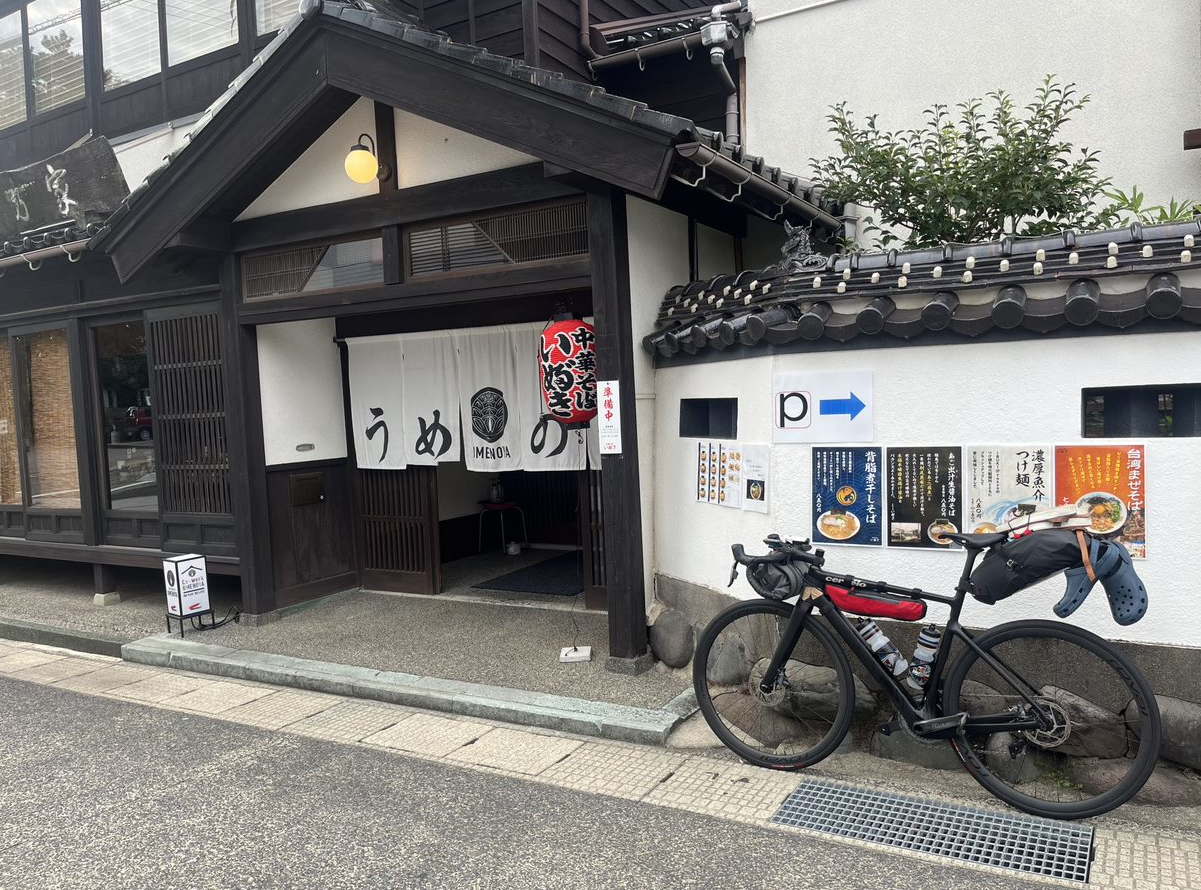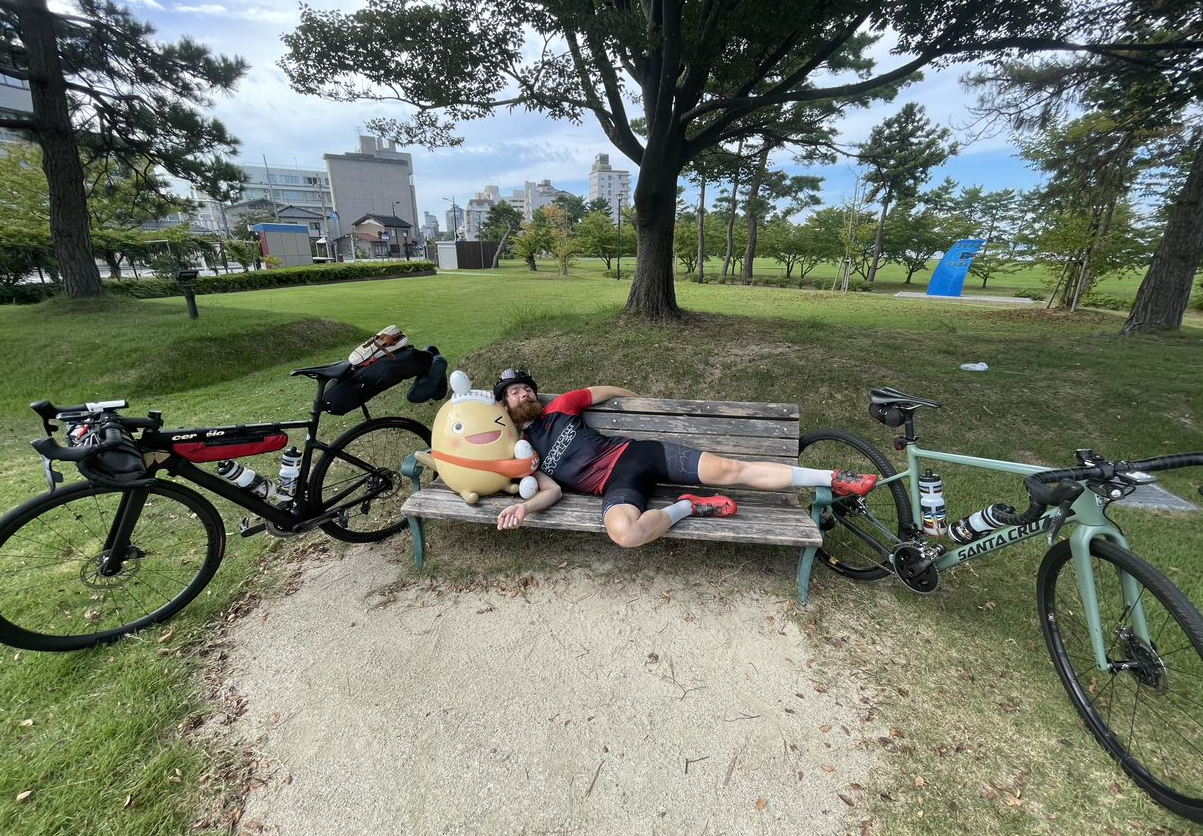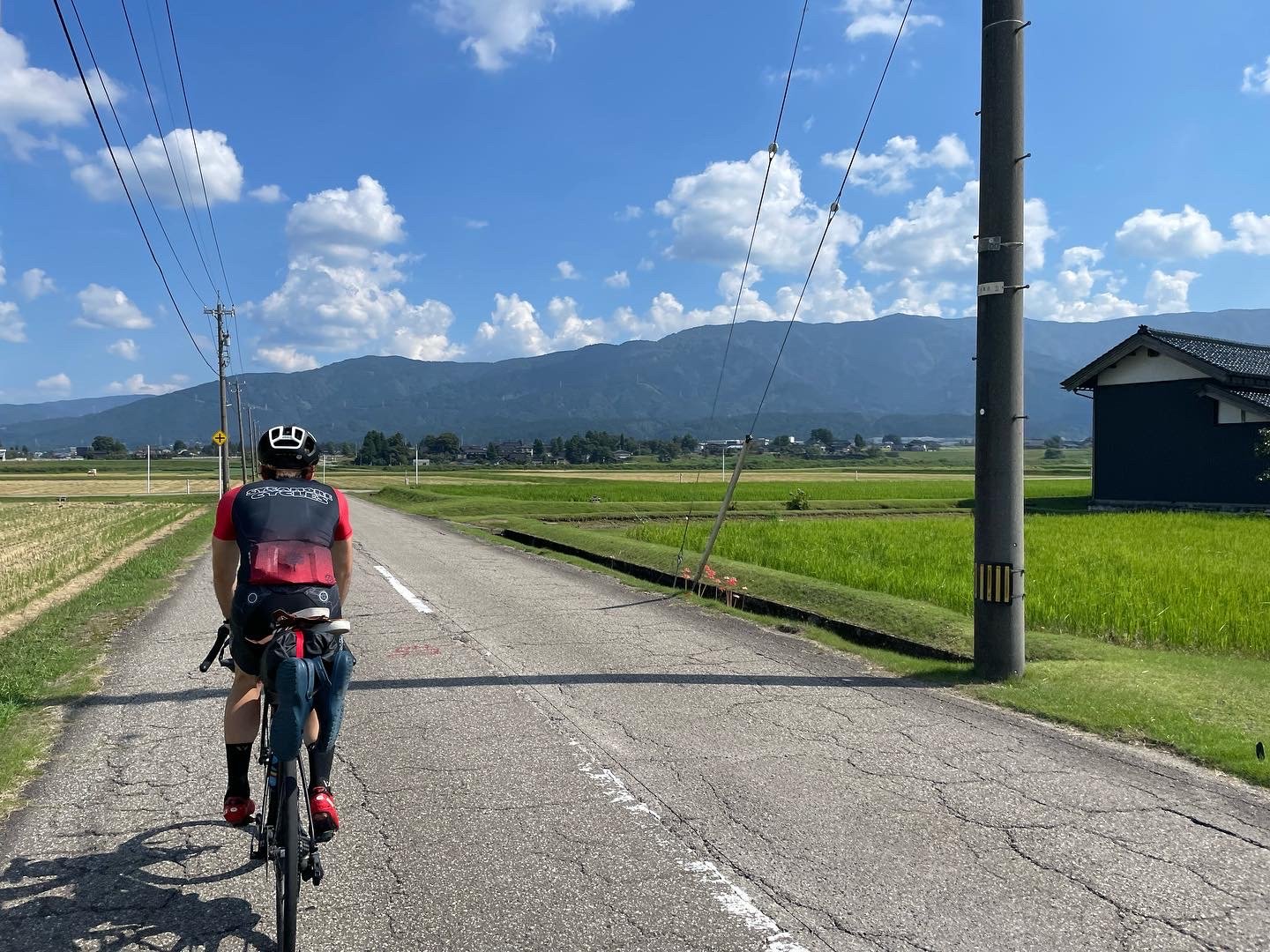What I talk about when I talk about cycling
In 2007 Haruki Murakami published a memoir titled “What I Talk About When I Talk About Running”. In it he explains his relationship with long distance running. Murakami is one of my favorite authors, but I never knew that he is also a long distance runner. It was fun to read a little insight into who he is. I guess in writing this I’d like to give you a little insight into who I am.
In this article, I’m going to do my best to explain what cycling is to me. I’ve sat down more than a few times with the intent to write something like this. I’ve never really been successful. I think to a certain point it’s because cycling means so much to me. For a concise article there’s too much to put into writing. But, I’ll try.
Very briefly, I think it’s somewhat important to understand how I got into the sport and where I was before. I was, mostly, an incredibly sedentary kid up until around the age of 18. At that time I was overweight and certainly not physically fit. My initial reasons for “getting in shape” weren’t the best (I thought girls would like me more), but those reasons got me started down a long path.
Through some friends I met while trying to get into playing rugby I ended up getting into cycling. First on a Walmart bike. Then a bike from the local recycling center in my hometown. Finally a proper road bike. Serendipitously a shop, Skinny Wheels, opened in that same town while I was away at college. When I returned home after my freshman year I sold some bonds my grandparents had given me and bought my first road bike.
Almost immediately I fell in love with the sport of road cycling. The initial hook may have been that for the first time I found a sport I felt I was naturally good at. Nothing else had ever stuck. I had tried the basics: soccer, baseball, basketball, football. I mentioned in college I even branched out and tried rugby. But, none of those kept my interest. It’s one of the biggest reasons I’d advocate for every kid to try as many sports as they can.
Road racing is a niche sport in the US so as a kid I wasn’t exposed to it. However, here I am now and cycling has turned into a huge investment of money, time and mental energy. Thankfully it’s also a lifelong sport that I can continue to do well into old age, helping me stay active. It can also be an individual sport so I can always do it on my own time. There are certainly worse things I could have invested myself into and I think it will pay good dividends long into the future.
I’m sure Eric, the owner of Skinny Wheels, would also agree as I bought all of my beginning gear from him. In exchange he helped me plant roots in the world of bikes. He took me on rides and let me hang out around the bike shop. Eventually I started seeking out local group rides and going on rides of my own. When I returned to college I learned there was a cycling club team and promptly signed up.
Since that summer of 2011 almost every major decision I’ve made in life has been shaped by the bicycle. It’s hard for me to imagine how different my life would look without one. The friends I’d make, my first job out of college, my (major) financial decisions, the desire to go to graduate school, who I ended up marrying. All because of a bicycle.
But what exactly does cycling look like for me day to day? When I talk about going for a bike ride, what does that mean? A majority of the time what I mean by this is that I’m going on a training ride. I have a goal in mind for that day and that particular ride which in turn supports a goal (or goals) which I have set out to accomplish that year.
These next few paragraphs make a shoddy attempt at describing what others have written entire books about. But, I think it’s good to have a general idea of what exactly I’m doing when I’m out on a bike ride. Since 2014 I have ridden with a device called a “Power Meter”. It measures my output or my physical ability as a rider. Throughout the season I’ll test myself with my power meter. This involves a maximum effort for 20 minutes. I take that number (the average power over 20 minutes), multiply it by .95 (95%) and get my “Functional Threshold Power” (FTP). My FTP then becomes my compass and it’s how I navigate my training. There are other metrics like heart rate, VO2, lactate, “perceived effort”, etc. But for me power is the simplest and most reliable.
You use your FTP to establish “Zones” which you then use for training. Zone 1 is “Recovery”, these are simple rides less than 55% of your FTP. Very easy. Zone 2 is “Endurance” which is in reality quite a bit harder than Zone 1, but it’s a Zone you should be able to ride in practically all day. That Zone is 56-75% of your FTP. Zone 3, often called Tempo, is 76-90% of your FTP. A well-trained cyclist can spend a lot of time in this Zone without becoming too tired, but long durations require concentration and may be difficult to maintain.
Zone 4 is around your “threshold” or 91-105% of your FTP. Zone 5 is 106-120% of your FTP and many cyclists can only spend 30-40 in this Zone. In Zone 6, at 121%+, you are “anaerobic”. You can’t take in enough oxygen to replace what you’re using as fuel in a short period of time. It’s extremely uncomfortable. Incredibly there is a Zone 7, and this is known as a maximal effort. The time you can stay in this zone is measured in seconds.
Using those Zones, I create a plan which if executed correctly will increase my fitness and prepare me to participate in races. There are an overwhelming amount of possibilities when it comes to creating a training plan. For this reason, many people hire a coach. For a long time my friend Reid coached me. Over the years I have taken an increased interest in planning my own fitness while learning about the process. Currently I spend a lot of freetime reading articles and researching training knowledge. Today I am entirely self-coached, but I still use a lot of what Reid taught me.
A road specific training plan encompasses a whole year, sometimes years. Typically October - January is the time for “building”. You’ll spend a lot of time riding in Zone 2 looking to accumulate hundreds of hours on the bike to build your “aerobic engine”. Around January - March you’ll start doing “intervals”. Typically two days a week (Tuesday & Thursday for me) are very structured. This is kind of a time to “tune” the engine you’ve built to get that top end performance out of it. You use your Zones to do this tuning, spending time in them to target certain performance gains or adaptations.
As an example, I’m currently doing quite a lot of “VO2” or Zone 5 work. A Tuesday workout would include riding 60-90 minutes in Zone 2 to my preferred interval location. Once there, I’ll do my intervals. 5 minutes in Zone 5, followed by 3-5 minutes of rest. I’ll repeat this 5 times before riding home.
Then March - September is when you begin putting your work into action. This is the Northern Hemisphere’s “Road Season”. Over these months you’ll continue to tweak, tune & build your engine while targeting a variety of competitions. It’s also a time for managing the fires that inevitably spring up such as illness, injury, work, canceled races, bad weather etc. Fingers crossed the whole time that your engine doesn’t blow. But, with a good plan it shouldn’t.
By the time September or October rolls back around, it’s usually time for a brief break. During this “off-season” training is cut back significantly to let your body and mind heal. Maybe you’ll take two or three weeks completely off, never touching a bike. For me this period is usually more of a mental break than physical. This break is incredibly important to have longevity in the sport. Once you’re well rested the cycle starts again.
All of this goes without mentioning nutrition, sleep, recovery and the simple act of balancing life with training. At the moment of writing I’m averaging over 15 hours of exercise every week. It’s a part time job on top of working a full time job. Without a doubt I’ve missed out on a lot because of my dedication to this sport. So why do I do it?
Over the years this has changed some, but there are two primary motivations for me when it comes to going for a bike ride. Having fun and the desire to be better. The scale slides back and forth between the two, but honestly they tend to overlap more often than not. I am having the most fun when I feel the strongest. The days I can go out and ask my body to perform and it just does. No need to have a mental fight, rallying myself to get through a workout and put out the target power.
It’s a simple idea. But, there’s the risk of it turning into a vicious cycle and “fitness” is in the legs of the beholder. I have come to have certain expectations for myself. Do I feel “fit”? Sometimes, sure. But, could I be better? Probably. When is enough enough? And do I train hard because being fit makes me happy or does riding make me happy so therefore I am fit? Again, I think it’s a bit of both. But it’s a balancing act where I try to keep myself in check. I have known too many people that experience burnout in the sport. Going from a peak, winning races, to not riding a bike at all and eventually hating the sport. Although now I have been in the sport long enough to see that in the end a lot of them come back around.
That’s a lot to unpack. And I think what I said above holds true. Although I still have days where I question if it’s actually “fun”. Imagine that it’s the middle of winter. It’s a Saturday and the temperature is hovering around freezing. I’m supposed to do a long training ride that weekend. There’s snow in the forecast on Sunday so I need to get it done Saturday. But that afternoon we’re supposed to go to Annie’s family’s house. So at 6am I’m awake, dressed, and about to start a 5 hour bike ride. Why? Who does that? I’m not even getting paid (the last race I did I won a towel…) It’s a Saturday. I could get the woodstove going again, make pancakes and enjoy a leisurely morning drinking coffee with my cats.
At that moment, when my alarm goes off at 5am, I am not having fun. At 8am, around halfway through that ride, I’m probably still not having fun. And I’m freezing. I hate being cold. However, that afternoon sitting at Annie’s folk’s house by their fire thawing out with my ride finished, I’m having fun. I’m tired. But I'm happy. I think happier than I would have been had I gone the leisurely morning route.
That might ultimately be the “why”. Conveniently in cycling I have found a form of suffering that I enjoy. At the heart of it, riding bikes is fun. Sometimes though? It sucks. I have never been both happier or more miserable in life than I have been on some bike rides. In a weird way cycling makes me realize how good I have it while also letting me experience quite a lot of suffering.
That’s the more romanticized and existential version of it. On a lighter note and what is the least high and mighty reason, cycling is the most aesthetically pleasing sport out there. I know, beauty is in the eye of the beholder, and I do be-holdin a bike. But, in one day a bike race can take a viewer from a country-side village in France through the snow-capped alps and back down to a heavily populated urban center. All while traversing valleys, meadows, rivers, agricultural fields and a landscape dotted with castles.
From the perspective of storytelling, on that same day you can watch a rags to riches story as one rider changes the course of their life by winning a race. In that same moment you can experience the tragedy of watching a rider come so close to that life changing victory, only to be caught in the final seconds. There’s really nothing like it.
Obviously as an amateur I’ve never experienced feelings of that magnitude. But, us amateurs can get a taste of what it’s like. Not only can we ride on the same roads as the professionals use, but we can also continue to compete well into adulthood. The same day I’m watching a bike race I could have participated in one myself. It’s on a much lesser scale, but the sensations the riders I’m watching on TV experience are sensations I may have just experienced myself. My ability to empathize with them has increased and often when I watch a race I’m emotionally invested in a way I couldn’t be while watching anything else.
So what am I talking about when I talk about cycling? I guess it’s a lot.
Do you have a Third Place?
Do you have a third place? The term “third place” is accredited to Ray Oldenburg’s 1989 book “The Great Good Place”. It’s not your house (that’s your first place) and it’s not where you work (that’s your second place). Your third place is somewhere that’s more public and it’s usually a place of leisure and conversation. Examples could include: the restaurants in “Seinfeld” & “Midnight Diner”, the cafe in “Friends”, the bar in “Cheers”, and the Gryffindor house common room in “Harry Potter”.
Recently I’ve noticed a trend online where people are beginning to talk about third places. You may have noticed the same thing in major news outlet articles, or in posts on social media platforms like Instagram, TikTok, and Reddit. People are becoming more concerned about access to these places. Annie and I even discussed third places in Japan in a recent podcast episode.
The public bathhouse in Kawayu Onsen, which we visited on a cycling trip weekend in Wakayama Prefecture.
In that episode we talked about third places in Japan. For the most part they are very similar to anywhere else in the world. Although a notable exception is the Japanese bathhouse. There are multiple types of bathhouses but the two big ones are “Onsen” and “Yu”. An onsen has hot water supplied by a natural hot spring while a yu’s hot water is heated by a boiler. The latter is quietly disappearing from Japanese cities, especially in Tokyo. They’ve largely been on the decline because people have found it more convenient to simply bathe at home.
I believe convenience is a huge factor in the downfall of the third place. Why would I leave the comfort of my own home, my first place, to spend time out “there”. I have everything I need at home. Annie and I talked about the lack of third places, but I think it comes down more to a lack of willingness to go inhabit these places. I can walk to a local bathhouse in around 10 minutes. But, it’s easier to take a bath at home and then lay on my own couch. Alongside convenience you could also look at the availability of third places and if there are any close to you in your community. While I’m lucky to have that bathhouse nearby, many people do live in a “third place desert” where there are no options.
A cozy morning at home in our apartment.
Maybe like me, you do have a third place you can visit. But there’s another potential problem. It often isn’t just an investment of your time, but also your money. This is slightly less problematic in a country like Japan with a relatively low cost of living. However, it’s still a barrier to us going out. We can easily spend 1,000-1,500yen (around 7.50-10usd) at a cafe which isn’t a lot, but again… we have coffee at home. And overtime that would add up. After all, I feel like every subscription service is always comparing their monthly cost to a cup of coffee. Why should we go sit in a cafe when we can read articles or watch shows online from the comfort of our own home, drinking the coffee we already paid for!
One more issue which is more complex and probably beyond my personal ability to grasp, but I have a gut feeling that it isn’t good, is social media. Some people have included the virtual world of social media and online games in the same category as third places. Others have put them in a new category, maybe similar to the idea of a “fifth place”. Social media scratches a similar itch to having real human interactions. Some days you’re tired, too busy, or don’t have the money to go to a third place. You can sit on your couch, with your phone or your computer, and feel like you’re socializing. It’s more convenient and it’s cheaper.
There’s no shortage of great cafes here in the Kanazawa area.
It might sound like I’m somewhat anti-third place. But, that’s not the case. I really do like the idea of having a third place. I’d love to find a cafe somewhere that I could become a regular in. A cozy “home away from home” that has the excitement of people watching along with the thrill of a chance encounter. I could be a background character in someone else's story. However, you just read a few barriers I’ve established for myself as to why I don’t do that. And maybe that’s the biggest issue of all with third places.
It’s not them, it’s me. I have a lot of personal values. I pay attention to what I eat, I exercise often, I make sure I get a good night’s sleep. I try to spend time writing, reading, and being creative. Every day I study a new language. But, community and socialization more often than not falls through the cracks. And I think for a lot of people, at least from what I read online, it’s the same. We have plenty of reasons and excuses (many of them legitimate) as to why third places just aren’t “working”.
I’d argue that it could be that they’re not working because we’ve lost sight of their intrinsic value. It seems like there are plenty of people coming around to the idea that they are, like Oldenburg said, essential and provide many benefits to a healthy society. Talking only about myself now, it could be that it’s a choice I need to start making. I do a lot to take care of myself. But, I also still have unhealthy habits that I’m aware of. I probably spend too much time online. When my phone tells me my Instagram time is up for the day, I’m too quick to click the option to extend the limit.
Maybe it’s time to start being more intentional about visiting third places. I know that I could make a greater effort to spend time outside of my house. Scheduling “third place time” might take away some of the magic of the moment, but it could certainly help in making it happen. And who knows, maybe after that it could become a habit.
-Zeb
The Ishikawa Prefecture Library, a great Third Place example.
A Kenrokuen 兼六園 Snow Day
Visiting Kenrokuen is one of my favorite “tourist” activities to do in Kanazawa. Out of all of the top attractions in the city, it’s the one I have visited most often. It’s also the one that I never feel bad about paying to see and every time I leave thinking I’ve gotten my money’s worth. If you’d like to learn a little bit more about the garden you can read about it in one of my other blog articles about Kanazawa’s top attractions. But, maybe you’re already sold on dropping by. Did you know that you can visit the garden for free?
During the following dates and times you can freely explore the garden’s grounds.
March 1 - March 31 from 5:00 am
April 1 - August 1 from 4:00 am
September 1 - October 31 from 5:00 am
November 1 - February 28/29 from 6:00 am
The only entrance that you can use however is the Renchi-mon gate (蓮池門口). And you must leave the garden 15 minutes before the official (paid) opening.
Aside from the small savings (it’s 320 yen for adults) there are a few other reasons I think that this is the best time to visit. Most mornings you’ll be one of the few people within the grounds. The other visitors will often be either locals out for their morning walk or photographers. You’ll be free to enjoy the garden’s many sites in relative peace. And on a good day you’ll also be able to see a fantastic sunrise!
The biggest negatives to going early are that the staffed attractions inside like the tea houses, snack shop and museum, won’t be open. Cafes in Japan also open notoriously late, so if you want coffee and breakfast before going you’ll be reliant on one of the many 24/7 convenience stores.
In January of 2024 Annie and I went early one day to enjoy the garden blanketed in snow, which was an item on my unofficial “Kanazawa Bucket List”. We’ve been lucky to visit many times throughout the year, but had yet to catch it in the snow. So with winter weather in the forecast we made the trip to arrive at the entrance around 6 am and were rewarded with a wonderful time exploring the grounds. Below you’ll find some more photos I took from the day. I can’t wait to go back again for another morning visit.
The Matsumoto Bike Tour
7 days | 430 Miles, 34,824 feet | 690 Kilometers, 10,601 Meters | 30 Hours | 4 Prefectures
In August of 2023 Annie and I set out on our biggest bike trip. You can watch our video documenting the journey here. We pedaled from our home on the sea of Japan coast deep into the Japanese alps and back.
Our self-supported bike tour took us from Kanazawa (金沢)
in Ishikawa Prefecture to Matsumoto (松本) and back again.
Generally, this is what our days would look like: Because of the threat of summer heat and humidity we woke up every day at 4am with the intent to be on the road by 5 or 5:30. This meant a bedtime of 7-8pm each night. Most days we finished riding before noon just as the day was beginning to heat up. Being on the road early also meant great traffic conditions and less crowding as we passed through some of the more tourist heavy areas. The only downside was that we finished hours before check in. However, we spent this time swimming in rivers, eating lunch or doing laundry.
Pictured Left: Annie hand-painted a watercolor map of our bike tour in Japan - The Blue Bike Art
Day 1 Uchinada to Hida 121km 1765m 5 Hours - 75 miles 5790 feet
We began our trip bright and early, pedaling along familiar roads out of our home prefecture of Ishikawa. We’ve ridden most of those first roads before on training rides. So while the scenery was familiar, it was fun to be getting the journey started.
From Uchinada we rode up and over into Toyama prefecture where we followed the Jinzu river into Gifu. From there we followed the Miyagawa until we arrived in Hida. Before checking into our Guesthouse for the night we rode into the outskirts of Hida proper to pick up food at a Family Mart. After that we enjoyed a local campground’s facilities then had lunch at the Cafe / Youth Hostel, Nanuk which was located at the foot of the hill from the campground.
Hida is an area in the northwest corner of Gifu Prefecture which is comprised of four municipalities: Takayama, Hida, Gero and Shirakawa.
This is an aside, but Japanese place names can often create a bit of confusion as they are repeated throughout the country and even within the same region. Take Kiso for example in Nagano prefecture. We rode along the Kiso river, through Kiso town into Kiso district while enjoying a view of the Kiso mountains. The Kiso mountains share the same Kanji as Kiso town, but Kiso district uses a different set.
Guesthouse Tomo was like staying with a friend - very homey, a little cluttered, but upstairs was very big and nice. No AC but at night it got down to 19 degrees (66F) and the two provided fans along with the breeze meant we didn’t get too hot. I’m a little torn on giving this place a recommendation. I think it did everything adequately, but it lacked a certain feeling that I have come to expect in guesthouses. I would stay here again, but I might prefer trying somewhere new first.
Day 2 Hida to Kanayama 139km 1615m 5.5 Hours - 86 miles 5300 feet
Our second day we saw some sites in Hida before riding through the historic part of Takayama. Both Hida and Takayama had charming historic areas. Hida felt more lived in and despite our early departure we came across many folks out on their morning walks who were eager to greet us with a “Good morning!”.
Takayama was more grand and scenic so if I could only pick or recommend one to visit it’d likely be Takayama. As we rode along the river we passed through a morning market which had not officially opened but was already beginning to buzz. In my mind one benefit of traveling by bike is that it limits your purchasing potential. Annie may say that’s a negative.
From Takayama we made a slight detour to follow the Seseragi Kaido (Seseragi is the sound of “babbling” that a stream makes) to Gujo. This road was recommended to us by someone we met at a cafe in Kanazawa. He said he enjoys riding his motorcycle on it, so we gave it a try. It was a great road that I’d recommend anyone use. Gently sloping uphill until the final Ks with nice tree coverage for shade.
In Gujo-Hachiman we saw the castle and the downtown area. Gujo-hachiman’s castle is a yamashiro, or "mountain castle". It added a good bit of elevation, but we rode our bikes up to the castle. We didn’t go inside because by this point we were leaving behind puddles of sweat. Gujo also happens to be the “fake food capital” and the town itself is beautiful, split by the Yoshida River (that directly feeds into the larger Nagara River).
After our castle visit we stopped at Cafe Cocochi on the Yoshida River, another recommendation from our friend. Annie and I agreed that this cafe had the best french fries we’ve had in all of Japan. The ice cream and coffee were pretty good too. From the cafe we rode to a convenience store to grab some additional snacks for the road before leaving Gujo.
We climbed out of Gujo on 256 to get over to Kanayama which is a town in the Gero District of Gifu. Once in Kanayama we swam in the Maze river before checking into our guesthouse which was located in an Izakaya. Convenient since it was a rainy night, and quieter than expected upstairs.
There’s a clothing brand called Sou Sou that’s based in Kyoto and partners with Le Coq Sportif to make casual cycle wear. It’s a relatively small company that I had just learned about the week before our trip. Shortly before we went to bed a local man walked by wearing one of their shirts. I asked him if it was “Sou Sou”, and the man was so incredibly pleased by my recognition. He exclaimed he has been wearing their clothes for 5 or 6 years and only once had it been recognized before. When we got up to leave he shouted “Thank you!” across the Izakaya. It was a really funny interaction which I’ll remember for a long time.
Kanayama is also home to this tourist attraction which our host was pleased to show us proclaiming that one of the buildings reminded him of Howl’s Moving Castle. It’s probably not something anyone would go out of their way to visit Kanayama for, but small places like this have a real appeal to me.
Day 3 Kanayama to Tsumago-Juku 90km 1555m 4 Hours - 56 miles 5100 feet
From Kanayama we rode south following the Hida river until we reached Shirakawa, which is unrelated to the Gassho-zukuri village of Shirakawa-go. The confluence of the Shirakawa and Hida rivers is a beautiful little triangle which we stopped to admire.From Shirakawa we followed the Shirakawa River and rode along the Tea Road through Higashishirakawa, which is the town known for the Tsuchinoko festival where you can receive a reward if you catch one.
This stretch of road was unexpectedly one of my favorites from the entire trip. From the Hida / Shirakawa confluence to the intersection of 256 & 257 was a real treat. In planning the route I had mapped out a couple of options to reach Nakatsugawa and I’m glad I went with this one. The river and the tea bushes provided enjoyable scenery to ride along.
On the other side of Higashishirakawa we joined up with the Tsukechi River and followed it to Nakatsugawa, which is a bit of a gateway to the most well preserved part of the Nakasendo (which is one of the 5 routes that was used to connect old Edo to Kyoto in the Edo period). The 7.5km section of the Nakasendo from Magome–Tsumago is one of the best preserved/most famous sections.
We followed the Old Nakasendo as well as we could until we reached Tsumago-Juku, the 42nd of 69 old post towns in the city of Nakatsugawa. We even rode our bikes up through Magome, which in hindsight may have been poor form. The whispers of “sugoi” as we rattled by, the bag of instant yaki-soba and various treats strapped to my bike clattering, were either good or bad.
In Tsumago I stopped by an old liquor shop and startled the owner by asking for two non-alcohol Asahis. Before selling them to me she clarified that I did indeed want the 0% drink. In total they were 400 yen, and in return I had to double check that was the total and not per can price. “Beer” in our pocket we rode to the town’s parking lot alongside the Araragi. There we laid in the river for a bit to cool off before changing and exploring the postal town a little.
We stayed in Shimochojiya, which is a guesthouse owned and operated by Suzuki who is the 14th generation of his family. Suzuki is an interesting character we wish we could have gotten to know better. He’s on a quasi-hiatus from running the business as he’s enjoying spending time with his son (the 15th generation) who was born during the covid years when business was slow. Suzuki said the three rules of the town are - don’t sell, don’t lease, and don’t destroy.
Unexpectedly, meeting Suzuki and his family and learning about the town gave us a lot to think about. Suzuki’s home is a beautiful place to sit and think about the world. I’m incredibly grateful that he answered my email and allowed us to stay with him.
We learned here that: Choji (丁子) is the Japanese name for the clove spice. Cloves were once an important ingredient in traditional Chinese medicine and are even preserved at the treasure house Shōsō-in located in Todai Temple. During the Edo Period cloves were treasured as a lucky item and many shops used the name “Choji” or “Chojiya” with the wish for a successful business. There are still many “Chojiya” in Japan but at one point there were so many that a “Chojiya Summit” was even held.
Day 4 Tsumago-Juku to Matsumoto 103km 1687m 5 Hours - 64 miles 5534 feet
On our way out of Tsumago-Juku we continued following the Old Nakasendo as much as we could. Much of it is now a paved road, but in many areas it’s still a hiking trail. Some stretches are gravel and easy to navigate on a road bike, however some are cobbled rock roads which we felt was too much and chose to ride around on the pavement. The decision to follow the Nakasendo added quite a bit of elevation to the route which we could have avoided. Overall this part was slow going, but it was fun to see the history.
Leaving the Old Nakasendo we descended off the escarpment to follow the Kiso River, which is an area we have visited before, until it met the Narai river. We followed the Narai into Shiojiri which took us out of the mountains and into the flatland where Matsumoto is located. Following the Kiso & Narai was beautiful at times but uneventful. At some point we passed a sign on a back road letting us know we had reached the half-way point of the Nakasendo.
As we were riding just ahead of a typhoon crossing Japan we were rewarded with a fierce tailwind pushing us along into Matsumoto. As it was early, and our sink-washed clothing from the night before had failed to dry, we stopped at a laundromat to tidy up after picking up lunch at Lawson. We put on a show, changing in the parking lot, before dropping our clothes in the washer and sitting down to eat lunch.
With our clothes dried we pedaled over to Nawate Street where our guesthouse, the aptly named Nawate Guesthouse, was located. Check-in was a bit late at 4pm so I stayed by the bikes while Annie window shopped. The guesthouse is owned and operated by a young couple who also own the cafe underneath. Out of everywhere we stayed this one had the most “European youth hostel” feel. It would probably be pretty easy to meet someone to sight see with while staying there.
It was this day that really made us feel luck was on our side. Not only had we beat the typhoon to Matsumoto, with the worst conditions expected overnight and on our rest day, but we also arrived in town on the same day as Suwa’s 75th Fireworks Festival. It was being held that night for the first time since before the COVID pandemic. Despite our fatigue we caught a train down along with many Yukata wearing couples. Despite the distinct lack of festival food (which we had expected and neglected to bring with us), I think this was my favorite fireworks display I’ve seen.
We left a little early to catch a less crowded train in hope of getting a seat for the nearly hour long journey back to Matsumoto. Thankfully there were plenty available.
Day 5 Rest Day in Matsumoto
Matsumoto is gateway to the north alps and hot spot for hikers wanting to tour Nagano and its name 松本 literally translated means "base of the pine tree". Initially the impetus for this trip was to ride our bikes to see the city. We’ve passed by on a few occasions and even ridden through the outskirts of it, but never spent any proper time exploring there. I think it’s safe to say that Annie and I are both “mountain people” and although we enjoy our home by the ocean I wanted to see Matsumoto to get a sense of if I could live there or not. I also have a soft spot for castles so that was the first priority for the day.
Matsumoto Castle's black painted, wooden keep (donjon) dates from 1595 and is one of Japan’s 12 remaining “original castles”. The black color gave Matsumoto Castle its nickname "Karasujo" (Crow Castle) and the brooding, somber color was designed to sow fear in the hearts of any approaching attacker. Unlike Gujo’s castle, Matsumoto's is built on flat land which meant it was a pleasant walk from our guesthouse to its gates. We arrived shortly after they opened and didn’t need to wait in line. However, by the time we were leaving the sign at the entrance said to expect a 50 minute wait. The castle itself takes around 50 minutes to tour.
When we left the castle we headed to CLAMP Bike to pick up a hand pump for any future emergencies. Along the way we sampled many of Matsumoto’s springs. It’s a town that likes to promote the cleanliness of its water. While waiting for CLAMP to open we had a coffee from the connected coffee stand and sat to watch the world go by. Both the coffee and bike shop were worth the walk.
After aimlessly wandering through passing rain showers while window shopping and eating a couple of convenience store meals we ended up back at Nawate. We packed our bags and placed them back on the bikes which Nawate’s owners had thankfully let us store in the stairwell.
Day 6 Matsumoto to Shirakawa-go 150km 2732m 7 Hours - 93 miles 9000 feet
Our Queen Stage. A “Queen Stage '' in cycling is the hardest day of a multi-day stage race like the Tour de France. This is almost always in the high mountains and is a long and demanding stage with lots of climbing. For example, this year’s Tour de France’s Queen Stage was Stage 19 covering 166km (103 Miles) with 5000m (16,404 feet) of elevation. Yikes.
Exiting Matsumoto we followed some familiar roads that we have driven before. It’s one of the only reliable routes over the mountains to get from Nagano to Gifu. There are a lot of tunnels and quite a bit of traffic, but overall it’s not bad if you’re comfortable riding in traffic.
Originally we planned to take the Norikura Skyline which is a road closed to traffic while being open to pedestrians. However, from reading google reviews I had discovered that it was closed due a landslide. Currently the website states that there are “no plans to reopen in 2023”. I checked on Strava and noticed despite the closure a few cyclists have ridden all the way into Gifu from Matsumoto. They even included some photos of the ongoing construction. However, I wasn’t willing to roll the dice and hope we could make it through. That sort of backtracking might be the end of our ride.
The mountain we passed over is called Akandanayama along Route 158. The neighboring Mount Yake is an active volcano and popular hiking destination, and in many areas along the road you can smell the sulfur and see the steam from the hot water. There’s a tunnel that cuts under the mountain, but it’s closed to pedestrians and cyclists. However, just before the tunnel route 158 cuts to the right and climbs along a series of over 14 “curves” (they’re numbered). It’s a fairly gentle climb with an easy gradient and at the time, a lot of monkeys.
Before descending down to Takayama we passed the Norikura Skyline on the Gifu side and the entrance was already buzzing with heavy machinery and construction workers. I’m glad we decided to take our detour. After descending down towards Takayama we rejoined roads from Day 1 which took us through Hida. From there we went up Route 360 to the Amou Pass. This stretch was the only “bad” weather we encountered along the trip. The whole climb and following descent was done in the pouring rain. Annie preferred this to climbing in what would have been the hottest part of the day if the sun were out. I think I preferred it too, but I’m thankful I had decided to bring my vest along for the trip. By the time we reached our guesthouse I was shivering and in need of a hot shower.
After showering we enjoyed the guesthouse's pantry where all snacks were only 150 yen. A bowl of instant noodles and a bag of chips later, I was feeling much better. If you’ve ever spent the night in Shirakawa-go you’ll know that dinner can be a tricky affair. There aren’t too many restaurants open after 3pm. We settled for a local yakiniku place and tried the region’s famous “Hida Beef”, which we both found to be worth the price even though we’re not big meat eaters. Afterwards we walked by the town’s only convenience store, a Daily Yamazaki, to pick up dessert and breakfast for our final day.
I discovered while writing this that next to the bridge we used to cross the Miyagawa is a famous bus stop. It’s a location which was used in the movie “Your Name” and is called one of “Anime’s Sacred Spots”. Inside there’s a poster for the movie and apparently a pilgrimage book you can sign. We looked it up and many scenes in the film are from the Hida region which was a fun surprise as both Annie and I enjoyed watching it.
Day 7 Shirakawa-go to Uchinada 87km 1247m 3 Hours 45 Minutes - 54 miles 4100 feet
This final day was thankfully a relatively straightforward one. Last fall we had ridden to Shirakawa-go so the ride home was very familiar. Our route followed a lot of what we’ve ridden before but I cut out the more “adventurous” bits to streamline it. We started our morning with a lap around Shirakawa-go and as we were beginning to ride out of town the speakers kicked to life blaring a loud “Good Morning!”. It was time for rajio taisō. As we left we noted we didn’t see any participants.
As we followed the Sho river valley we passed through Gokayama & Ainokura which are similar to Shirakawa-go with the Gassho-zukuri buildings. On our previous ride we hadn’t stopped to see these two so it was some nice new scenery. Unfortunately this time of the year also came with swarms of biting flies which were much less pleasant to see.
Once back in Toyama it really felt like we were on “home roads” since our rides often take us to this area. It’s always a good feeling to be back on roads where you don’t need a bike computer’s GPS assistance. We climbed over the Tori dam, which is one of my favorite roads, before descending down into Ishikawa / Kanazawa and passing through Yuwaku Onsen. From there everything was very familiar and we joined the Asanogawa bike path to take us home.
In Conclusion
We’ve done a few 3-4 day long rides since moving to Japan and quite a lot of big blocks of training both here as well as in the USA and Europe. But, this was our longest tour of this kind together. I tend to be a bit more confident, maybe bordering on over ambitious, while Annie is a little more careful in her thinking. She had some concerns going into it so I’m glad that we lucked out with the weather and pulled it off. This ride should be a huge confidence boost for her and it's a great benchmark for us and what’s possible.
It will be a while before we have such a big chunk of time off again, but I’m already looking forward to our next ride.
Watch the video version of our trip here!
Planning bikepacking or bike touring in Japan
When we lived in America neither Annie nor I had done a whole lot of travel by bicycle. We traveled because of bicycles all the time, but usually we drove a car and the bikes stayed on the bike rack. However, one of the last big trips I did in the USA before moving to Japan was a ride across our home state of North Carolina starting at our house in the mountains and ending in the Outer Banks for a friend’s bachelor party. For that trip I bought a Revelate Designs Spinelock 10L bag along with an REI Handlebar Roll bag. I also own a small frame bag from MoosePacks.
However, that ride across North Carolina in 2022 wasn’t my first. Almost 10 years earlier I did a similar ride with a bunch of teammates while in college. We would take turns remembering directions for different parts of the route and if I remember correctly only one of us owned any kind of bike-specific baggage. Most of us just wore backpacks. It’s impressive to me now that we made it all the way to Wilmington from Boone. I can only remember taking one wrong turn.
But that was then, and this is now. Since living in Japan, Annie and I have gone on many bike trips all throughout our home prefecture as well as the neighboring ones. So how do we do it? What’s the planning like? What do I look for when I’m creating the routes? In this article I’ll take you through my process of planning a multi-day bike trip. It’s a surprisingly simple process and something that anyone can do.
Naturally you’ll need to think about your own fitness and what kind of distances you’re comfortable riding. This isn’t revolutionary but you need to be realistic. Annie and I are decently fit cyclists and tackling distances more than 100 kilometers or 61 miles day after day isn’t too taxing. With that in mind I take into consideration how many days we have for the trip and come to a rough estimation of the distance we can cover.
This next step can be completed in a lot of different ways, but this is how I do it. I’ll open up Strava and head to the route planner. Unfortunately, this is a paid feature, but it makes planning routes so easy that I think it’s worth the cost. With my starting location selected I click to the farthest point on the map I think we’ll ride to. This gives me a rough idea of the total trip distance and time. Conveniently Strava also has a global heatmap that shows an accumulation of user data which can really help pick safe and reliable roads to ride on. There are some pitfalls to using this. I’ll cover those later.
I save a lot of locations on google maps, places I’ve been, want to go, etc.
Next, it’s over to Google Maps to look at the route from a bird’s eye view in satellite mode thinking about where we’ll be passing through or nearby. I like to keep an eye out for small attractions off the beaten path. It’s also important to think about where you’ll be sleeping. In Japan there are hotels and campgrounds everywhere, so this usually isn’t too much of an issue, you can worry about this later.
As I’m viewing Google Maps, I start editing the route in Strava. Let’s say I clicked on Matsumoto in Nagano prefecture, but I know that Takayama and Gujo in Gifu prefecture are worth a visit. I’ll start adding waypoints to my map and shaping the route. I also don’t particularly enjoy out and back routes, so I know on my return trip I’ll want to see something new. It’s important to me for my route to Matsumoto to be sufficiently different from the one I’m taking back.
Knowing that I’ll want to make some sort of loop, I scroll around Google Maps. We can ride from Kanazawa, over through Takayama, down to Gujo. But how do we get to Matsumoto from there? It just so happens that we have visited Kiso District in Nagano and we know it’s beautiful. We didn’t get to ride our bikes along the river, so I’d like to do that. On Google Maps I notice from markers that the Nakasendo, an ancient route through the middle of Japan connecting Kyoto to ancient Edo (now Tokyo), follows a similar path. There are some postal towns south of the Kiso District. Maybe we can connect with the Nakasendo there and follow it up to Kiso then on to Matsumoto.
The first half of my route is now taking shape. In theory, I know how I want to get to Matsumoto. But how are we getting home? We can ride north towards Joetsu and the Sea of Japan coast and then cut across Toyama back to Ishikawa. I mapped this out on Strava to see what it will look like. We’ve wanted to see Hakuba, which is along this route, so that could be fun. But it’s here that I need to keep in mind how many days we have for the ride. Riding north out of Matsumoto will add considerable distance to our trip and we only have so much time. We can increase the distance per day, but at a certain point this becomes unrealistic. I’ll save this route and keep it in my back pocket.
On Strava’s heatmap I noticed that riding out of Matsumoto going up and over the mountains to the west of the city seems popular. Naturally, this will add a significant amount of elevation, but it cuts down the overall distance by a lot. I make the route go over the mountain and for now I end it in Gifu. This seems like the route we’ll be taking, so I have the basic structure of the route and an estimation of how long each day will be. At this point once I’m feeling good about the overall path, I’ll move on to looking for accommodation.
This step can be a bit of a make or break for your route. We’re looking to remedy this after our trip back to America where we can pick up some of our things, but currently we’re reliant on hotels and guesthouses for sleeping. Searching for hotels on Google Maps lets me know that there is an abundance of them dotted throughout where we’ll be riding. Comparing my Strava route to Google I start to enter dates and search for openings along the way. One tip here is to think about how you could do your route in either direction, sometimes this helps open the availability of hotels on different days. Again, I try to keep our distances realistic. It’s OK to stretch it a day or two, but I really don’t want to cram too much distance between each hotel.
This is usually the part of the process where I pitch my idea to Annie. Obviously, she knows I’ve been working on something. A bike ride over towards Matsumoto. But now I can give her some real details and let her know what each day might look like. She’ll either give me the greenlight or let me know she’s not interested. Thankfully she’s typically down for an adventure. Sometimes by now I’ve already curated a list of strategically placed places for us to sleep and we’ll start the booking process. We try to have them all selected and then rapidly book them one after the other to ensure that the route can happen as planned.
With hotels booked I’ll go back to Strava and begin creating a separate route for each individual day starting and ending at the place we’ve booked. It’s also at this point that I start going from satellite view to street view. I really zoom in to the towns we’re passing through and staying in. Where do we want to eat dinner the night we arrive? What about coffee and breakfast in the morning? Are there convenience stores nearby or do we need to stop a few miles out to get food before arriving? What do we really need to see along the way each day, castles, views, shrines, etc.? These places I sometimes add to the Strava route, but more often I’ll save them on Google Maps as places that I want to go. I’ll do the same for stores along the way, so we know we don’t miss the one and only stop on a 50-mile stretch of road.
Now, this is a little simplified. I knew I wanted to go to Matsumoto, and I spent a lot of time playing around with how to get there. Maybe through Toyama to Joetsu and then down? Maybe we’d tackle that big climb first? Could we ride all the way around down through Fukui first and then across and up? This process sometimes takes as little as a day or as long as weeks. Often, I’ll even create a few different route plans to different places to pitch to Annie and ask her which one she’s interested in. Occasionally a route may be a little too ambitious for the time we’ve got available, so I’ll save it for future use. But at a basic level the steps above are how I go about it. What about those pitfalls I mentioned earlier though?
Strava and Google are simply mapping services reflecting collected data from the past. They aren’t always entirely up to date! And sometimes Strava’s user data even reflects things that you shouldn’t be doing such as passing through private property. Or maybe a race used a road that is typically closed to all traffic. It will show up bright blue on the heatmap, but you can’t use it. However, if you use these services in conjunction, you can usually arrive at a (mostly) foolproof plan. So here are a few more tips to refine your own.
Google Street View – Use it! Sometimes the photos are out of date, but I’m always surprised how relevant they are. I never really noticed it in the US but in Japan I often see small circles on the street view that are user created and allow you to see a location. I have come across road closures on roads, then checked it on Google Maps, and sure enough on the street view there’s a road closed sign.
Google Maps Reviews – This saved me during my plan for the above Matsumoto trip. Originally, I wanted to use the Norikura Skyline to cross from Nagano into Gifu. I wasn’t sure if bike traffic is always allowed as it’s closed to vehicles but in many reviews, I saw cyclists posting photos of their bikes and talking about riding the road. However, this is also when I read a review about the road being closed due to a landslide! Yikes! I found a website associated with the Skyline and sure enough there are no plans to reopen in 2023. That would have been a shocker. Thankfully, there’s a separate adjacent climb we can use.
Strava Segments – I use this trick often. If I’m in doubt about a road’s openness, I’ll look on Strava for any segments on it. You can sort segments by rides done in the current year to give you an idea about if it’s being ridden or if it’s passable. For example, the Norikura Skyline has been ridden 3 times in 2023 and one person even posted a photo of the landslide construction. However, I’m not willing to bet on the road being open (and I’d hate to run into construction workers) on the day we plan to use it. So, we’ll stick to the alternate climb.
Yikes
Closed Roads – Since we’re on the subject... Japan often has closed roads. And I guess this shouldn’t be surprising in a country known for natural disasters. Frequent landslides and earthquakes shut roads down, sometimes permanently. Occasionally this even happens overnight. I once went out to ride on roads I have ridden dozens of times only to find my way blocked. I knew the area well enough to choose a different road, which was also blocked! And you’ll never guess what happened next... the third road I picked was blocked! The fourth time was the charm, and I was able to make it home. If ever in doubt, have a backup plan. Ideally you should also have the ability to make reroutes on the fly using a phone or cycling computer.
Local Knowledge – If at all possible, try to talk to a local cyclist. Annie and I learned about Gujo from someone we met in Kanazawa. He gave us a couple of road recommendations where he enjoys riding his motorcycle and thinks we’ll love riding our pedal bikes. It’s not the “preferred” way to go according to Strava’s heatmap, but we’re going to give it a try.
Weather – If you’re curious about weather in Japan I usually rely on the Japan Meteorological Association. They have a lot of good information that I feel is pretty accurate. https://www.jma.go.jp/jma/indexe.html
Want to see our bike touring plans in action? Check out our Kanazawa to Matsumoto bike tour here!
Why you should ride a bike in Japan!
Annie and I have called Japan home now for just over a year and in that year, we’ve been lucky enough to travel and see a lot. Naturally one of our favorite parts of the country up to this point has been riding our bikes all over. If you look at our combined time spent on our bikes since moving to Japan, we’re over the 1,000-hour mark. Personally, 2023 is on track to be my biggest year of riding ever. So, while we surely still have a lot to learn and experience, I thought I’d take some time to write down some information to help you have an easy transition into riding in Japan.
To start things off, why should you think about riding bikes in Japan? The easy answer is that the Japanese countryside is a stunning place to spend time on a bike. The scenery is easily some of the most beautiful I have seen from the saddle, and I’ve spent time on many of cycling’s biggest destinations. From the roadside shrines and temples to the forgotten mountain roads paralleling rushing rivers, there’s always something to take in. Across Japan’s length of 2,000 miles there’s also a nice variety of terrain which includes everything from the Japanese alps to coastal bike paths. Unlike in a country like America where often this terrain is days apart, here in Japan it blends together well.
Not only are Japan’s roads beautiful, they’re also often quiet. Yes, there are some extremely busy and congested roads, but with a bit of planning it’s easy to avoid most of them. When we first started riding around our new home, we were surprised to find many roads that looked like major thoroughfares on Strava’s maps to be empty country lanes. I have a personal theory that this is tied to Japan’s bubble economy from the 70s-90s, when the country was building infrastructure expecting an endless boom. But you'll be surprised to come across wide roads with no traffic.
The scenery is good and so are the roads, but what about the amenities? In many ways, paperwork and office culture aside, Japan is a country of convenience. With a reported total of over 56,000 convenience stores and 5,000,000 vending machines it’s easy to plan an ambitious route without worrying about where you’ll find refreshments. For reference a 2L bottle of water can cost as little as $1.50 from a convenience store and around $1 for 600ml from a vending machine. You’re also welcome to fill your bottles at the bathroom sink or at one of Japan’s many roadside parks (which often have nice, functioning bathrooms). No more limiting your rides around the few reliable snack stops.
If you’re into bike touring, Japan also has you covered. Tourism from foreigners is a well-known economic sector, but Japan’s domestic tourism market is also huge. There is easily accessible and affordable accommodation all over the country. Whether that’s an onsen ryokan that’s a member of the secret hot spring society or a characterless but perfectly comfortable business hotel. And if you’re feeling more in touch with nature there are also countless campsites. Like hotels, these campsites sometimes need to be booked in advance, but they are often incredibly affordable. There’s also quite a lot of camping being done “off the grid” if you’re feeling more adventurous.
So maybe you’re wondering what’s the catch? What should you be worried about when it comes to riding in Japan? Let’s look at some of the things you should be aware of when riding a bike around the country.
Naturally, there are many road rules and considerations that are different here. I’ll try to cover a few basics. But first you should understand that in Japan bicycles are considered lightweight vehicles and are often considered in the same category as cars. However, I often find that like many places in the world bikes are seen differently (Car vs. Pedestrian) depending on how it fits a driver’s narrative. So even though I find riding here to be very safe compared to my home country of the USA, you still need to be paying attention.
Left side of the road – This one is obvious, but Japan is one of the few countries that drives on the left side of the road. Don’t forget!
Sidewalks – Bikes are encouraged to use the roadway, but in many places it’s OK to use the sidewalk. Usually there will be signage to tell you when this is. However, you should be very mindful of your speed and actions. Every year there are high profile cases of bikes colliding with pedestrians and the cyclist being saddled with all the blame (and criminal / monetary repercussions).
Side by side riding – Basically this isn’t legal in Japan. It’s probably not something you’ll get in trouble doing in the countryside but certainly in more congested areas you should stick to a single file.
Tandems – Oddly enough in many (most?) parts of Japan riding tandem is illegal. So, if this is your preferred method of cycling, be sure to check ahead. It makes me wonder how they dealt with the Paralympics and riders that have disabilities.
Right turns – “In principle” bikes and mopeds can’t make right turns like cars can. When making a right turn a bicycle is expected to approach the light, stop, and then use the pedestrian crosswalk when the light allows you to do so. Not use the right turn lane, like you might think. So... you’re a vehicle... but also wait, you’re a pedestrian?
Bike Insurance – As mentioned earlier there are always high-profile cases of accidents involving cyclists. Because of this, many places in Japan now require cyclists to be insured in a similar manner to how you’d insure your car. The city that Annie and I live next to is one of those places.
Helmets – This is a grey area. Hopefully you’re wearing a helmet when you’re riding anyway. But, in many parts of Japan it isn’t needed. However, it’s highly encouraged, and police are allowed to stop you and recommend that you wear one.
Speeds – Speed limits in Japan are very low. So low in fact that it’s relatively easy in many places to exceed the speed limit on a bicycle. Many places you’ll ride in have a speed limit of 30 to 40 kilometers or 19 to 25 miles per hour. Sometimes this is as low as 20 kilometers or 12.5 miles per hour and often in the countryside it is up to 50 kilometers or 31 miles per hour. If you’re speeding and cause an accident, specifically with a pedestrian, there will be intense consequences.
I will also point out here that I have rarely met a driver that understands how fast a bicycle can travel. You must pay attention. Drivers in Japan commonly pull out onto the road without checking for cars, let alone cyclists doing the speed limit. Even when travelling at the speed limit you will be passed by drivers who will accelerate to get around you, just to slam on their brakes when they realize they are speeding.
Alcohol – Japan has a ZERO tolerance stance when it comes to driving under the influence of alcohol. Any alcohol in your system while operating a vehicle (bikes are “lightweight vehicles”, remember) will lead to your arrest. The public transportation in Japan is incredible so finish your ride and put the bike away before heading out for the night.
But, don’t worry about it too much. A lot of it just makes sense when you’re here and on the bike. If you’re thinking about coming to Japan for cycling and you have any questions don’t hesitate to reach out. Annie and I Are happy to help!
What is a Rambling Ramsbotham?
If you’ve listened to our podcast or read any of my other writing, or you just know me, it’s certainly no secret that Annie and I like bikes. Some of our first weekend “dates” were co-ed partner format endurance mountain bike events, usually around 6 hours long. Annie and I always took turns doing laps. I guess that should have been a sure sign early on that we’d be a good match. Usually for these events you can pick a team name, but I honestly don’t remember any that we came up with back then. But in the Spring of 2022, we signed up for another partner event with a slightly different format and this time that name stuck.
That spring we set out to tackle 110 miles of Appalachian roads, paved and unpaved, up and down a variety of climbs both long and short, steep and shallow at the aptly named Appalachian Journey. There was even one fairly deep river crossing we hadn’t been aware of. That event probably deserves its own post, so I won’t go into too much detail here. However, the big takeaway is that we won. And our name stuck. During that event, our first as a married couple, our team's name was “The Rambling Ramsbothams” (Annie wants credit for coming up with this). Later, when we talked about creating a podcast and started thinking about a name for it, we thought Rambling Ramsbothams was fitting.
Living in a foreign country and working with language has made me realize that worldwide people tend to take themselves as experts of their native language. We use it daily, so we must know what we’re talking about, right? You’d think so. But, on a few occasions I have learned Japanese words from friends or coworkers only to use them later and be told by a different Japanese person that “Japanese people don’t use that word like that.” In Japan the idea of a singular national identity is very strong and sometimes you’ll come across someone that thinks that because they are Japanese, they are an authority on all things Japanese. And certainly, they may be, especially compared to me. But it’s funny to watch the cogs turning when I tell them “I learned to use this word from a Japanese person.”
Although we haven’t been in Japan long, these occurrences haven’t been uncommon. And they’ve made me think more about my own language and how I use it. So, one morning after Annie and I woke up to record an episode of our podcast I kept thinking about what exactly a “Rambling Ramsbotham” is.
Looking at the Britannica Dictionary, you’ll find that rambling is both an adjective and a noun. As an adjective rambling can describe a large building with many rooms arranged in an irregular shape, a plant growing in irregular ways and of course someone or something not having a specific goal, purpose or direction. As a noun rambling is the activity of going walking for pleasure or plurally (ramblings) spoken or written words that go from one subject to another without any clear purpose or direction. Perhaps a bit like this essay.
I think it’s common throughout the world for family names to come from objects and places. For example, one of the most common surnames in Japan is Kobayashi and this directly translated can mean little forest. Ramsbotham is a softened spelling and pronunciation of Ramsbottom which is a topographical name from Lancashire, England. It has also been recorded as Romsbothum, and of course now in Japanese as ラムスボサム or Ramusubosamu.
Literally it’s rams-bottom, which caused me some grief early on in my childhood. But originally it would have meant people who lived at the bottom of a valley, possibly also home to rams. However, recently I learned that “Rams” may come from “hramsa” which means onion, garlic, or wild garlic. This may also be where the name “Ramps” came from, which is a word for spring onions or wild leeks found in Appalachia, where Annie and I lived before Japan. Although there we lived on top of a mountain and not at the bottom.
Poetically speaking, you could take Rambling Ramsbothams as meaning “walking for pleasure along the bottom of a valley in Appalachia known for its spring onions”. Realistically speaking, we’re two Americans with the surname Ramsbotham that are guilty of the other meaning: having both spoken and written words that go from one subject to another without any clear purpose or direction. However, I’d like to think there is a bit of purpose and direction put into our words both spoken and written. And let there be no doubt that despite our team's name at the Appalachian Journey, winning was secretly my clear purpose. Coincidentally one of our prizes from the event were a couple pairs of Maxxis Ramblers.
The Green Puffy
Moving from a small town in rural North Carolina to the comparatively bustling city of Boone for college was an exciting time in my life. It’s fascinating now to think about all the chance encounters that happened, or could have happened, that brought me to where I am today. But funnily enough, one of the more minor experiences I had in college turned out to have a lasting impact: my introduction to the Patagonia puffy jacket.
While growing up most of the outerwear around me was either on the fashionable side of things or just plain work clothes. I mentioned it was a rural town, so many of the jackets I saw in my youth were of the Carhart variety. Although I have a distinct memory of my dad with a Patagonia mail-order catalog, which I think I got a balaclava out of, I knew hardly anything about higher end more technical apparel.
At some point in high school, I bought a heavier jacket for a possible snowboarding trip that never actually happened. I rarely ever wore that jacket, and it’s probably still in a bathroom closet at my mom’s house. Admittedly I had no use for clothing like that as I spent much of my time indoors. I knew brands like Patagonia, Columbia and The North Face made fleeces. But a company like The North Face may as well have mostly been a backpack company as far as I knew. That is until I moved to Boone.
Winter in Boone…
Boone is a hub for outdoor recreation, and it’s also a pretty cold place to live in the winter. I know I wasn’t prepared for my first winter there. In fact, I think I bought my first “adult” rain jacket at the university's bookstore. But my limited apparel view was widened that first winter when I saw folks walking around campus in brightly colored puffy jackets. “Electric blue” stands out in my mind. If I had ever seen those jackets before, I didn’t notice until then. Probably because before then I hadn’t been enviously looking at warmer individuals trudging through Boone’s gloomy winter while I shivered my way across campus.
I joined the cycling team in my sophomore year, and although I began to focus more on clothing to make my time outside more comfortable, it was all cycling apparel. But, over the following winters I always noticed with a hint of jealousy, the puffy jackets my teammates wore to team meetings or before and after rides. Most of which came from Patagonia.
That’s how the Patagonia puffy became cemented in my mind as the epitome of cool, and warm. I really wanted one. However, by the time I finished my undergraduate degree, I still didn’t own one. I bought some nice winter cycling clothes over those years, but my winter walks to class were always a bit frigid. By this point, I was spending enough time outside to justify the cost of a nice jacket, but it was still a bit too steep.
Winter in Scotland
Then in 2014, after working one last summer in Boone, I went to Europe for six months. I spent a frosty winter in the highlands of Scotland before returning home and landing a job at a bike shop. It was my first full-time job out of college, and I was excited to be earning what felt like a ton of money. Coincidentally one of my new coworkers had attended the same university and been on the cycling team. He owned a lovely black Patagonia Puffy.
That Scottish winter along with the envy of yet another friend wearing a nice jacket pushed me over the edge. My mind was made up, it was time for my dream to become reality. As I collected my first few paychecks, I scoured eBay looking for an affordable jacket. Eventually I found one, a size small shamrock green hooded puffy from Patagonia. After years of wanting, I finally owned one myself.
Eight years later and halfway across the world, I’m still wearing my green puffy. I’m actually wearing it right now as I type this. It’s early January and our teacher's room here in the Japanese high school where I work is a brisk 15 degrees Celsius. I know I’ve worn this jacket more than any other item of clothing I’ve ever owned. I also know it’s not good to be too attached to material things, but recently I was telling my wife Annie how I’m already dreading the day when this jacket reaches the end of its life. I’ve started to notice spots that are wearing thin, and like a balding person in the shower, I notice every feather that works its way free.
Countless memories are now tied to this puffy. Memories like the one from our wedding day where after Annie and I drove away, I went straight home and put it on. Although before our wedding it had been a scorching 26°C October day, the temperature plummeted to a high of 10 the day of our ceremony. When we came back to celebrate with our friends, a buddy pointed out that I was wearing “the puffy”. And although I might wish I could, I also can’t forget a memory like the time I wore it on a bike ride with friends one rough morning after celebrating their bachelor party together the night before.
A stitch from the former owner
And aside from my own memories I also often wonder about the life my jacket had before it came to be mine. There are a few spots with stitching where a rip needed to be patched. The previous owner used a tasteful color matched green thread for the work. Clearly, it was loved and had an adventurous life before I received it. But why did they sell it? Maybe they felt it was nearing the end of its life and bought a new puffy to replace it? It’s hard to imagine that’s the case considering how many great years I’ve gotten with it.
I don’t really think of myself as a sentimental person, but here I am a thousand words deep in an essay about a jacket. But it’s not just any jacket, and I guess that’s kind of my point. At first it was a symbol of being “cool”. When I got it, I certainly felt cool. I finally owned a Patagonia puffy. As an added benefit to being “fashionable,” I was pleasantly surprised that it was also functional. It turned out to be a nice, well made, and fantastically warm article of clothing, so I wore it constantly. And even today, it’s still the best jacket I own, now with the added warmth of all that nostalgia woven in.
Slowly over time my jacket became a little bit more than just a jacket. Whenever I put it on, whether it’s to brave the elements outside or to stay cozy indoors, I think about all the places I’ve worn it before along with the people I was around. As I’ve continued to wear it and accumulate memories with it, it’s turned into a sort of journal. Albeit a journal I only write in when I’m cold. Unfortunately, I know that just like a journal, eventually my jacket will run out of pages.
As I’ve worried about the decline of my jacket’s health, I’ve looked around online to see what a replacement would cost. Honestly, I still find that the price is a bit steep, but this time I know it will be worth it in the end. However, despite the patches of threadbare fabric and slowly deflating loft, I think for now I’ll stick with my green puffy. There are a few blank pages left and I can always scribble in the margins. And you can be sure that when it does reach its inevitable end, you won’t find this one on eBay. Instead, I think I’ll frame it and hang it on my wall, as if it were a green points jersey from the Tour de France. On that note, maybe my next jacket will be polka dot.
In no particular order…
That infamous bike ride where I wore the puffy.
My cat Jermaine, using my jacket as a sleeping bag.
I had just finished my 5-day 500-mile ride across North Carolina to the Outer Banks.
This is actually the first photo of myself wearing my jacket I have. I was working at Mock Orange Bikes in Winston-Salem, NC and had just gotten my new bike built up. This was in March of 2015.
Back when I had long hair. I spent a day at Langley as part of a “citizen journalism” initiative.
Cross-country skiing in Boone with some friends.
Enjoying a snow day in Boone.
The same snow day as 7, but with Annie.
The day after our wedding.
S’mores with Annie and her younger sisters.
Celebrating New Years with Annie, maybe our first together?
Annie and I’s first camping trip together.
Getting the fire started for those S’mores.
Again, Annie and I’s first camping trip.
Proof that I really did wear the puffy on the night of our wedding. That’s me hiding in the very back.
And finally… a flattering photo of me and some pancakes on a different camping trip.
What is the Souvenir Henri Desgrange, and who was Henri?
Agence de presse Meurisse, Public domain, via Wikimedia Commons
You’ve probably never heard of Henri Desgrange. Even as an avid fan of cycling that has watched the Tour de France every year since 2012, it wasn’t until recently that I knew who he was. Somehow in the hundreds of hours of commentary I’ve listened to, I never caught his name. That is until I was watching stage 11 of the 2022 Tour. So, who is Henri Desgrange? Well, simply put, he is the reason we have a Tour de France; he was the tour’s first organizer.
Every year since 1947 the tour pays homage to him by awarding the Souvenir Henri Desgrange. This is a cash prize of 5,000 Euros given to the first rider to cross a predetermined point. Typically, it’s at the summit of the highest mountain featured that year. Apparently, Desgrange was notorious for routing the Tour as high into the mountains as he could. Today you can find a monument to him on the Col du Galibier where the Souvenir has been awarded at least 28 times throughout the race’s history.
Bonzon, CC BY-SA 4.0, via Wikimedia Commons
The Col du Galibier was first used in the 1911 edition of the Tour, just 35 years after the first passable road to the summit was opened. The first rider to reach the summit in the Tour was Emile Gorget, one of only three riders that did not need to walk their bikes. It wouldn’t be until 66 years after Gorget’s ride that this road would be fully paved.
Over in Italy, the Giro de Italia has its own version of the Souvenir called the Cima Coppi. And in 2023 this award will be given on Stage 13 in the Pennine Alps at an elevation of 2,469 meters (8,100 feet) as the race crosses the Great St Bernard pass, the highest in Switzerland. Certainly this won’t be a stage to miss. Incredibly this pass has evidence of use dating back to 3300 – 1200 BC, during the Bronze Age, as well as remnants of a Roman road. In more recent history this is pass is how Bonaparte entered Italy. And yes, this is the region where the famous dog breed hails from.
Soumei Baba, CC BY 2.0, via Wikimedia Commons
Snow storms & cozy days
One of the things that living in North Carolina taught me was disappointment in snow related weather forecasts. I’d say that’s mostly related to being in school and being promised a big, class cancelling snow, only to wake up to above freezing rain at best. But, even out of college I’d still feel so much excitement for a nice wintery forecast. When we lived in a house with a wood stove, I’d eagerly start stocking our porch with wood in anticipation.
Currently, I’m sitting in the teacher’s room here at Uchinada High School and let me tell you, it’s dumping snow outside. The day before the snow arrived, I had an eye on the forecast and saw that there was potential for a big snow. But I didn’t want to get my hopes up. And admittedly the forecast was only predicting a 50-60% chance of rain / snow mix. I was mentally prepared to have my hopes dashed. Even when I was reading the Asahi Shimbun and came across an article about the impending snowstorm, with Hokuriku (our region) forecasted to potentially have 90cm (nearly 3 feet!) of snow, I didn’t want to be excited.
Thinking back to winter in North Carolina I assumed we’d awake to a light dusting of snow at best, and soon we’d see that melt away as the rain began. But here I am, in a barely 18 degree C teacher’s room warmed by a giant kerosene heater, as icy snow is blown against the window by gale force winds. It’s a proper blizzard out there. And even though I had to walk to school this morning, they rarely cancel classes due to snow, and soon I’ll be walking back home – I'm excited. For the first time Annie and I are living somewhere with a proper winter.
Admittedly I’m not really a snow person. In the past I have tried snowboarding and I do have an interest in cross country skiing, but I’m relatively cold adverse. I’ll take summer over winter nine times out of ten. Today, however, might be that one out of ten where I’m enjoying the cold. I’ve been on the trainer a lot lately, and obviously I’ll be on it today, which is something I’m slightly dreading. But there’s a beauty present in the snow that you can’t find in the summer. Maybe it stems from that feeling linked to childhood excitement of school cancellations, but I like to watch the snow fall.
At Uchinada’s community run Japanese classes Annie and I met a tutor that quickly became a friend. Most Tuesdays now Annie gets coffee with her. And a couple of times now she has picked us up at Kanazawa station to give us a lift to a cooking class because it was a dreary rainy day. Both times when she was dropping us off, back at the station, she’d ask what we planned to do that afternoon and both times we told her “We’re excited to get home and be cozy.”
I love being outside, but there’s a certain charm in being tucked into your house on a foul day. For me that’s probably a big attraction of the “snow day.” No, I’m not looking forward to fighting through the violent wind and snow as I stumble back to our apartment. And yes, the frequent lighting and thunder while it’s snowing, a globally rare weather phenomenon that is common here in Ishikawa, still catches me off guard sometimes. But I’m looking forward to getting back home and watching the world go by from our window-filled living room. Although it will have to wait until I’m off the trainer.
Why do we love mountains?
This isn’t pumpkin pie, but it is cake baked in our microwave
Annie and I are constantly fascinated by things here in our new home of Japan. One of our most recent fascinations is with the humble microwave oven. After delivering a lesson about Thanksgiving, where I lamented my lack of an oven and pumpkin pie, a coworker told me to check my microwave. Incredibly, unlike in America, a microwave oven here in Japan is indeed both a microwave and an oven!
Kitchen appliances aside, living in a new culture, especially one so different from the one you were born in, is a constant journey of discoveries. One of our more profound fascinations is Japan’s indigenous religion, Shinto. Shinto is a “nature religion” which means that it is a religion that sees divinity, sacredness, and spiritual power in the natural world. This divinity manifests as Kami who are supernatural entities said to inhabit all things.
Annie at a shrine in Shirakawago
Some sources say that as much as 80% of the Japanese population follow or perform Shinto rituals. However, unlike other parts of the world, asking a Japanese person their religious beliefs isn’t always a straightforward question. While many Japanese take part in Shinto many wouldn’t name it as their religion. A friend of mine told me that he doesn’t really understand why he visits shrines and performs rituals to enter and interact with Kami, but he feels compelled to. He feels that to be Japanese is to be Shinto, they can’t be separated. It’s not his religion, it’s part of who he is.
Every year for the New Year’s holiday millions of Japanese visit a shrine. It’s a sort of pilgrimage, known as Hatsumode, to make their wishes for the new year and receive a blessing or good luck from the Kami. From what I’ve been told one of the most popular shrines in our area for Hatsumode is Shirayama Hime Jinja. This is the head Hakusan shrine which claims to have its origins in 97 – 30 BC. Hakusan, meaning white mountain, is one of the three most sacred mountains in Japan. Shirayama Hime means “White Mountain Princess”, and she is the goddess of Hakusan or Mount Haku.
Shirayama Hime is one of the Yama-no-Kami, or Kami of the mountains. Historically hunters, woodcutters, charcoal burners and farmers looked to these Kami for blessings in their daily lives. Usually, they are depicted as women. However not all Kami are personified, and some are simply shapes or even feelings. While Hakusan doesn’t appear to have any personification I always find it interesting that a reading of the Kanji for mountain is “San”. When applied to a person, San is an honorific like “mister” or “miss” in English. As another example, Mount Fuji is simply Fujisan and Fujisan is another of the three most sacred mountains in Japan.
Kyoto’s Fushimi Inari Taisha
This feeling of reverence for the mountains isn’t exclusive to Japanese culture or any of the world’s other nature religions. I think it’s something deeply rooted in our human nature. Across the world, 1,600 years after the formation of Shirayama Hime Jinja, upper-class Europeans were going on “Grand Tours”. These Grand Tours were trips through Europe that often featured Italy as the centerpiece. It was during this time that the word “sublime” was gaining popularity in philosophical writings to describe an intense emotional response. In 1699 Joseph Addison embarked on his own Grand Tour and wrote that the Italian Alps “fill the mind with an agreeable kind of horror.”
The Rockies, but as close as I’ve been to the Sierra Nevada
One hundred years later in America artists tried to illustrate this feeling by painting America’s vast openness and towering mountains. The Hudson River School was known for its landscape paintings pitting a peaceful pastoral scene against a dark and foreboding wilderness. Many of these artists viewed this juxtaposition as a reflection of the Christian God in the natural world. Perhaps a bit of the Old Testament mixed with the New. Either way a key quality of these paintings was an element of sublimity. A favorite painting of mine is Albert Bierstadt’s Among the Sierra Nevada. This was also a time when Americans looked to prove that our country had its own grandeur to compete with the beauty, both natural and man-made, found in Europe. Some even see this movement and the artwork created from it as a critical steppingstone to the establishment of America’s National Park Service.
In the modern day, many still embark on Grand Tours and at least one still includes Italy as the centerpiece. Allow me to come out of left field and turn this conversation towards the Vuelta, the Giro and the Tour. The world’s three most sacred bike races. Just like Joseph Adderson many cyclists today find that the Italian Alps (and all the other mountain ranges the grand tours tackle) fill their minds with an agreeable kind of horror. In the mountains riders can find themselves earning a place in cycling’s history books and Wikipedia pages or even being eliminated if they’re unable to finish a stage within the day’s time cut. A real danger for quite a few of the best cyclists in the world. We spin the story of the grand tours as team versus team, man versus man, but to me, the contest is man versus mountain. The humans in the story are fluid and ever changing; some years they are in peak condition and some years they may be suffering from injury or illness. But the mountains will always be the mountains.
St. Vincent at the summit of the Col de Braus, a Tour favorite before the 1960s
Without the mountains a Grand Tour is nothing. I say that even as an avid sprint finish fan. Nothing brings me to the edge of my seat like a hotly contested bunch finish. However, the flat stages meander through an idyllic landscape dotted with quaint villages and pastures. These stages are generally safe and predictable and almost always, the riders are in control. As the roads begin to climb into the mountains a feeling of the wild begins to creep in. In the mountains the human element starts to lose a bit of its power. The mountain stages are unforgiving and even the best riders in the world are lucky if they make it through without a bad day. Much like the Hudson River School, race organizers use the mountain stages to create a juxtaposition between the wild and the tame.
Alberto Contador is a well-known Spanish cyclist who has taken the overall classification win at all three grand tours between 2007 and 2008. Commentators loved to talk about his unique style of riding, pedaling with a high cadence while out of the saddle. Often, they referred to this as “dancing on the pedals”. Still today you’ll occasionally hear a commentator use this term when talking about a cyclist riding up a mountain. Earlier I talked about a fascination with Shinto, and one Shinto ritual I’ve learned about is the kagura. Loosely this can be translated as “god-pleasing”. It’s a ceremonial dance often performed at festivals for the Kami’s enjoyment.
As a recreational cyclist, I’m not doing any winning or losing in the mountains. Well, except for a handful of Strava KOMs that I probably care a little bit too much about. And my low cadence, gear grinding style, that once caused a teammate to yell at me certainly can’t be referred to as dancing. But the mountains are still my favorite place to ride a bike. In fact, this whole essay started as a way for me to try and convey my love for the mountains and honestly, I still lack the words to properly do it. There’s just something about them that I can’t shake. I feel compelled to ride into the mountains, maybe a bit like my friend that feels compelled to visit shrines. Perhaps neither of us can properly articulate why, but he did tell me once that occasionally when inside a shrine he believes he can “feel god” there.
Where to stay in Kanazawa?
So, you’re coming to Kanazawa? Great! But now you’re curious about where to stay while visiting? In this article I’ll break down some of the areas around Kanazawa. This blog is part of a series about why Annie and I love Kanazawa so much and hope that you will too!
The great thing about Kanazawa is that due to its compact size and reliable bus network, you can really stay just about anywhere in the city and not feel like you’re missing out. But there are pros and cons to a few different areas throughout the city so let’s take a look.
Kanazawa Station
If you’re new to travel in Japan, but you’ve traveled in Europe before (sorry Europe), you may be hesitant to stay near train stations. In my experience train stations often aren’t the cleanest or most welcoming parts of cities. Here in Japan that’s definitely not the case! Japanese train stations are typically very clean, safe and welcoming. They’re not only a transportation hub for exploring, but also filled with things to do. You’ll be able to find a variety of hotels and accommodation as often people on business trips wish to stay close to the station.
Pros
For me, I think the biggest perk is the accessibility of transportation. If you’re travelling Japan by train, you’ll be passing through the station on the way into and out of the city. This is also where almost all bus lines have their first and final stop.
It’ll be hard to get lost. All you’ll have to do is ask where “Kanazawa Eki (eh-key)” is.
There’s a lot to do around the station! I was told that since the Shinkansen came to Kanazawa the station has blown up with activity. The FORUS Mall right next to the station has my favorite conveyor belt sushi restaurant as well as a huge variety of shops. There are also numerous other restaurants and shops all around.
Cons
It’ll be busy. If you’re looking for a quiet place to relax the station might not be for you. Now that tourism is picking back up, it seems like every time I pass through the station it’s packed.
It might feel a bit generic. The gate outside the station is unique, but everything else might feel a bit like other cities in Japan.
The buses! Although they’re super convenient, they’re not really for those looking to stay out late. Many Japanese restaurants and bars will be open until early in the morning, but the last bus from downtown is around 10:30 PM. If you want to stay out later than that you’ll be taking a taxi or walking. Don’t forget that while those rental e-bikes are convenient, you can get arrested for riding a bike while intoxicated.
Korinbo / Katamachi
This is Kanazawa’s downtown shopping and nightlife area. It’s a bustling area with a great central location. Like the area around the station there’s a lot to do.
Pros
If nightlife is your thing, I’d recommend this area. Many of the bars and restaurants you’d want to be in will be located around Korinbo or Katamachi. If you’re into hostess clubs, this is where you'll find them.
Easy access. Many of Kanazawa’s buses pass through this area.
Proximity to other attractions. If you’re ok with walking you’re really close to many of Kanazawa’s biggest attractions such as Naga-machi, the castle, Oyama Jinja and more.
You can find a variety of accommodations. The first Ryokan that Annie and I ever stayed in was in Katamachi.
Cons
This is totally subjective, but it can have a “dirtier” feel. Katamachi is home to many of Kanazawa’s hostess bars and clubs. You’ll see advertisements for them all over the main road as well as guys on street corners trying to recruit girls. It’s nothing like what I would imagine Las Vegas to be like, but there’s an element of that to be found here.
It’s busy! You can find some quieter places, like the Ryokan Annie and I stayed in, but when you leave your accommodation, you may step out onto a busy street.
A special mention here for Naga-machi district. Naga-machi is Kanazawa’s “Samurai District” and has a really cool atmosphere and feel with walled streets and houses. It’s just a few streets away from the Korinbo area. At night it’s quieter and has less traffic. However, if you’re able to find a place to stay here it will probably come with a steep premium.
Higashi Chaya & Hazuemachi Chaya Districts
Higashi Chaya is Kanazawa’s largest and most well-known tea district. Hazuemachi is a bit smaller, but not too far from Higashi Chaya.
Pros
If you’re looking for a traditional experience, this is where you should stay in Kanazawa. These tea districts are home to “Chaya” or teahouses and some of them can be rented out entirely or offer single rooms.
The atmosphere! The buildings and stone streets create a fun atmosphere to hang out in.
A bit quieter than other parts of the city.
Cons
While by no means inaccessible, these areas will have fewer bus options and times than some of the other areas in Kanazawa.
Pricier. The accommodation and restaurants are going to come with a bit of a premium for that historic feel.
Although I said these areas are quieter, they still attract a lot of foot traffic. If you stay in Hazuemachi you may find people having a photo shoot outside your building when you leave.
Fewer options. It may be harder to find a place to stay especially in peak travel seasons.
A special mention here for Nishi Chaya. Nishi Chaya is Kanazawa’s third and even less well-known tea district. It has many of the pros and cons of the other two, but it’s even a little more inaccessible. I teach night classes at a high school not far from Nishi Chaya, and it’s a bit of a long bus ride from the station. But Korinbo and Katamachi aren’t too far if you’re ok with walking. If you’re looking for that more “off the beaten path” feel, this could be a good pick.
Overall? I really don’t think there are any bad places to stay in Kanazawa. Buses run regularly and are punctual so no matter where you stay, you’ll be able to get around easily. If you look at the picture below taken from Google Maps, you’ll notice the road running from the station to Omicho and on to Katamachi is full of hotels.
The black line follows what I consider the “main” road through Kanazawa. Plenty of buses all through here.
Ultimately, I think it all comes down to a matter of convenience and personal style. Do you want a bus stop at your front door? Or do you want to stay somewhere that may be a bit further out, but is more traditional? Unlike a city similar to Kyoto where even the station can be a long bus ride from a famous temple and then those temples are far away from each other, most sites in Kanazawa are close to one another.
Feeling adventurous? Look at this blog post where I talk about some of the places you can stay that aren’t in downtown Kanazawa, but worth looking at! These are great options if you’re looking for a relaxing getaway or renting a car while in Japan. (I haven’t written this article quite yet, but if you’re looking for an example check out Yuwaku Onsen and check back soon to see the final list!)
Kanazawa’s Top Attractions!
So, you’ve decided to add Kanazawa to your itinerary? Great idea! This is a blog in a series about why Annie and I love Kanazawa so much and hope that you will too! In this article let’s look at some of the things I would consider “Must Do” while staying in the city. There are a lot of them so I’m sure there’s something interesting for every traveler.
Kenrokuen
When Annie and I were planning our first trip to Japan two things made me want to visit Kanazawa and Kenrokuen is one of them. This garden was formed between 1620 and 1840 by the Maeda clan. It’s known as one of Japan’s Three Great Gardens. If you haven’t noticed yet Japan is a big fan of top three (and five) lists. Ishikawa is home to another one of Japan’s top threes, Hakusan! One of Japan’s three most sacred mountains.
Although Kenrokuen doesn’t contain a mountain, it has plenty of other things to look at and you can visit it any day of the year except during the New Year period from December 29th to January 3rd. After a busy day of travel there’s nothing better than a nice stroll through the park’s many paths to help relax and unwind. It doesn’t hurt that the entry fee is an incredibly affordable 320 yen. But do be aware that on an unseasonably nice day you can expect there to be huge crowds. Annie visited on a rare 70-degree (~20c) November day and was a bit surprised just how many people there were.
But what makes Kenrokuen one of the world’s greatest Japanese style gardens? For me it’s all down to the meticulous landscaping and overall design. If you’re looking for a bit of wilderness, you won’t find it here. Although there is some biodiversity all the plants are well-groomed. It’s a beautiful location and fascinating to think about the history of interactions between the plants and garden’s caretakers like the Karasaki Pine planted by the 13th Maeda Lord in the mid 1800s.
One of my favorite trees is found in Kenrokuen and during the winter months you can see it (among others) dressed up in a Yukitsuri fashion. This is done to help protect the tree branches from the region’s heavy snowfall. I’m really looking forward to making it over to Kenrokuen early in the morning on one of the big snow days we’re sure to get this coming winter. (Future Zeb here, we were able to visit Kenrokuen in the snow in January of 2024. You can view some photos and learn about how to visit the garden for free here!)
Aside from the plants themselves there are numerous other features to be found. Kenrokuen is home to many statues, bridges and stone lanterns. There’s also a pagoda, a resting house and a teahouse built in 1774. You can also see what is claimed to be the oldest fountain in all of Japan! It’s easy to spend plenty of time within Kenrokuen and every season is beautiful.
Kanazawa Castle Park
Growing up I was a big fan of castles, I just thought they were the coolest things. So naturally the second big attraction that brough us to Kanazawa was the castle park. Like most castles found throughout Japan Kanazawa Castle is a partially restored castle. Being massive, mostly wooden structures, they’re unfortunately prone to destruction by fires and earthquakes. But the historically accurate restoration is immaculate and a lot of fun to explore. You can even learn a little bit about how a castle’s foundations can be built to help resist earthquake damage.
If you looked at my other post about a bit of Kanazawa’s history, you’ll recognize the Maeda name. This is the clan that ruled the Kaga domain from around 1467 until the Meiji restoration in 1871. During that time period they ruled over their domain from the castle. It was later used by the Imperial Japanese Army and even Kanazawa University. It’s worth the price of admission (310 yen) to go inside and look at the interior. The castle’s grounds are also extensive and a nice place for a walk to take in the architecture from the outside. The grounds are free to enter! If you visit during November, you might even be able to catch the free illumination event.
On your way out of the castle consider exiting through the Nezumita-mon Gate. There you’ll find a bridge that takes you across a road into Oyama Jinja. Oyama Jinja is a peaceful Shinto Shrine with some unique features like its stained-glass window. Although the public can’t view it, there’s a mask hidden away in Oyama Jinja for the world’s protection. It’s said to cause strange events anytime it’s brought out into the open!
Naga-machi, The Samurai District!
If you’re into castles, I’d bet you’re also interested in samurai. Naga-machi is a unique part of Kanazawa with a great traditional look. A waterway that runs through the district along the road helps accent the walled in houses. Although some sources say that many of these houses have no real connection to samurai there are a few traditional homes turned museums that you can enter to see re-creations of how Maeda retainers would have lived. These tours of course include multiple samurai artifacts like katana and armor. I believe this district is still largely residential so there may not be as much to do as some of the other destinations, but it’s worth visiting.
Higashi Chaya, The Teahouse and Geisha District
The Maeda Clan’s samurai retainers weren’t always off at war and needed entertainment while they were living in the city. Higashi Chaya is the largest of three teahouse districts to be found in Kanazawa. Like Naga-machi this historic part of the city has a great atmosphere. It helps that on a nice day you’ll still see people wearing kimono and yukata walking the streets. Even their footsteps add something to the atmosphere as their wooden geta clop on the stone roads. Again, like Naga-machi, Higashi Chaya offers you the opportunity to go inside and explore historic buildings. Some of them are even free!
Not far from Higashi Chaya is the easily missed Hazuemachi, Kanazawa’s smallest teahouse district. Personally, this one is my favorite. Its location alongside the Asanogawa river and narrow streets creates some great photographs. It’s worth the short walk from Higashi! And if you can’t get enough, you can continue to Nishi Chaya. This district is farther away, close to Katamachi, but also worth a visit if you’re a fan of this style.
Omicho Market
If you’ve worked up an appetite travelling all over Kanazawa, you should stop by Omicho Market. Omicho’s central location means that it’s never too far from any of Kanazawa’s other attractions and shouldn’t be too hard to reach. Omicho is a mix of both fresh and prepared foods. You can browse the local catch from the Sea of Japan and pick up some street food from vendors. Just be mindful of taking pictures and videos, there are signs placed around that tell you not to do so. Same for eating and walking! There are designated places you can take your food to eat. I’m guessing both rules are to prevent mess, congregation and accidents walking while distracted.
Omicho might not be Japan’s most impressive market, and you may have already seen one larger and more interesting elsewhere. But because it’s centrally located it’s easy to stroll through if you’re passing by. I think it’s worth a look. There are also multiple restaurants in and around Omicho so if you’re looking to have a proper sit down meal there are options here for you.
21st Century Art Museum
Looking for something a little less ancient and more contemporary? Just a fan of art? Look no further than Kanazawa’s 21st Century Museum of Contemporary Art. This building is home to both Japanese and International art displays in an exciting building. You may have even already seen one of the more popular displays, a fake pool. You can stand above or below the “water” for a cool photo. The museum regularly rotates through exhibits so there’s always something new to see inside. Outside there are also permanent artworks you can interact with. I’m not the biggest fan of art museums, but I think this one is neat.
Honorable Mentions
Hirosakainari Shrine
This Shinto shrine is cool, and easy, add on to a stroll around the 21st Century Art Museum or Kenrokuen. It’s kind of like a very small Fushimi Inari Taisha, that famous shrine in Kyoto with all the gates.
D.T. Suzuki Museum
I’m going to be upfront with you, I’ve never been to this museum before. But! It’s often featured on other lists of things to do in Kanazawa. D.T. Suzuki was a modern Buddhist that wrote a lot about Zen Buddhism and Far Eastern philosophy. He’s acclaimed as an important figure in spreading interest in these teachings. I’ve seen photos of the building online and that’s almost enough to get me to go visit, I think it looks neat.
Myouryu-ji, Ninjadera, The Ninja Temple
Alright, you got me, I also haven’t been to this one. But by most accounts this is a cool Buddhist temple. It’s marketed as a unique temple with hidden rooms, secret passageways and traps. Which is why it’s known as the “Ninja Temple”. However, if you’re a diehard ninja lover, I don’t think this temple has anything to do with ninjas. It’s just called that because all the cool hidden stuff.
Kanazawa Station, Tsuzumi-mon Gate
This is an honorable mention because it would be hard to miss unless you’re flying or driving into Kanazawa. If you’re coming to Kanazawa by train, you’re going to see it. This massive wooden structure is based on a traditional wooden drum and is the gateway to the city. It’s found underneath a large dome attached to the station. I’m not sure I’ve ever walked by the station without seeing at least one person taking photos of it, even during Japan’s COVID border closure.
In general I think the Kanazawa station is pretty cool. There are lot of good restaurants and shops inside and around it. If you’re staying over in Katamachi the station might not be worth a trip on its own, but if you’re coming or going by train it might be worth a little time to explore the area on your way through.
Convinced to come visit? Check out one of the articles in this series, like this one about where to stay. And don’t forget you can get in touch at RamblingRamsbothams@gmail.com if you have any questions.
Getting Around Kanazawa
This blog is one in a series about why Annie and I love Kanazawa so much and hope that you will too!
A big draw for us is the size of Kanazawa. A little under 500,000 people call it home. For us this is the perfect “small” city size. Before we came to Kanazawa we had been staying in Tokyo and some curious locals asked about our itinerary. They were shocked to hear we wanted to visit Kanazawa and told us it was “rural”, and they couldn’t imagine why we’d want to go. And I guess compared to Tokyo, Kanazawa could be considered rural. But Annie and I were visiting from a town in truly rural North Carolina. Not to mention that Kanazawa is around the same size as Raleigh, the capital of our home state. For us it’s almost hard to imagine just how big a city like Tokyo is, and Kanazawa feels much more manageable. Even compared to a smaller (than Tokyo) city like Kyoto or Hiroshima.
While travelling we enjoy walking or cycling to get around and find that it creates more opportunities to find places “off the beaten track”. For us, Kanazawa is a walkable city. From the train station you can reach many of the city’s top destinations such as Oyama Jinja, Kanazawa Castle, Omicho and more within 20-30 minutes on foot. If you still want to do some activity but walking is a little too slow, check out the city's fleet of rental e-bikes! They’re parked in convenient locations all over the city and are quite affordable.
With these you really can explore the entire city and never need to use public transportation. If you’re feeling adventurous you can even take a ride down either of Kanazawa’s river’s cycling paths. These can be a great way to get out and explore or get in a little exercise. Admittedly Annie and I haven’t given these a try (yet) because we own our own non-motorized mamachyaris. And as much as we like walking, seeing the city by bike is our favorite. I’d highly recommend it as it offers more freedom to stop and start while exploring. Just be careful about where you park your bikes and don’t forget that Japan has a zero-tolerance drinking and driving policy which includes cycling!
Lugging around a bunch of bags? Or maybe it’s raining (it often rains in Ishikawa) and you don’t want to get wet? Don’t worry, like many of Japan’s cities Kanazawa does have great public transportation. The only catch is that the city’s network is essentially bus only. I use them often to get to work and I have always found them to be reliable, affordable and easy to use. As of the time of writing, most trips within the city will cost 210 yen per ride. There’s even a tourist specific “Loop” bus that will take you to all the top destinations.
Going by bus? Here’s a tip about how to use them (or local trains). You cannot use IC Cards from other parts of Japan (like SUICA or PASMO) or JR Passes to board the buses*. The buses and local trains here are operated by Hokuriku Railroad and they have their own IC Card. When getting on a bus you’ll enter from the back, get a ticket, and pay when you disembark. To pay you drop the ticket and coins into the top of the box by the driver at the front. It’s exact change only and won’t return any money to you. Before paying if you need change you can insert money into the machine, under the payment box, and it will give you coins. I always find it’s best to do this right when you board the bus so you can be ready for a quick departure.
* We learned recently that there are buses that operate in Kanazawa owned by the Japan Rail company, and on these buses you actually CAN use your suica card. These buses include the Loop buses popular for reaching some of the cities largest tourist destinations. There’s a Left & Right loop bus and on these you actually cannot use the local IC card, they’re SUICA / PASMO only (along with cash)! It took me almost two years to finally ride one of these so imagine my surprise when I got on with my local IC card in hand and saw the sign letting me know it wasn’t valid!
If you’re staying for a while, you could consider buying Kanazawa’s ICa card from a window adjacent to the information booth at Kanazawa Station. But I probably wouldn’t recommend it. It costs 2,000 yen up front. 500 of that is a deposit for the card and 1,500 gets added as money to travel. This is like IC cards in other parts of Japan. Unfortunately, like I mentioned earlier, you’ll only be able to use it here in Kanazawa. And there’s another catch. It doesn’t work on local trains, just the buses.
Not really into any of these modes of travel? You can always catch a taxi. The city is full of them and it’s unlikely you’ll need to wait long to get one. However, I’m no expert in this department. Annie and I haven’t taken a taxi yet while living in Japan. Maybe one day we’ll give one a try just for the experience.
Hopefully this post helped give you an idea about getting around Kanazawa! If you have any burning questions shoot us an email at RamblingRamsbothams@gmail.com and maybe we can help you out. If you’re wondering about what you should see while you’re in Kanazawa maybe check out this other post in this series about Kanazawa’s top attractions.
Kanazawa, A Brief Introduction
Kanazawa is quickly becoming a top destination for both tourists and residents of Japan. When Annie and I first visited in 2019 it was already listed on many English websites as a popular add on to Japan’s famous “Golden Route”. Even our Japanese tutor often tells us that he sees advertisements for trips to the city whenever he books travel on Japanese websites. Our first trip left such a strong impression on us that we decided to put Ishikawa as our top preference when I applied for the JET Programme. Luckily, we landed a placement in the prefecture and even ended up in a small town a short 17-minute train ride outside of the city.
In this series of blogs, I hope to convince you to come and visit a still (slightly) under the radar part of Japan! Even if it’s your first trip to the country I think Kanazawa is worth including in your itinerary. There’s a little bit of everything so let’s take a dive into why Annie and I love it so much and hope that you will too.
First, let’s talk a little bit about Kanazawa’s location and history. Kanazawa is the capital of Ishikawa prefecture, which is located on the western coast of Japan, touching the Sea of Japan. For reference, Tokyo is east of us on Japan’s pacific coast. Ishikawa is neighbored by Toyama, Gifu and Fukui prefectures. I’m sure people have been visiting for a long time, but tourism really took off in 2015 when the Shinkansen connected the city to Tokyo. I’ve been told this had a big impact not only by increasing visitation but also shifting the city’s landscape. Growth has accelerated around the station and in recent years the true “downtown” area has been losing some business. However, it’s great news for a JR Pass holder because you can now travel between the two cities within three hours on the high-speed trains.
Tokyo isn’t the only top destination in Japan that’s within easy reach. To Kanazawa’s south you’ll find Lake Biwa, Kyoto and Osaka. All these locations are between three and four hours away by train. However, the train south is a slower non-shinkansen train but still costs around the same as a shinkansen ticket. It is still incredibly convenient and easy to use! Annie and I’s first trip to Japan was a loop that included Tokyo to Kanazawa to Kyoto.
If you’re strapped for time or travelling further away, you could consider hopping on a plane to or from Komatsu Airport. Komatsu is a neighboring city of around 100,000 people easily reached from Kanazawa by bus and train. When I moved to Japan, I flew from Haneda in Tokyo to Komatsu and the flight took around an hour. While I think the Shinkansen is a better experience it does take longer and may be more expensive especially without a JR Pass.
Historically, Kanazawa is a fascinating city. You may even hear it referred to as “Little Kyoto”. During the Middle Ages Ishikawa was known as the Kaga Domain which was founded by Maeda Toshiie. The Maeda clan ruled from Kanazawa castle and under their leadership the city experienced massive growth. By the start of the 18th century Kanazawa was nearing the size of some of the world’s other great cities like Amsterdam, Madrid and Rome. To keep control over this expanding city the Maeda clan offered incentives to Samurai retainers to live there. To support and entertain those Samurai the city needed artisans and merchants, and just like the samurai the Maedas also incentivized the relocation of these artisans and merchants.
Due to this early investment in growth, the Maeda clan continued to gain great power throughout the Edo period. This increase in power caused the Shogunate (Japan’s military dictatorship) to become weary of the Maeda’s strength. To help put any fears at ease the Maedas became cultural patrons and diverted money from their military to support arts and crafts. This investment can still be seen and felt here in modern day Kanazawa. Craftsmanship such as gold leaf and pottery along with cultural arts like tea ceremonies and kabuki are still alive and well. You can also still find many older buildings and districts as Kanazawa is one of the few large cities to be spared from bombing during World War II. You can even stay in a historic teahouse during your visit!
If this article has helped pique your interest, take a look at one of the other articles in this series about why we like living here so much. Maybe you want to learn about how to get around the city? And don’t forget you can always send us an email at RamblingRamsbothams@gmail.com, we’re happy to help if you have any questions about visiting this area.
How a road purist came to put bags on his bike; A cautionary tale of how endurance riding turned into bikepacking dreams.
He might look fun and have gravel tires on that bike, but notice those Rapha bibs? This guy daydreams about winning road races.
For some bikepacking may bring to mind an image of a bike that’s a weird mix of mountain and road, loaded down with a plethora of bags. They’re everywhere. The frame, fork, handlebars, saddle, top tube. It’s almost more bag than bike. At least, that’s always the picture I had in my mind when I thought about bikepacking. Before it had really slipped into the mainstream cycling culture, I knew a guy that went and did the Tour Divide. I remember seeing his posts about the ride and thinking “That’s cool, totally not for me”. The bikes looked so cumbersome and slow. I tried to imagine myself riding up a hill on a bike covered in baggage and I hated it. Something like a Surly Long Haul Trucker is near the bottom of the list of bikes I’d like to own.
But here I am years later, and if someone asked me if I was a bikepacker I’d tell them no. I’m not (more on this later). But I have done some bikepacking. So, what happened? To be honest I never intended to do any bikepacking. It’s all an accident really. Due to the circumstances of the COVID Pandemic I found myself in 2020, like many others, with a void in my TrainingPeaks calendar. To fill that hole, I planned the longest bike ride I’ve ever done, around 285km (about 177.09 mi) in distance with 5,500m (about 18,000ft) of climbing. It was a point-to-point ride and I relied heavily on support from my wife, Annie. She met me along the way to resupply my water and food. Most of my route was along the Blue Ridge Parkway and it’s often inconvenient to find a store stop along the way, not to mention during a pandemic. It took me a little over eleven hours and twenty minutes.
What color do you think my shoes are? Believe it or not, red. My favorite color is green.
In 2021 racing was back on the calendar, but one of Annie’s big events, the Pisgah Stage Race was once again cancelled. We kicked around the idea of doing our own personal stage races and started to plan them out. I decided to repeat that long ride from 2020 to get things started. The catch being that this time Annie would be doing her own rides during the day, and it’d be too hard for her to meet me. That’s why I picked up my first bit of bikepacking gear, a frame bag from Moosepacks. Matt Moosa and I knew each other from our time in college and I always thought it was cool he had his own business making bike bags. At the time he wasn’t actively marketing frame bags, but I was able to buy one from him after sending over some measurements.
Although with that personal “stage ride” I increased the difficulty by adding consecutive days of riding and carrying more of my own stuff, the training wheels were still on. I still wasn’t lugging around my own clothing or anything too bulky. But I had a taste of what bikepacking could be and my mindset was changing a bit. That year Lachlan Morton completed his “Alt Tour”, riding the length of the Tour de France unsupported. Bikepacking on a road bike. For the first time I saw a road bike equipped for that type of riding and found myself thinking “that looks cool”. I was finally able to imagine myself doing a bit of bikepacking and having fun along the way.
In the Fall of 2021, my wife and I decided I should apply for a job that would have us move to Japan. Around that same time, I was invited to a friend’s bachelor's party in the Outer Banks of North Carolina. Immediately I thought about riding my bike there. Annie and I lived on the opposite side of the state, around 500 miles away, but I thought it could be a good challenge. I planned a route from our home to the Outer Banks while thinking about where friends and family lived across the state. If I did get that job in Japan, this would be a great way to do what might be my last “road trip” for a while and see some familiar faces along the way. The only problem was figuring out how to carry all my stuff.
This is the route I ended up taking. It isn’t the most direct, but I only stayed in one hotel.
After seeing Lachlan’s bike, I knew a “sport-touring” setup with a road bike was possible. You didn’t need a mountain bike or a bulky bikepacking specific bike with a dozen ways to attach bags to your fork. I started researching gear that would be compatible with my road bike, a 2021 Trek Emonda SL7. In the end I bought a handlebar roll bag from REI along with a Revelate Desings Spinelock saddle bag. Combined with my frame bag from Moosepacks I had just enough space for everything I needed to do a five-day ride in February of 2022 across my home state.
For me one of the joys of riding a bike is the speed and efficiency. I love that sensation when you’re pedaling along and just feel fast. Before my ride across North Carolina that sensation and bikepacking simply couldn’t coexist in my mind. Bikepacking was inherently slow. After five days, 550 miles and 30.5 hours, my mind was changed. That sensation is achievable even when riding a bike loaded with bags.
There’s a potential problem here though, is anything that I’ve done actually bikepacking? Well, if you’re a purist or follower of Bikepacking.com it probably isn’t. Some may be reading this and getting riled up. “What you do isn’t bikepacking!”, I can hear it now. In the world of cycling, we love our puritan beliefs. According to Bikepacking.com: “Simply put, bikepacking is the synthesis of all-terrain cycling and self-supported backpacking. It evokes the freedom of multi-day backcountry hiking and travel off the beaten path, but with the range and thrill of riding a nimble bicycle. It’s about venturing further into places less traveled, both near and far, via singletrack trails, gravel, and forgotten dirt roads, carrying the essential gear, and not much more.”
We prefer guesthouses to camping. And actually, we don’t even own a tent in Japan right now.
So, my style of travel fails the “all-terrain” i.e., all terrain other than pavement aspect of Bikepacking.com’s definition. But, what about the backpacking side of things? If I turn to Wikipedia, I find this definition of backpacking presented, “Backpacking is the outdoor recreation of carrying gear on one's back, while hiking for more than a day. It is often an extended journey, and may involve camping outdoors.” A few boxes checked here for my style of riding and backpacking.
When Lachlan Morton was riding his “Alt Tour”, was he bikepacking? Over eighteen days he rode the entire course, including transfers, of the Tour de France. Most of those nights he slept outside. He was fully self-supported. However, as his route followed the same stages the race was undertaking it certainly wouldn’t make Bikepacking.com’s route submission requirement of at least 50% (preferably 75%+) unpaved terrain. It’s funny to think that the original Tour de France likely would have met this criterion. To his credit EF’s website never appears to call his ride Bikepacking. But many news outlets did. And even Bikepacking.com has an Alt Tour tracker on their site.
Anyway, I digress, I got that job and Annie and I now live in Japan. Since moving here we’ve already gone on three bikepacking (or maybe not) trips, although one didn’t quite work out (you can hear about it in this episode of our podcast). It has taken me a while to come around, but I feel like I get it now. Bikepacking is cool, and maybe it is for me.
We don’t own a car here and travelling by bike opens some otherwise difficult to reach destinations for us even if Japan’s public transportation network is stellar. We’re heading into winter now and soon snow will begin to fall so our adventures are likely to take a little hiatus until the spring. However, I’m already looking forward to planning some new trips. Whether they’re actually bikepacking or not. Maybe we’ll even get some bags for Annie’s bike so I’m not carrying all our stuff by myself. I still don’t want a Surly though.
